

Planning a Trip to Japan: DOs & DON’Ts (2024)
This page contains affiliate links. Please read our disclosure for more info.
This post is based on an amazing guide our friend Amy Dunn-Cham compiled us full of her Japan tips on how to plan a trip to Japan years ago. We have since visited Japan five times and update this post regularly with what we’ve learnt.
Ah Japan, irasshaimase! Welcome to the land where everything just works. The land of convenience, the land of delicious food, paradox, naked strangers, and where respect permeates through every part of society and culture.
In Japan the food can be described as clean and minimalist, but never simple, which probably sums up Japan as a whole. It’s a place that both lives up to, and out does, any expectation you have upon arrival.
Uh-huh, they have the fastest, sleekest, most efficient trains (ever!), but they still have paper posters pegged up on their Tokyo subway. Yeah, they have amazing futuristic architecture, but they also have countless traditional wooden buildings in amongst it all.
Yes, they have the busiest people crossing in the world (Shibuya), but at no point is it ever chaotic, no need for anyone to bang on a cab screaming, “Hey, I’m walking here!”.
Yes, they have scores of scarily trendy, funkily clad young people who like to cosplay on weekends, but they also have evening family outings to sentos (public bathhouses).
In this Japan travel guide, we’ll help you make sense of it all and share our best tips for planning a trip to Japan.

2024 Update: No Japan Travel Restrictions
When to visit japan, how long to spend in japan, video: best japan destinations, before your japan trip, general dos and don’ts in japan, what to book in advance for a japan trip, top japan destinations, more japan tips.
Japan reopened to independent international tourists on 11 October 2022.
Remaining restrictions were dropped on 29 April 2023, so visitors no longer need to show proof of vaccination or a negative Covid test.
The government also dropped the indoor masking recommendation. Many Japanese people still wear masks (on our late 2023 trip, I’d say about 30-40% of people wore them), but you are unlikely to be required to.
With the yen at the lowest it has been for decades, now is a great time to travel to Japan.
Health care is expensive in Japan, so I highly recommend purchasing travel insurance that covers Covid-19 medical expenses. SafetyWing Insurance is an excellent budget option, especially for travellers on longer trips and families (as children under 10 are free). It’s available worldwide.
If you want a more comprehensive policy with cancellation cover, check out Heymondo travel insurance , which we used on our last Japan trip (it came in handy when Simon broke his foot!). It’s also available worldwide and offers 5% off for our readers.

Back to Contents
We’ve visited Japan in all four seasons and don’t think there’s a bad time to go.
In winter , it’s chilly and gardens are a bit bare, but crowds are lower, you’ll find great deals on accommodation, and you’ll really appreciate those onsens (hot springs). You can also go skiing or snowboarding and have the best chance of seeing snow-capped Mount Fuji.
In summer , it is steaming hot and humid (and June is the rainiest month), but there are fewer foreign tourists around and lots of local festivals to enjoy. It’s also the best time to visit the many beaches and the only time you can climb Mount Fuji.
The most popular and best overall times to visit Japan are spring (March-April) and autumn (October – early December). This is when you can enjoy the gorgeous cherry blossoms (sakura) or autumn leaves (koyo). It’s more crowded and expensive, but the weather can be ideal and it is just stunning.
See our guide to visiting the Kyoto cherry blossoms for more information on the popular sakura season.
On our recent autumn trip, we had warm weather (up to 77ºF/25ºC) with very little rain from October until mid-November, when the temperature in Kyoto suddenly plummeted ahead of the leaves turning colour.

Shoulder seasons May and late-September/early October are also good times to visit with warm weather and lower crowds.
Two times of year I would avoid for a vacation to Japan are:
Golden Week in early May – In 2024, Golden Week is from 27 April – 6 May. This is a series of national holidays so many Japanese travel domestically, trains and hotels book up, and popular spots will be extra crowded.
New Year – Late December to early January. This is also a busy time with local travellers and most businesses close for up to four days.
How long do you need in Japan? As long as possible!
There is so much to see—we have spent months in the country and still have a long bucket list.
For first time visitors, I recommend visiting Japan for two weeks. This is enough time to see some highlights—Tokyo, Kyoto, and one or two smaller destinations. See our Japan two week itinerary for suggestions.
A week is the minimum time I recommend for a Japan trip. For a more relaxed Japan vacation, spend the whole week in Tokyo or Kyoto and take day trips. Or if you don’t mind rushing about, visit both major cities with an overnight stop on the way (such as Hakone).
Read our guide on the best places to visit in Japan to decide where interests you most and come up with an itinerary. You’ll find some suggestions at the end of this guide.
Watch this video for Japan trip ideas.
- Check if you need a visa . Visa-free travel is possible for citizens of 68 countries for stays of up to 90 days (including US, UK, Canada, Australia and the EU). Do have a return or onward flight out of the country as they may grill you upon arrival. It was the nicest immigration interrogation we’ve ever had, though.
- Purchase your Japanese Rail Pass exchange order before you travel to Japan (if needed, more on that later).
- Learn some Japanese —numbers are especially useful! While you can get by with Google Translate, it’s much more fun to learn some Japanese (which isn’t as hard as you might think) and locals really appreciate it. We are currently learning with the comprehensive Rocket Japanese online course , which includes audio lessons with natural dialogue, grammar and culture tips, and voice recognition to test your pronunciation. It’s a little pricey but unlike most subscription-based courses, you get lifetime access and discounts are often available.
- Get an International Driving Permit . You’ll need this for go-karting on the real Tokyo roads dressed as your favourite character. Insanity but one of the most fun things we’ve done in Japan.
- Arrange travel insurance. Healthcare is expensive in Japan, so make sure you are covered in case the worst happens. We’ve used and recommend Heymondo and SafetyWing (both available worldwide).

- Apply for a Mastercard credit or debit card – If you don’t already have one. Some Japanese websites don’t work with Visa so it’s good to have a backup. We used a Starling Bank debit card (UK only), which has free international transactions and cash withdrawals.
- Walk as much as possible – You will walk a lot in Japan cities so it helps to get some training in beforehand (and wear in some comfy shoes).
- Practice using chopsticks – You’ll need them to eat in almost every restaurant (curry is the exception as it’s eaten with a spoon). Getting used to sitting on the floor is a good idea for some restaurants and experiences too.

- Buy a pre-paid transport IC card for local trains, metro and buses. You just tap on and off and don’t have to worry about buying a ticket. In Kyoto and Osaka, it’ll be an ICOCA card, and in Tokyo, it’s a Suica or Pasmo, but you can use any of the cards all over the country. Physical cards are currently in short supply (due to a chip shortage), so I recommend adding Suica to Apple Wallet on your phone or watch. Visa doesn’t work as a payment method so use Apple Pay, Mastercard, or American Express to top up. We just tapped on transport with our Apple watch and didn’t even need to open the app. Unfortunately, this doesn’t work for Android phones bought outside Japan.
- Set up an Airalo eSIM – You’ll want affordable data on your phone as having access to maps and Google Translate makes life so much easier. A digital eSIM is simple to set up before you arrive and prices at Airalo start at just US$4.50. We used it on our last Japan trip and it worked great. If your phone doesn’t support eSIMs, you can buy a physical Umobile SIM from a vending machine at Tokyo Narita Airport (make sure your phone is unlocked).
- Sign up to the Timeout Tokyo newsletter – To learn about special events during your stay.

- Buy tickets for Ghibli Museum and Ghibli Park – If you are a Studio Ghibli fan, you might want to visit the museum in Tokyo or new park in Nagoya. It’s essential to book ahead. See below for details.
- Research what else to book in advance – Many attractions and restaurants in Japan require advance booking so decide what’s important to you (ideally at least three months ahead) and set reminders for when bookings are available. At the end of this post you can see the timescale for what we booked for our latest trip.

- Consider a Japan Rail Pass . The luxury of shinkansen (bullet train) hopping is exhilarating. No need to book seats in advance, just choose a train, wave your pass and hop on. These passes are only available to foreigners and you can order online from JRailPass.com . Read our guide to whether a Japan Rail Pass is worth it for everything you need to know after the price increase in October 2023 (it’s still worth it for some trips if you are travelling a lot).

- Bow if you are being bowed to . If you can manage it too, don’t turn your back upon exit. Don’t overdo it though or you’ll be a total gaijin , no need to bow to the supermarket checkout person!
- Pre-book accommodation. Wise anyway as the more affordable accommodation fills up fast, but also in line with the whole respect thing, Japanese people like to be prepared for your arrival. So don’t just randomly rock up at a ryokan for the night! Booking.com is our favourite site for finding hotels and guesthouses, and we also use AirBnb and Vrbo to find apartments in the big cities (which are often cheaper than hotels). See our Japan accommodation guide for recommendations.

- Go onsening! You might want to skip this in summer as hot doesn’t even come close to describing the water temperatures! But soaking in a hot spring is one of the most typical things to do in Japan and is ultra relaxing once you get over your fears of public nudity (yep, no clothes allowed!). Best of all, visit an onsen town where you can onsen-hop dressed in a kimono. See our Kinosaki Onsen travel guide for details on this lovely onsen town as well as hot spring etiquette.

- Stay in a ryokan (traditional inn). Pricey but worth it for at least a night or two for the unique experience and the amazing meals that are often included in the room rates (and many can cater for vegetarians/vegans). Our favourite ryokan is Tsukihitei in Nara, so traditional and with a magical forest setting. We also loved our private bath overlooking the scarlet maple trees at Nanzenji Ryokan Yachiyo in Kyoto (book a suite not a standard room). More budget-friendly options are Hotel Musashiya in Hakone, where our room and onsen had a view of Lake Ashi, and Morizuya Ryokan in Kinosaki Onsen, which is perfect for onsen-hopping.
- Stay in a traditional tatami mat room. If you can’t stay in a ryokan, a much cheaper way to stay in one is a traditional room in K’s House hostels—they have branches in Hakone (with onsen), Kyoto , Izu Peninsula (in a 100-year-old building with onsen), and all over the country. We never had a bad experience with this hostel chain in our budget travel days.

- Appreciate the zen-like calm on all modes of transport – no need for quiet only carriages here! Just remember that it’s rude to speak on your phone on trains in Japan.
- Use Google Translate . Many people don’t speak English, so the Google Translate app is helpful for communicating. Write what you want to say in English then show the Japanese translation to the person. Even more impressive is the feature to translate images—point your camera at a sign, menu, or food label and it translates the text instantly. It’s not perfect but when it works, it’s brilliant.
- Translate websites too – Many Japanese websites (especially restaurants) are only in Japanese so using Chrome or Safari, refresh the page and select the English option at the top. On Safari on my iPhone, I tend to select a block of text and tap translate from the popup.
- See some sumo . If you’re lucky enough to be in the country when one of the sumo tournaments is on, go! The pre/ post game rituals are fascinating to watch. If you aren’t there during a tournament, you can see a practice session at a sumo stable in Tokyo . It was one of our favourite experiences in Japan—it felt like such an honour to see these huge, impressive sumotori training so close.
- Expect bursts of freakery!

- Get your paper fortune at a Japanese Buddhist temple. Okay, we cheated and got an English one at the Golden Pavilion (see our guide on the best things do to in Kyoto ), but what the hell! You can also get one at the gorgeous Sensoji Temple in Tokyo .
- Love the Japanese for their never-ending capacity to help you out , and they won’t stop until they do!
- Read these Japan books before you visit for a greater understanding of this weird and wonderful culture.
- Have some sushi – Sushi is the essence of Japan, plus sushi-train/ sushi stand up bars are so much fun watching the chefs take your order, and all shout in unison, “samon!” or “tamago!” etc. Vegetarian sushi isn’t very common, but we did find some—see our vegetarian Japanese food guide .

- Appreciate the plastic food models as works of art!
- Pack slip-on shoes. You’ll be taking your shoes on and off a lot in temples and restaurants. I wear the comfy ballet flats Allbirds Tree Breezers in warmer weather and Allbirds Wool Runner sneakers (for men and women) in cooler weather—they keep your feet cosy but can be worn without socks and easily slipped off without untying the laces. See my detailed Allbirds review .
- Shop at the 100 Yen shops. Like pound shops BUT BETTER! Daiso is a great one.
- Play in the arcades dotted around cities, the taiko drum game rocks!
- Make use of the many vending machines EVERYWHERE . You will never go thirsty in Japan that’s for sure. You can even get hot coffee…in a can! (Simon’s saviour when we had early morning trains to catch.) In fact, you can get friggin’ anything from vending machines from cheap 100 yen sake (yuk!) to hot chips (not surprisingly we did not try!) and SIM cards. In Tokyo you can use your Suica transport card to pay.
- Press random buttons on the panel next to you on the loo . It will make you giggle ;o)! Also, if it’s cold then appreciate the absolute miracle of heated toilet seats.
- Fall in love with seeing toriis (shrine gates) everywhere , especially small red ones in rows behind each other. Fushimi Inari Shrine in Kyoto is our favourite (but go early as it’s popular).
- Love and appreciate the beautiful presentation of absolutely everything from the amazing architecture to the way bento boxes are wrapped in a napkin tied in a knot just so, to amazing manhole covers!
- Pack light. It will be much easier to hop on and off trains while travelling around Japan if you pack light, and hotels have limited storage space for luggage. Best of all, travel with just carry-on luggage . The Away Bigger Carry-On was perfect for our trip and fit overhead in trains.

- Consider luggage shipping – We haven’t used this yet, but if you have large luggage, it’s common to send it between hotels (it takes a day, so pack essentials in an overnight bag).
- Withdraw cash from 7-11 ATMs. They are the most reliable no-fee option for international cards and can be found everywhere. Make sure you always have cash on hand as many places don’t accept credit cards (although this is improving). Note that some 7-11 ATMs in popular spots (the airport, Gion), do now charge, so try to withdraw in less touristy areas.
- Use Navitime to check train times and prices (and to work out if a Japan Rail Pass is worth it for your itinerary ).
- Visit BIC Camera if you need any kind of electronics. These massive stores have everything you could imagine. Take your passport if you are making a large purchase (over 5000 yen) and get it tax free. I bought a camera here and ended up getting lots of extra discounts and free accessories. It’s also a good place to buy a SIM card if you didn’t pick one up at the airport.
DON’T:
- Rent a car – For most visitors the best way to travel Japan is by train. Elsewhere we love road trips, but renting a car in Japan is just not worth the hassle unless you are travelling far off the beaten track.
- Open the door if taking a taxi. They are either automated or the driver will open it for you. It’s also a good idea to have your destination’s address written down in Japanese to show the driver as most don’t speak English.
- Feel bad if you need to take a break from Japanese food – Japan isn’t always an easy destination and indulging in a comfort meal can be restorative (we’ve had some excellent pizza in Japan).

- Forget to check opening hours – Japanese restaurants aren’t usually open all day and both restaurants and attractions usually have a last order/entry 30 to 60 minutes before closing.
- Go whizzing around the country too much. It can save energy to base yourself in one place and take day trips as we did in Kyoto and Okayama .
- Wear holey socks. You’ll only be embarrassing yourself when you take your shoes on/ off constantly!
- Go into an onsen without washing first , that’s just dirty dude! Also, don’t go into the bathing area with a towel wrapped around you, you’ll just look stupid. Embrace the nudity! Everyone’s naked so no-one cares. My Kinosaki Onsen guide has more etiquette tips for newbies.

Japan is a popular destination and many hotels, restaurants, and attractions book up in advance. While you can still have a wonderful last-minute trip, it’s worth researching what you’d like to do months in advance to see what needs reservations.
On our most recent trip to Japan (in the busy autumn October/November season), this is what we booked ahead:
5 Months Before
- Flights – This is personal preference and earlier or later could also work. Tokyo Narita (NRT), Tokyo Haneda (HND), or Kansai International Airport in Osaka (KIX) are all good options to fly in to.
- Accommodation – Ryokans and hotels in smaller towns are most important to book ahead. Some hotels don’t take bookings more than 3 or 6 months in advance, though. We used Booking.com and almost all had free cancellation.
4 Months Before
- Tokyo DisneySea Hotel MiraCosta – Our favourite place to stay in Japan is right inside the best Disney park in the world. Rooms go on sale 4 months in advance at 11am JST and sell out in minutes, so it’s essential to do some practice runs.
3 Months Before
- Harry Potter Studio Tour, Tokyo – We booked 7 weeks in advance and only got an afternoon slot, so earlier is a good idea. Check Klook and the Warner Bros Studio Tour website as they have different availability.
2 Months Before
- Ghibli Park , Nagoya – Tickets go on sale on the 10th of the month at 2pm JST for 2 months later (it changed recently from 3 months). So May tickets will be on sale on 10 March. These sell out quickly, so be prepared.
- Teamlab Planets , Tokyo – Book early if you want a specific time for this interactive digital art exhibition (we wanted the first slot). We booked on Get Your Guide . The new TeamLab Borderless is also selling out fast (tickets available on Klook or direct ).
- Some Restaurants – We booked Monk in Kyoto exactly 2 months in advance at 12pm JST (after five attempts) and Shigetsu in Kyoto (as we were visiting during peak autumn colour). Creating a Tablecheck account is a good idea as quite a few restaurants use it for bookings.
- Saihoji (Moss Temple) , Kyoto – It’s expensive and might not be a priority with limited time in Kyoto, but it’s our favourite temple. Reservations open 2 months in advance.
- Universal Studios Japan Express Passes – These are essential to skip the lines at this very busy park in Osaka, and they do sell out. We bought the Express Pass 7 – Backdrop and Spiderman on Klook (much easier than the official site which is in Japanese only). We bought our USJ entrance tickets on Klook at the same time. See our Universal Studios Japan guide for more tips.

1 Month Before
- Ghibli Museum , Tokyo – Available at 10am JST on the 10th of each month for the following month.
- Shibuya Sky , Tokyo – Bookings open 4 weeks in advance at midnight Japan time. Book fairly soon after that to get the peak slot (one hour before sunset).
- Tours – I booked a sumo stable visit (highly recommended) and Shinjuku bar hopping tour in Tokyo. Go-karting is another fun option we’ve done before. I used Get Your Guide for most tours. Klook is a good option for tickets and attractions too.
- Tea Ceremony Ju-an , Kyoto – Learn the traditions of tea in a temple. One of the highlights of our trip.
- Sakurai Tea Experience , Tokyo – If you love green tea, don’t miss the tea tasting at this modern tea room.
- More Restaurants – I booked Saido in Tokyo, Uzu Vegan Ramen in Kyoto (reservations essential), and Ristorante di Canaletto at DisneySea (one month in advance at 10am JST exactly).
- Tokyo DisneySea and Disneyland tickets – I booked on Klook. The parks probably won’t sell out, but we didn’t want to take the chance.
- Japan Rail Pass – If you decide to get one, allow plenty of time for your exchange order to arrive by post, just in case (you activate it on arrival).
2 Weeks Before
- Shinkansen Train Seat Reservations – We used the SmartEx website , which can be difficult to set up (use a Mastercard and keep trying to authenticate the payment method) but very handy. When booking a train from Tokyo to Kyoto, choose a seat on the right side of the train for Mt Fuji views (if clear). If you have large suitcases, you’ll also need to make an oversized baggage reservation .
- Airport Taxi Pickup – From Narita Airport we get the Narita Express train, but from Haneda Airport (which is closer to central Tokyo), we prefer a taxi for ease. We booked this Haneda airport pickup on Klook .
- More Tours and Restaurants – Book any more priorities as you finalise your itinerary.

Japan has so much to offer but here are a few places to get you started.
- Tokyo – The best of modern Japan. This huge city has incredible food, diverse neighbourhoods, and some unique experiences. Try these cool things to do in Tokyo and enjoy the best vegetarian restaurants in Tokyo .
- Kyoto – The best of traditional Japan with many stunning temples to explore . Read the best things to do in Kyoto .
- Takayama – A smaller, quieter alternative for traditional Japan with a beautiful historic centre of preserved wooden houses.
- Hakone – For the chance to see Mount Fuji, mountain scenery, lakes, onsens, and fun transport options (cable cars and pirate ships!).
- Kawaguchiko – Even better views of Mount Fuji at Lake Kawaguchiko .
- Nikko – Stunning temples in the forest. Could be visited as a day trip from Tokyo.
- Hiroshima – Visit the moving peace memorial that commemorates the atomic bombing and don’t miss nearby Miyajima Island.
See our Japan 2 Week Itinerary for a detailed guide to visiting many of these places including things to do, transport, and where to stay and eat.
Or our guide to the best places to go in Japan has more ideas.
Japan Tips, Direct to your Inbox!
Thank you for subscribing! You should receive an email from us very soon. Click on the link in the email to confirm your subscription.
- Is a Japan Rail Pass Worth It?
- 54 Best Things to Do in Japan for an Unforgettable Trip
- Where to Stay in Japan: A Guide to Accommodation Options
- 20 Fascinating Books to Read Before Visiting Japan
- 16 Unmissable Places to Visit in Japan
- Vegetarian Survival Guide to Japan
If you enjoyed this post, pin it!

169 Comments
Thank you for this insightful site. My daughter (who is in the Navy) is taking me to Japan for one week at the end of September. She has already purchased the plane tickets and taken leave. We are flying into Narita, and wanted to spend some time in Tokyo, Hakone, Kyoto and Osaka. Does that seem too ambitious for the time we have (Sept. 24 – Oct. 2)? Also, do you recommend getting first class tickets for the bullet train in order to be sure we can get reservations? I have to admit, planning this trip feels a bit overwhelming, so your site and help are appreciated more than you can know! Thank you!
Reply ↓
Hi, Good Day! Great Information for people read this including me. Arigatou Gozaimasu. I wish i can go travel to Japan Its my Dreams when i was kid 7 years old when i already know and read Manga books Doraemon. Geertings from Indonesia.
THanks for your recommendation on hotels and restaurants, i know something about it.
Thank you for the lovely Japan Blogs – it is making our travel planning fun! It would be really helpful to understand the areas to stay in within the cities, especially first time travelers to Japan.
Thanks JK! Our Kyoto guide has tips on the best area to stay (Gion or downtown) and in Tokyo, we recommend Shinjuku for first time visitors. Enjoy Japan!
Wow, an amazing blog, Erin. This is helping us so much plan our trip. It is great to see you updating it regularly too. It’s becoming a daily read.
Kind regards,
Thanks so much for this post! As is often the case I am following you around the world and now I’m going to Japan. Look forward to reading everything you’ve written on it!
Good to hear you are going to Japan, Ruth! I hope you enjoy it as much as we always do!
We are a very active retired couple and love exploring different cultures, sights, and exploring nature. We are planning on going to Japan for the first time for 3 -4 weeks, around the third week or so in Sept to mid October or later. We will travel with just carry on luggage and backpacks. We love touring on our own, or booking individual tours at the different places. We are open to basing in Tokyo, Kyoto, Hiroshima(?) plus other places and doing day trips from these places. What would be a good itinerary for our 21+ day trip? Thanks so much! We love your website! Bunny
Hi, I lost my comment somewhere on your blog 😅 So, me and my partner are going to Japan for 4-6 weeks in sept/october. We want to travel in a slow pace and want to visit Tokyo, Kyoto, hiking around Kiso Valley (and Kumano Kodo?), Nagano, Kanazawa? We also want to explore some nice nature, visit onsen, sleep at a roykan etc. Hokkaido would be cool but i don’t know if we will have time with that. Do you have any tips where we must go? I think our plan is to be at least 7 days each in Kyoto and Tokyo, we want to stay for minimum 2 nights at each place. Would you recommend to start in Tokyo? Is it worth to start a week in a busy town with jetlag? Should we go somewhere else (where?) for a nice start on the vacation?
Thank you! /Johanna
Hi Johanna!
I’m planning a solo trip from ~May 21-June 21, but i’m worried i’ll hit the rainy season and humidity. What to you advise? I’m limited to May 21st as my earliest trip start date due to school!
I think it makes sense to start with Tokyo if that’s where you are flying in to. That way you don’t have to worry about travelling elsewhere and you have enough time there that you can plan for the first few days to be pretty relaxed – wander some neighbourhoods, eat etc.
Sounds like you have plenty of time to do everything you want. You could easily use that time in central Japan, but you could add in Hokkaido if you really wanted (we still haven’t made it there). Enjoy!
Hi Erin, is it advisable to visit Lake Kawaguchiko in November? And, do you think it is possible to do a day trip to Lake Kawaguchiko having Tokyo as the base?
We haven’t been in November but we definitely would. You will likely see the autumn colours too (generally peak around mid-Nov), which would be beautiful.
It will likely be colder than Tokyo, but as long as you are prepared with warm clothes it should be enjoyable.
And yes, it is possible as a day trip from Tokyo – many people go by train or on bus tours. Just be aware that Mt Fuji is often hidden in cloud, so if you stay overnight you increase your chances to see it. But you could also try to choose a clear day for your day trip. Enjoy!
Our Lake Kawaguchiko travel guide has more details.
Thank you for creating this! I’m making my way through reading all of your posts. I will be visiting Japan for 14 days for the first weeks in April with my husband, a 7 year old, 10 year old and my two of my adult siblings. We’ll be a big group but I’m very excited as this is my first time and have always dreamed of going. Wondering if you have any advice for the younger kids or any kid entertainment? Thanks again!
Travelling with kids isn’t our area of expertise so I don’t have any specific recommendations except for Tokyo Disney, which we love. Tokyo DisneySea is our favourite park—it’s the only one in the world and has plenty to offer for kids and adults. Enjoy!
Absolutely love this perspective on travel! It beautifully captures the essence of what it means to explore the world. Travel isn’t just about ticking off destinations; it’s about slowing down, immersing yourself in new cultures, savoring moments, and absorbing the rich tapestry of life that the world has to offer. 🌍✈️🌏
Thank you so much for this! I have started notes and saved the page so that I can come back and check out all the links. :) I am wanting to take my 14 (would be 15 then) daughter alone (we do girl’s trips every year without dad) to Japan. She loves all things Cherry Blossoms! We try and do her spring break time (next year will be the first week of April), but I am concerned about that being too short of time period. Could we do it? If that is all the time you had, would you have a ‘base in Tokyo and then do some excursions from there (which is how we like to travel)? I am also worried about the language barrier and us being able to navigate since sometimes Google translate will not work. Thanks again!
Hi Jennifer, With one week I would focus on Kyoto, which is a better location for cherry blossoms and also has so many beautiful temples and gardens. It’s more traditional Japan (although there is a modern part too). Ideally, you’d fly into Kansai Airport which is closest.
If you have to fly into Tokyo, you could spend a few nights there before taking the shinkansen train to Kyoto (the quickest one is just over 2 hours).
If you really want to see the more modern side of Japan or don’t want to take the train, then Tokyo would be a great base. You can still see plenty of cherry blossoms there.
We don’t speak Japanese (although we are trying to learn this year) and have always managed. The Japanese are very helpful and will always try to help you out, even with a language barrier. And there are an increasing number of signs in English. Just make sure you have data on your phone as Google Translate and Maps are super helpful (you can download Japanese offline in Translate too).
Be sure to book accommodation far in advance for the cherry blossom season (ideally 6 months+).
Enjoy Japan! Erin
Hi Erin, My husband & I are travelling to Japan in August as he is competing in the world masters swimming competition. We have to be in Fukuoka for the competition and then he have 9 days to explore the country ending up in Tokyo for our flight home. Could you advise what we should do at this time of year. Do you think it is sensible to base ourselves in Kyoto and then take daily trips from there using the JR Pass, (do you recommend we get the Green pass). Your advise would be greatly appreciated. Thanking you in advance.Pia
Hi Pia, that’s exciting!
If you don’t want to move around too much then I do think Kyoto is a great base. There’s so much to do (including festivals in August) and lots of possible day trips. You could finish up with a couple of nights in Tokyo.
If you want to add some extra places you could stop in Hiroshima on the way to Kyoto for the peace memorial and nearby Miyajima Island. It’s a quick journey on the bullet train from Fukuoka.
You’ll need to work out your route first to see whether a rail pass is worth it. It probably won’t be worth it for day trips but could work out worthwhile including the shinkansen up from Fukuoka and on to Tokyo.
We’ve never used a green pass but if you want a bit more space you could consider it.
Also bear in mind that around the Obon holiday (13-16 August) the trains will be busier than usual so book your seat in advance.
Enjoy Japan!
Hi Erin – great post, thanks for your comprehensive insight! My partner and I are heading to Tokyo for NYE and planning on heading from there to Kyoto around the 2nd for a couple of nights. I understand that Japan can be very quiet during the first week of January. Do you have any experience travelling at this time? If so, do you have any suggestions about how to make the most of the trip while the country is a bit quieter? Thanks in advance :)
Hi Sarah, We haven’t been to Japan at New Year. The important thing to bear in mind is that many businesses will be closed on some or all days between 29 Dec and 4 Jan. So make sure you look at the hours of any restaurants and attractions you want to visit and work around them.
I think Kyoto will be lovely at a quieter time of year especially as it does get so busy. There are so many temples and shrines to explore and they stay open over NY. Enjoy!
Wonderful website and tips. I know one of your dont´s is rent a car, but we are hoping to visit Shirakawa-go, Gokayama and Takayama, and have found no easy way to get there from Tokyo or Kyoto on train. Do you have any recommendation on how to do that?
Many many thanks¡
Hi Natalia. You can get to Takayama from Kyoto or Tokyo easily by changing trains in Nagoya. The journey from Nagoya to Takayama is beautiful.
The other villages can be reached by bus from Takayama (Shirakawa-go is easiest), but yes, a car would give you more flexibility to explore the countryside around here.
Maybe look into renting a car for a few days in Takayama? Just remember you’ll need an international driving licence, which you’ll need to get in your home country.
While a car could be useful in the countryside, I wouldn’t want to drive in the cities and the train between cities is probably quicker.
I’ve written a bit about Takayama in our 2 week itinerary: https://www.neverendingvoyage.com/japan-2-week-itinerary/
Have a wonderful trip to Japan! Erin
Hello Enrin, your tips makes me very enthousiatic to plan a 4week trip to Japan. Is that a good way to tour? (Will be half september-half oktober).
forgot to say ;-) we plan to travel with a campervan: is that a good way to tour?
That’s a great time to visit and a nice amount of time to explore. I don’t think a campervan or any rental car is the best way to travel though. Driving (and finding parking) in the cities is a challenge and it’s much easier to travel by train.
A campervan would only be advisable if you want to focus on rural areas like Hokkaido.
Remember you’ll need an international driving licence, which you’ll need to get in your home country.
Hello Great Blog. full of advices How do you suggest to travel the “alps” from Kanazawa that one can reach by train to takayama and around ? would that be the place where you rent a car?
You can visit places like Kamikochi by bus from Takayama so a car isn’t essential.
Hi Erin, would like to ask is hiring tour guide better or do it yourself to see all nice place in Japan?
It depends how you prefer to travel. I definitely think it’s possible to travel by yourself. A compromise might be to hire a guide for a day (or join a tour) in Kyoto and/or Tokyo.
Good Day Erin. Just doing beginning research for our yearly trip this year, and we are considering Japan. Your excellent article is the first I started with. We like to spend minimum of 2 weeks, usually longer at our destination. You suggest that using public transportation throughout the country and not to rent a car. My husand and I are seniors. My husband has difficulty (pain) after walking a short distance (100 yards). Would this destination be a wise choice for us? Before going further in my research an answer to this question is most appreciated. Regards
Hi Diane, yes, trains are definitely the best way to visit Japan’s cities. You could hire a private driver for day tours within places like Kyoto, though, which could minimise the need to walk as much when sightseeing.
It would probably be best to minimise the places you visit (such as Tokyo and Kyoto or even just Kyoto) as train stations are quite large and do involve walking. If you fly into Kansai airport you could take a taxi to Kyoto and see a lot based there.
Perhaps renting a wheelchair is worth considering. There is also an overnight luggage delivery service where you can send your bags between hotels to make train travel easier.
As we don’t have any experience of travelling Japan with mobility issues, I would look for advice from those who have. Here’s one post that might be useful: https://www.japan-guide.com/forum/quereadisplay.html?0+132386
Diane: As someone who recently travelled to Japan having had double knee replacement surgery less than 12 months previously, I can offer a little insight! While I agree that travelling by train is a fantastic way to get around Japan (I covered a LOT of miles!) you should be aware that not all train stations have lifts or escalators. Many stations in Tokyo have quite long flights of stairs which can be a challenge to anyone less able or in pain, especially when you have luggage. Even when there is a lift, it’s typically right at the end of the platform (often the “wrong” end for where you want to be), so I would do some research before deciding how much urban train travel you will do; it’s less of an issue when taking the shinkansen to cover a reasonable distance. I much prefer trains to coaches, but I did use buses in places and that was fine. On the topic of car hire, I probably wouldn’t bother myself but I know someone who travels widely across Japan with a couple of kids and she swears by it, not least because they can easily reach locations that would otherwise be a hassle to get to. She doesn’t use one in the cities though. Lastly, I don’t think you should be put off going to Japan – it’s an amazing country and I found everyone to be unfailingly helpful. No problem is insurmountable!
Thank you so much for sharing your experience, Sue.
Hello Erin,
Would you recommend visiting Jaoan with a 1.5 year old? Do the onsens have babysitters?
We don’t have any experience travelling with kids but our friends took their toddler and loved it. The onsens don’t have babysitters as far as I know.
Thank so much for all the amazing info! Heading to Japan in June for two weeks with my daughter. It’s especially wonderful to know there are some great vegan/vegetarian options.
Hi Erin… I stumbled onto your website as I’ve started looking into planning for a trip in 2024 for my daughter’s High school Senior trip. Is Mid June a good time weather wise? Super hot? Also, are there food/restaurants that are gluten free for Celiacs? You mentioned beaches are those places more expensive than the cities? I will check out all your links too. TY for all the info, this will truly help.
It will be hot but if that’s the only time you can go, I wouldn’t let it stop you and it’s cooler than July and August.
I don’t have any experience being gluten free in Japan but our friend has written this guide: https://www.legalnomads.com/gluten-free/japan/
Beaches shouldn’t be more expensive than the cities but it depends where you go. We haven’t spent much time at the beaches.
Have a wonderful trip!
hi Erin, lovely website with a lot of good information. Do you list of places to visit / see – for a 4 week trip. We wanted to do the North part of the country as well. thanks for any tips and help. We are vegetarians as well but saw that you all managed to get delicious looking vegetarian food : ).
We haven’t actually made it very far north as there’s always so much to do in the central part. See our guide to the best places to visit in Japan for our favourite places: https://www.neverendingvoyage.com/best-places-to-visit-in-japan/
And yes, vegetarian food in Japan is great if you plan in advance (use the Happy Cow app).
Thanks for the info Erin. Cultural.differences are amusing at least.
Thank you so much for this guide Erin! It’s really helpful. I’m planning a 2-3 week trip to Japan around September. However, I’ve read and seen a lot of people saying to avoid this time of year due to typhoon season. Would you recommend visiting Japan around this time despite the typhoons that might hit?
We’ve been in September and enjoyed it. We did get some rain but nothing that disrupted our trip. I wouldn’t let it stop you visiting.
Hello Erin! Great information. Thank you! What percentage of small businesses (resturants, clubs, rooms, etc) are open this month (March)? What percentage may be open in May? Should I wait until September to experience Japan? Take care,
Everything should be open now so any month this year is good to visit!
How easy is it to navigate in Tokyo and Kyoto with a group of 8? We’re concerned about everything from attractions to train travel to being able to eat together. This is a trip to celebrate our friends’ 40th birthday and logistics just seem to be overwhelming!
Hi Laurie We’ve only visited Japan as a couple, but I’d say it might be a bit challenging in a big group. Many restaurants are quite small and trains can be crowded (although you can book seats together for the longer trip between Kyoto and Tokyo).
I’m sure it would be possible if you plan in advance (book some restaurants etc) and maybe break into smaller groups for some of the time. Perhaps discuss what everyone definitely wants to do and do those things together, but then have some time doing your own thing.
Good luck with it and enjoy Japan!
I’ll be visiting Japan for 10 days in March! Could you give me a little insight on the paying methods there? How much cash should I bring/have on hand? Do they mostly accept cash or do most places accept credit cards?
Thanks in advance!
Hi Susan When we visited Japan previously we needed cash for most places. We just withdrew from an ATM (the ones at 7-11 were most reliable for foreign cards) when needed so we didn’t exchange any cash in advance. Just make sure you use a card that doesn’t charge international transaction fees (this will depend which country you are from).
But I have heard that since Covid more places accept credit cards and contactless payment methods, so I’m really hoping there’s less of a need for cash now. I would still recommend always having some with you just in case.
Hello . I want to visit Japan with my 13 year old granddaughter in June. I have never been in Japan, but have traveled widely. We plan to visit Kyoto and its environs mostly but want to spend couple days in Tokyo. We do not speak Japanese but will find a way to learn some. We are coming from the US, but my home country is Finland (very Japan friendly :)). We definitely want to get bullet train passes and need to learn about cell phone communication. And we are both into adventure and are looking forward to seeing Japan. Thank you for any advice you can give us.
I plan to visit Japan soon, spiritualy a home I have never been to yet. This is due to my work and my partners need for beach and sun. I’m hoping I can convince her soon to travel with me there. Or it’s over… the Japanese have a way of life with nature that we miss here in the UK….. I have so much respect for the people of Japan. We could learn a thing or two….. I plan to beg konami tsukamoto to mentor me in order I can preserve British trees as she does her native species…… much respect.
Excellent post Erin. You’ve included some great examples of things specific to Japan that it would be great to know in advance for new travellers.
I especially liked your recommendation not to try and cram too much in and whiz around the country. This is a common mistake people make when visiting Japan. Also, not wearing socks with holes in! Once you’ve done this in Japan, you’ll never do it again LOL!
Also, an upvote for your suggestion to visit Takayama – a wonderful place that has a charming historical district that’s like stepping back in time.
Good information given u
I’m doing a project on Japan for school, your posts on Japan were all SUPER helpful- thank you so much!
Glad it helped!
Hello We are looking to travel to Tokyo with out 2 year old in October. We were told that we would need to book travel guides for us to have a visa to enter in Japan. As great as that all sounds, it’s also more then we intend to spend for our trip. How true is needing the visa to enter Japan? Should we do a tour guide for a couple days? If that is allowed.
Hi Vee, As things currently stand, Japan’s borders are still closed to independent travellers. You can only enter the country as part of a package tour that is very restrictive (you can’t do any exploring alone), and, yes, it would be expensive. You would need a guide for the whole trip.
There is a chance borders will reopen by October but really there’s no way of knowing right now. If you decide to go ahead and book in the hope they do reopen, I would make sure everything has free cancellation.
So I’m trying to plan a trip to Japan with my family next year July (4kids) but I keep hearing super expensive, anyways nanny suggestions on where or how to plan n book.? Also my chance do you have any info on Tokyo Disneyland?
yes, japan can be quite expensive but if you plan your stay well and get a rail pass if you’re hopping between cities then you should be able to manage it :)
Should we rent a car or is public transportation the preferred mode of transportation for tourists?
Public transport is easier to deal with. I wouldn’t rent a car unless you are going somewhere remote.
Is it better to custom plan everything? Like book 2-3 week stay and go whichever places we want to visit ourselves or get a package that offer planned trips?
I think it’s best to book everything yourself, but it really depends on how much experience you have travelling and how much time you have to plan it all.
I’m going to Shinjuku. Next year in June this has really helped thank you
This helped so much, im going to Japan in 2 years with my dad (to film a documentary) and this helped so much
Thanks Lillee and have a great trip!
I’d love all the great tips, but should add make sure that you keep eyed out on your train timetable…I’d went to the Takayama Festival and didn’t watch my time. I’d miss my train and got stuck in Nagoya for six half hours trying to get back to Asakusa. (Never again?)…watch your JR Rail or Metro timetable. Japan trains are on point.
Oh no, what a nightmare!
Bravo, your article full of good advice with beautiful pictures. A small precision for foreigners who wish to drive in Japan, they have to translate their driving license at a JAF center.
Now this I call a detailed guide! We are hoping to visit Japan next year so I am gathering all the info I can before I start any serious planning. This post was really helpful!
Thanks Julia! Good luck with your planning!
Hi thanks for sharing this Me & my nephew are planning to visit japan for the 1st time this September can you pls recommend any place to stay or eat and should we do tour or should we go on our own ? We kinda nervous abt the trip .
You should be fine without a tour. The train system is very comfortable and efficient and if you buy a rail pass, you don’t even have to worry about buying tickets for each trip. If you ever get confused, the Japanese are very friendly and will help you out.
Here are a few posts that should give you some ideas on where to go with accommodation and restaurant recommendations: https://www.neverendingvoyage.com/japan-2-week-itinerary/ https://www.neverendingvoyage.com/best-places-to-visit-in-japan/
Good luck and enjoy!
Wonderful and very Insightful Information.
I am a solo traveler from India, planning to travel to Japan for this first time, this summer for about 7-8 nights (June’2020), do you recommend going through some tour company or going on my own. How difficult is managing through Japan, without any knowing any Japaneses. Would you have a recommendation for a tour company.
I think Japan is fairly easy to manage without a tour company. The trains are a great way to travel and with a rail pass you don’t even need to worry about buying a ticket each time.
It helps to buy a local SIM card so you can use Google Translate on your phone. The Japanese are also usually very helpful even if they only speak a little English. We only speak a few words of Japanese are always manage fine.
Hello Erin, this is very useful. Thank you for sharing. Can you suggest us an 8 days itinerary for Japan. We’re visiting Japan for the first time and wish to enjoy the natural beauty and culture.
I would probably just focus on Kyoto and Tokyo in that time, perhaps with some day trips. Enjoy!
Hi! I’ve already been to Japan 2 times in the summer. The first time I visited Tokyo, Kyoto, Nara, Osaka and the Island of Shôdoshima. The second time I browsed a bit more around Tokyo and in the countryside (mainly in the Gunma prefecture – gorgeous landscapes!). I am going back in February. Two places I will visit for sure are Yokohama (first stop) and Sendai (2nd stop). And I and am wondering if there are “musts” I should not miss at that time of year (are snow festivals worth it? Or anything else?) and if it would be worth it to go as far south as Hiroshima? I should have about 12 days for Sendai onwards. I haven’t decided yet if I am going to fly back to Canada out of Tokyo (I could fly out from elsewhere too). Many thanks for your help and for sharing all of this! You’re doing a tremendous job!
Honestly this guide is incredible. I’ve booked marked this as I’m currently planning my things to do for March/April 2020! Any website booking recommendations?
Thanks Alyssa! Spring is such a lovely time in Japan.
Do you mean websites for booking accommodation or tours? We use Booking.com for hotels, Airbnb for apartments (in the big cities like Tokyo), and Voyagin for tours. You might find this post helpful: https://www.neverendingvoyage.com/things-to-do-in-japan/
Good afternoon! I’m planning a 1-month trip to japan in two years and would like to know how much money you think I should save up. I already have the places I wanna visit in mind and would just like some bit of info.
Thank you. :)
That’s a difficult question to answer as it depends so much on your travel style. Do you want to stay in hostels or fancy ryokan or a mix of both? Do you want to do expensive tours and activities or are you happy just wandering? Are you happy with cheap ramen or do you want to try a pricey kaiseki meal?
As a rough idea, on this two week itinerary ( https://www.neverendingvoyage.com/japan-2-week-itinerary/ ) we spent about US$120 per person a day which I’d say is a mid-range budget. There is more info in the itinerary post.
“Well there it is” I shouted as I scrolled through this fantastic information resource. An superb honest, unbiased view and answer to all, yes all, my questions. Except one…. Did you get to visit Okinawa? I desperate to get there… I will have 3-4 weeks….
Thank you so much Brian!
Unfortunately, we haven’t visited Okinawa yet. You’ll have plenty of time to add on a flight down there though. Enjoy Japan!
Awesome post! Thanks for sharing the knowledge and keep up the good work.
Thanks Brian!
Those photos of the dog pulling the mans underpants!?! My child was looking at this with me and now he is scarred for life!
Oh dear! You do find some very strange things in Japan.
I really enjoyed the detail you gave on your trip to Japan! This is 100% helpful as someone planning a trip there for the first time.
Thanks and enjoy Japan!
Hi Erin, thank you for taking the time to put all this great info together. One question I have is in regards to Takayama. Did you like it more than Kanazawa and Shirakawa-go, if you went? We originally planned to stop for a night in each place, however, because of availability in Shirakawa-go, we had to switch up our itinerary a little bit. To adjust, we have considered skipping Takayama and just doing Kanazawa and Shirakawa-go, but this makes me think twice. We also have the option of leaving Tokyo a day early (currently booked for 4 full days there) to keep all 3 places in the line-up. Would love to hear your input! Thank you!
I did like Takayama more than Kanazawa. It’s smaller and cuter and is surrounded by countryside. But then I do prefer small towns to big cities so it depends on your preferences. If you can fit it in I would.
We didn’t visit Shirakawa-go in the end. We were thinking of visiting as a day trip on the way between Takayama and Kanazawa but it would have meant having to use buses rather than take the train which we prefer (and we had a rail pass). If we had had time for a night’s stay there it would have been better I think.
Whatever you choose you’ll have an amazing time though!
Thank you so much for your post! It’s incredibly informative :)
I have one question, I am a woman traveling alone is there anything I need to consider? I have heard that Japan is a safe country, as you have the real-life experience, I’d love to hear what you think!
Thank you for your time, and excellent blog post!
I don’t think you need to worry – Japan is a very safe country. Have a great trip!
Nice list, and pretty accurate- thanks for sharing all the info!
I have to say though- DO try non-Japanese food. Things off the top of my head: bread from the local bakeries, 600¥ cake from fancy department stores, Starbucks (the seasonal things!). Pork buns in Yokohama, Pirozhki in Kamakura… The list is endless. Of course eat all the Japanese food too, because it’s amazing too.
But, I’m also so sorry you had such a bad experience (I’ve been there too)! The size of the nan though? Oh-my-god, right? :)
I do think non-Japanese food has improved a lot in recent years. We had some fantastic Italian food on our last trip (as vegetarians it’s a good backup option for us!).
Which places do you wish you would have stayed longer?
Kyoto (even though we had three weeks there!) and Tokyo.
Great list! It’s made me even more excited to get to Japan now!
I love saying ‘moshi moshi’ – i used to hear it when I worked in an international call centre – it’s so much better than plain old ‘hello’!
Excellent post – interesting, funny and very informative! Currently planning my Japan trip, this was a lot of help :)
Have an amazing trip to Japan!
I am visiting my daughter in Singapore and on the way back to the US my wife and I are visiting Japan (3Jun-8Jun). It is only for 5 days so unfortunately our time there will be very short. Originally I wanted to climb Fuji but the guided trip company I emailed claimed they only had a 1 day guided trips and crampons were required. Although we love to hike this may be too much for such a short trip. If anyone has hiked Fuji in crampons in 1 day I would love to hear about the experience. I still want to see Fuji up close, Kyoto, old family member used to live in Nagoya so would like to stop by there and perhaps Hakone. I just started looking for any special events that take place in the first week of June. Looking forward to this trip and a longer one next time.
Hi there :) Loved your post. I’m from Portugal but I’m a Japan fan. Went to Tokyo las year on March but this time I’m planning on 3 weeks travel around Japan. Can you help me? I already have the places to visti but I need help spliting the time… Oh and if yo see any of the plaes below that arenot woth to visit or less mportant please I’d aprreciate if you tell me: – Chiba – Nikko – Nagano and Matsumoto – Kawagoe – Kanagawa – Mt. Fuji (just planning on going near to have a view – Lake Kawaguchiko) – Magome – Takayama – Nagoya – Kyoto – Nara – Osak – Himeji – Hiroshima – Miyajima – Tokyo (and surroundings)
Thank you so much if you can help me.
Kind regards
Hi guys! I’m planning a trip to Japan in January with mum (I know it’s cold over there, but that’s the only break we’ve got!). We’re planning for a stay for around 8 days, any tips on where to go? I heard that an ideal short trip will consist of arriving at Tokyo and departing at Osaka, is that true? I really don’t know much about Japan so any advice is appreciated!
I would focus on Kyoto and Tokyo and take the train between them. Maybe include a day in Osaka if you can get a flight out from there.
We’ve written lots more about Japan: http://www.neverendingvoyage.com/japan-round-up/
Good advice. I hope to use this on my up come trip.
This is a great post! It is very helpful. I am planning to go to Tokyo this June. I will be staying in Shibuya/Shinjuku area. I don’t know which hotel to stay in and where to go first. Do you have any advice for the first time traveler? Thank you very much! :)
I am planning a trip in March 2015. Reading your website has got me extra excited already
Hi Matthew, I’m planning to travel to Japan at the beginning of March 2015 as well. If you got any great idea, we can discuss. Thanks
I am planning a trip to Kyoto to see where Reiki was started, your insights are great. Thank you
Are you house sitting for a friend or do you use a website to find/sign up for sitting jobs?
We used mindmyhouse.com
Hi guys, great blogs-thank you for sharing it. We’re planning to do a trip in December 2013 14-27/12.
Could you advise which cities we should visit using the shinkansen. We have 14 days to spend with the first 3 days in Tokyo, so it’ll leave us with 11 days in other cities.
I am confused with the the shinkansen map and which one we should take and which cities we can visit that is on the way. We are targetting to return to Tokyo on the last 3 days to do some shopping.
It is basically that 8 days, we need to use to the cities that can be visited using the shinkansen line.
Thank you in advance for your help
Hi Hemmy. I wrote up an itinerary I followed with a one-week JR Pass that might be of some help. It includes other useful tips for planning as well. Find it at:
http://www.lengthytravel.com/saving-on-travel-in-japan-with-a-jr-rail-pass-my-itinerary-tips-and-cost-savings/
Hi Jeff, thank you for your prompt reply. I really appreciate it. You’re really helpful
This site is really helpful about Japan and shows a route map: http://www.japan-guide.com/e/e2018.html
I would definitely recommend Kyoto and probably Hiroshima as well. These are the details of where we visited: http://www.neverendingvoyage.com/japan-round-up/ .
Have a great trip!
Hi I was wondering if you could help. Basically I want to pay my mum and dad back for being such brilliant parents and helping me bring up my little boy. My dad went to Japan about 40 yrs ago he has always wanted to go back. I want to plan a surprise trip next year to Japan. I’m planning about 10 or 14 days away but not too much travelling maybe a few days in 3 places and ending up in Tokyo for 4 days to finish . Can you recommend anywhere that would be a must. I am completely lost as am not familiar with hotels or places etc. Any help would be brilliant Thanks nadya :)
It really depends what you are interested in but I’d definitely recommend Kyoto as well as Tokyo. Have a read through our Japan posts and see what you like the sound of. Good luck with it.
Thanks had a look and they’re into history so definitely Kyoto . Cheers for ur help Nadya
I going to Japan next year and through out my researches I always came across those dos an don’ts and I have to say this is really nice and short one but has a lot of information in it, which is something I really like! Keep up the good work ;D
Thanks and have a great trip.
Hello, i am starting a trip around the world in february. I start in Tokio and end in Canada in december. How many days do i need to see Tokyo and are there some real good hidden secrets? Gr. Bert
That’s a difficult question. There is so much to do in Tokyo you could spend a few days or months. We didn’t spend that much time there so can’t really advise.
Hello, with one of your Dos its not mushy mushy its moshi moshi aka (もしもし). I’ve been leaning japanese for about 9 years now i was wondering id you could correct it please
ありがとうございます (^_^)
Done. Thanks for letting us know.
Your topic is amazing, I learned a lot but can you tell me what money should i required for 1 month to travel in Japan.
It’s hard to say but you can see our budget post for an idea of what we spent: http://www.neverendingvoyage.com/how-much-does-it-cost-to-travel-in-japan/
Very nice and interesting article plus points. Japan is a place I really have wanted to go forever!
I am planning a 10 day trip with my two teenage girls. We really want to see Tokyo well. I keep hearing about Kyoto is it worth seeing, it seems far from Tokyo (8hrs) and expensive to get to?
I don’t think it’s that far if you get the bullet train. You can look up train times and prices on this website: http://www.hyperdia.com/ . You might also want to consider a rail pass if you are planning to visit other places. Compare the prices on that site with the rail pass.
Great Post. I lived in Japan for a few years and loved it. I would suggest going to any matsuri (festival) that are going on during your stay. There is lots of culture to be seen at those events. Plus there is good food. Depending on the location you’re at in Japan, during August or September, there are festivals for Obon.
In the planning stages for 9 days in Japan during June 2012 (flights booked). Can anyone help me with how long to see Hiroshima/Miyajima and whether we should base in Osaka or Kyoto to do the Osaka / Kyoto / Nara and possibly Takayama?
Hi Leonie, Two days would be enough for Hiroshima/Miyajima. I would chose Kyoto as a base as we much preferred it to Osaka and there’s more to see there. You can easily visit Osaka and Nara as day trips. We didn’t go to Takayama but it is quite a bit further away so it’s up to you how much you want to rush around. You could definitely find enough to do in Kyoto with a week.
Very useful! I wish I could go soon!!! Do you recommend any specific time in the year?
We were there in summer which suited us as we like hot weather. It is more scenic in the spring or autumn as you have the cherry blossoms or autumn leaves. The spring is peak season though. My friend went in the winter and loved it as the snow is beautiful, you can ski, and you can warm up in onsens (it was too hot for those when we were there). It really depends what you are looking for but anytime has something to offer.
I think Japan is going to be my next trip abroad, and this list is extremely helpful. I love that it addresses those smaller opportunities and moments and not just the big sites to see. Bookmarking right now!
Glad you found it helpful. Yes, for us travel is always more than just about the big sites. So far we are really enjoying Japan and soaking up the cultural differences.
Oh I forgot one of the highlights of Kyoto (besides the monkey park) is a trip on a little train that takes you outside of Kyoto and up into the mountains to Kurama and Kibune. You can then do a walk up over the hills from one village through to one of the big shrines at the other village. There are onsens at the end to rest in. A really lovely walk out in the countryside and the train trip is so much fun.
Sounds wonderful!
We stayed in Kyoto in 2008 for a week and went back there last year for a quick day during a week long trip to Osaka. The best thing about Kyoto is it’s location to other places for day trips – Osaka, Nara, Kobe, Himiji (although the castle is covered in scaffolding). You can get a cheaper Kansai Japan rail pass for four days (about $80?) to get to all these places.
Make sure you get to the Nishiki Market for fresh food – our post at is a big band width one with loads of pictures and we have more posts on our trip last year. Also, the rice burger at MOS burger is vegetarian and yum.
We will be in Tokyo from Sep 23 for a week of exploring Tokyo and surrounds. Thanks for the onsen tips nearby, will be looking for some there.
Thanks for all your tips Alison. Your post on the Nishiki market is fantastic – we will definitely visit although I’m not sure I’ll know what most of the things are! Looks like we’ll be in Tokyo around the same time as you!
Oh yeah, JTB (Japan Travel Bureau) has an excellent series of booklets on different topics. Unfortunately, they don’t seem to have Kindle versions, but probably worth the price to pick up one or two. For example: http://www.amazon.com/Look-into-Japan-Your-Pocket/dp/4533013813/ref=pd_sim_b_1
I love Kyoto though it has been years since I was in Japan and longer since I was specifically in Kyoto. My recollection is that it was easier to find English speakers there, though I tend to agree the not speaking the local language is harder in Japan than many places. To make up for that though, the people are probably more willing to be helpful than anywhere else I have ever traveled. Anyway, the number of incredible temples in Kyoto is impressive. Also, if you will be there for the fall foliage (Kouyou in Japanese) you will indeed be fortunate as it is incredible in Kyoto.
I would also point out that Japan is definitely one of the safest places in the world to visit.
Also worth mentioning is that Japan is a country where many towns and cities are famous for something very specific (knives, a certain type of food, pottery, etc.) so always try to find out what a place you are visiting is famous for.
I can’t recall how far away it is from Kyoto, but I think not too far is a place called Takayama which is one of my favorites. Especially if you can make it to the Fall festival which is one of the most impressive festivals in all of Japan, though there are many all around the country and throughout the year. Good festival street food is always available too, though I can’t recall if any of it is vegetarian friendly.
Many famous things in Japan come in 3s – 3 famous gardens, 3 famous shrines, etc. One of the 3 famous shrines is Ise Jingu which is a bit south of Nagoya and one of my favorites if you get a chance to see it. Nara is also quite special and not too far from Kyoto.
Speaking of food, you’ll have no trouble satisfying a sweet tooth as there are many good bakeries to be found, especially in the train stations. And, a popular chain of restaurants called Mister Donut is good and ubiquitous. You may also be surprised by how many people get a quick meal at the local convenience store.
If I think of anything else I’ll add it later. Ganbatte ne! (“good luck”)
Thanks so much for the advice Jeff! Unfortunately we are only in Japan until the end of September so I think we’ll miss the foliage. I had been considering Takayama though so glad to hear you like it.
Great post and very informative. The Japan Rail pass is a must if you plan to to a lot of traveling and the 100 yen shops are great for souvenirs.
Japan Australia
Am really hoping to make it to Japan sometime in the next 12 months – bookmarking this!
Hopefully we’ll have lots more posts about Japan when we get there next month.
Hi, it’s Mariko, came to check out your blog. Interesting article but I can’t keep my mouth shut on a few things. Please DO try non-Japanese food in Kyoto… we have such a great selection of Brazilian, Nepalese, Indian, Thai, Chinese, Italian restaurants it would be a shame if you stuck to only Japanese food. Also, Kyoto is probably the vegetarian capital of Japan if there ever was one. There are a lot of veggie and vegan places as well as a special kind of buddhist vegan meal that you have to pre-book, but is very nice.
A lot of people speak English here (not necessarily GOOD English, but…) . Almost everywhere in Japan there are English translations of Japanese signs (subway, trains, buses etc. ).
….I swear I’m not a jerk! I just want your information (and the info for anyone else who reads this) to be up to date. Don’t hate me, Amy!
It sounds like Kyoto is a lot more cosmopolitan than other parts of Japan. We are really looking forward to trying the vegetarian food, especially the Buddhist meals.
Thanks for your comment and of course you’re not being a jerk, :o)! The post is based on our 3 week experiences in Japan so obviously would never be definitive in anyway. I’m sure that other non-japanese food is great (apart from the Indian curry we had in Fukuoka!) but I guess my point for fellow travellers is that Japanese food is so delicious why waste your stomach and yen on other food during your stay!
I’m sure too that many people do speak english, in our encounters this was rare even in Tokyo, but again Japanese is such a beautiful language why not go ahead and dive in and try to speak it!
Lastly too, in our 3 weeks there were indeed occasional english transport signage to be found, but we also had many experiences standing at a bus/ subway terminals not having any clue as to where to go or what to pay. Again though, this isn’t a bad thing, sometimes the best thing about being intrepid travellers is being able to figure things out!
I certainly don’t hate you (!), in fact I apologise if you found anything in the article to be of offence. I certainly did not mean to, and again after only 3 weeks in your amazing country, the list was only ever meant to be a broad guide to anyone else going to visit.
All the best,
Totally agree about the non-Japanese food!! I loved Japanese pizza so much I would go back just for that :D
Awesome Amy my husband and I who have never been overseas before have chosen Japan as our first overseas destination for our honeymoon and soaking up any information we can get ?
Glad everyone likes the post! Love your story too Erin! I remember our friend Noriko said that, after living in Manchester for awhile, she was glad to return to her homeland of convenience!
Oh, how I want to see Kyoto! Bamboo grove, old temples, aaaah…
I know about this website: http://www.vegietokyo.com/info4vegie/articles/article2.html Though it’s for Tokyo mostly. Hope it’s helpful :) Have fun on your trip!
Thanks for that – the article is really useful.
100 Yen shops are soooooo brilliant. Get some tabbi socks too. Shinkansen, though expensive, are so worth it – you can travel vast distances so quickly and it is a breath of fresh air to use any Japanese public transportation after the British version! Gavin and I were due at Tokyo airport one cold wintery day. Woke up at 4.30am to catch our bus to Tokyo (4 hours away) to find snow knee deep. Freaked out, how would we get to Tokyo now? Needn’t have worried – Japanese workers were all out clearing the roads and our bus rolled in right on time.
Really good post, Amy you sure squeezed a lot into your 3 weeks! Erin x
I love that story! I can’t wait to try the bullet trains and enjoy everything being super-efficient and on time.
Really great posts, I have been to Japan several times and you are spot on!
Oh I love Japan so much and I haven’t even been there yet! This is a great list – it solidified everything I was thinking about our upcoming trip to Japan. My 3 years of Japan in college might finally pay off…haha.
I’m excited to hear about your 3 weeks in Kyoto too!
When will you be in Japan Ashley? We can’t wait for our trip too. Kyoto seems like the perfect place to base ourselves.
Won’t be there until January! But super excited cause I’ve wanted to visit fooooorever.
Great tips! Thanks for sharing!
GREAT post – you’ve got a little bit of everything here =) Let me know if you need any ideas on Tokyo – I spent about 10 days in and around that area last year =)
Any highlights of your trip in Japan that you can share would be much appreciated!
Toni, I am going to Japan for 10 days at the end of June. Can you give me the scoop of MUST SEE sites that you really liked?
I DO :) would love some recommendations if still relevant
Leave a Reply Cancel reply
Required fields are marked *. Your email address will not be published. By clicking the Submit button, you give consent for us to store your information for the purposes of displaying your comment and you accept the terms of our Privacy Policy .
This site uses Akismet to reduce spam. Learn how your comment data is processed .
- Tours & Experiences
- Tailor-made Trips
- Bahasa Indonesia
We are happy to see you again!
Continue with
Or use email.
No Account? Create one
Create account
Already have an account? Sign in
Quickly Sign up with
I agree to Japan Travel's Terms of Service and Privacy Policy . Terms of--> and acknowledge that Japan Travel's Privacy--> applies to me.-->
Email reset password link
Please check your inbox and click the link we will send to you.
Your official Japan travel guide
- Top Stories
- Things to do
Mie Top 10: Attractions & Things to Do
Hiroshima: food guide, aomori: top 10 things to do.

The Wiener Sängerknaben Japan Tour 2024

The Sumida Hokusai Museum

Henri Matisse - Forms in Freedom 2024

Top 5 Things to Do Around Kochi City, Japan
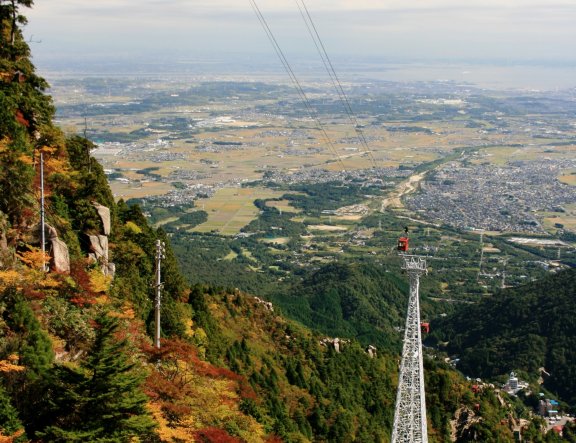
Gunma Top 10: Attractions & Things to Do

Guide to Ghibli Museum, Mitaka
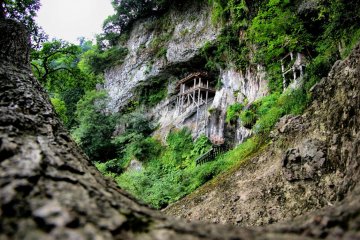
Top 10 Destinations in Tottori
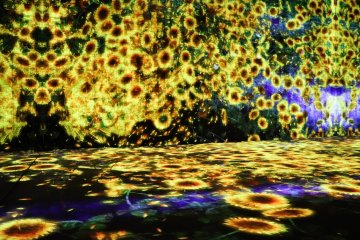
Digital Art Museum: TeamLab Borderless
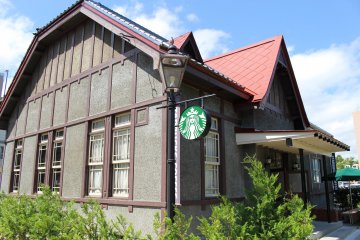
10 Unique Starbucks in Japan

Two New Demon Slayer Attractions Are Opening at Universal Studios Japan
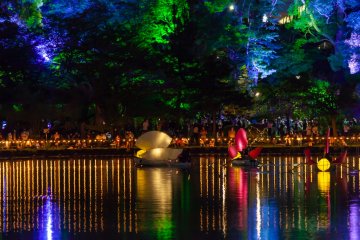
YohaS Night Art Festival at Chiba Park 2024
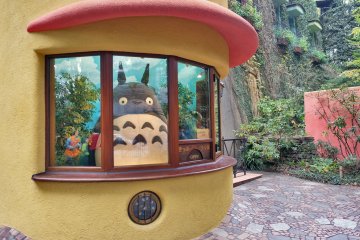
Anime Museums in Tokyo

CRAFT SAKE WEEK 2025
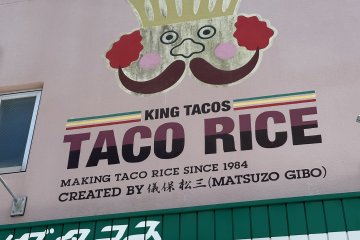
King Tacos in Kin Town
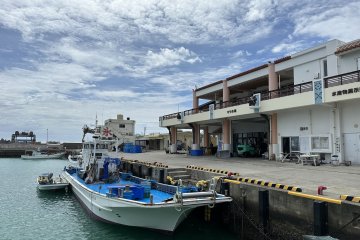
Uminchu Shokudo in Yomitan

Mikasa Matsuyama in Naha
Discover japan travel, know before you go with our guides, browse our event calendar for things to do, travel agency, concierge services and tours, destinations, find where to go in japan, featured on japan travel.
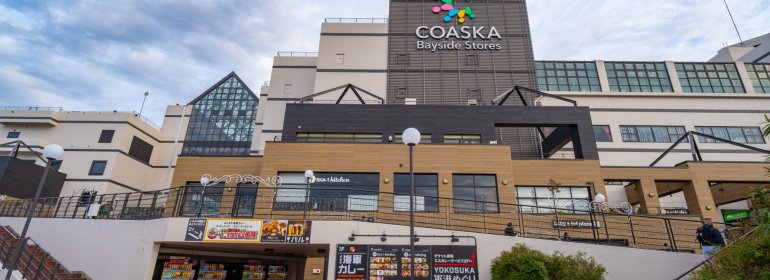
Coaska Bayside Stores
Shopping and dining with yokosuka port views.

A Kanagawa Adventure
Find an experience for you, top 10 on japan travel.
- Recommended

2024 Grand Sumo Tournaments

Sapporo Beer Opens New Brewery in Tokyo’s Ebisu

Mount Omuro

Haneda Airport Ranked World's Cleanest

Tokyo One of the World's Most Walkable Cities

Valley of Witches: a New Ghibli Park Attraction

Guide to Golden Week

Kurobe Unazuki Canyon Route to Link with Tateyama Kurobe Alpine Route

CRAFT SAKE WEEK

Nago Grocery Store

YohaS Night Art Festival at Chiba Park

Guide to Bringing Medicines Into Japan

Sanja Matsuri

Your Name: Real-Life Locations in Tokyo

Hachiko Statue in Shibuya

Japanese Urban Legends

Daikoku Car Meet

Iwatayama Monkey Park

Shibuya Crossing

Guide to Suica Cards
Our travel agency, latest on japan travel, discover japan's prefectures, discover our community, latest reports from our members.
Let us know how we can help.

The Ultimate Itinerary for a Trip to Japan: Unforgettable 7, 10 and 14 Day Journeys (Updated 2024)
Some destinations reward spontaneity – in Europe, cheap flights and rail passes give you the freedom to wake up in the morning and choose your next destination on a whim. Japan, on the other hand, rewards forward planning.
The country’s abundance of both natural and manmade attractions, combined with its high standard of living and general efficiency, make it a fairly pricey destination. The more you plan, the better you can mitigate the damage to your wallet, and get the most out your trip – no matter how long you plan to stay.
These itineraries are designed to inspire you to build your own trip. Based around a few key highlights that represent both modern and ancient, they’re crafted to give you a rich and satisfying experience of Japan in 7, 10 or 14 days. Let’s jump right in!
Psst: want more tips for planning a trip to Japan? Check our rail pass guide and cheap eating tips .
- 1 Getting Around
- 2 7 Day Itinerary: Tokyo and Mt Fuji (Fuji Five Lakes)
- 3 7 Day Itinerary: Osaka, Kyoto and Nara
- 4 10 Day Itinerary: Tokyo, Mt Fuji and Kyoto
- 5 10 Day Itinerary: Osaka, Kyoto, Nara and Hiroshima
- 6 14 Day Itinerary: Tokyo, Mt Fuji, Osaka, Kyoto, Nara, and Hiroshima
Getting Around
Before we get to the itineraries, there's one important piece of planning to keep in mind – whether or not to get a JR pass . A Japan Rail (JR) pass is exclusively available to tourists, and grants you unlimited travel on JR trains within Japan, including the world-famous bullet trains. Depending on your itinerary, this will save you time and money vs buying individual train tickets within Japan. But importantly, you must purchase the pass before you arrive in Japan . We recommend ordering from Klook for their low prices and 10-day global delivery.
We've marked the itineraries that we recommend the JR pass for below, but for a more in-depth guide, be sure to read our full guide The Japan Rail Pass: Is It Worth The Cost?
7 Day Itinerary: Tokyo and Mt Fuji (Fuji Five Lakes)
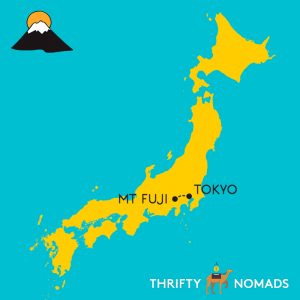
Get the essentials of urban and rural Japan with four days in the unforgettable capital, followed by three days of reflection and recovery under the shadow of Mt Fuji.
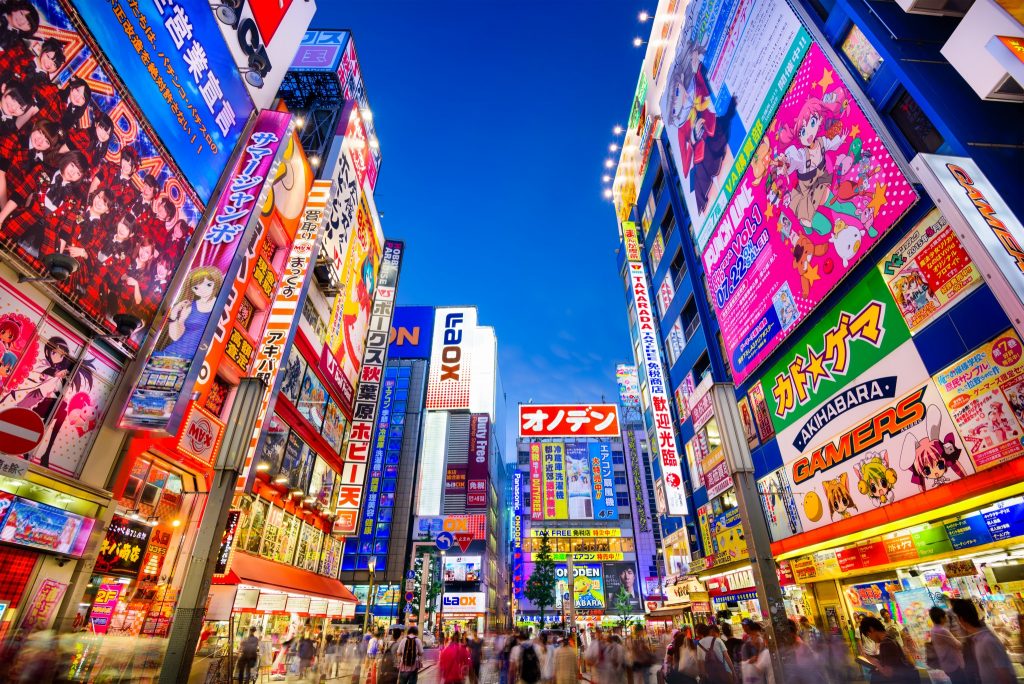
Tokyo: 4 Days
- Highlights: Go crazy in Japan’s frenetic, eclectic and incomparable capital. Live out a manga fantasy in Akihabara , drink shoulder to shoulder with locals in Roppongi , and see the world’s largest metropolis in 360 degrees from the top of the Tokyo Tower . And for an immersive digital art experience, check out the popular teamLab Planets TOKYO Museum .
- Where to stay: Public transport is comprehensive, so search far afield. Roppongi neighborhood if you like nightlife, Shinjuku to be close to the beating heart. Use TripAdvisor to compare hotel and hostel deals across all booking sites along with thousands of reviews.
- What to eat : Chains like Sushiro ($1 / plate train sushi) and the ubiquitous Gyudon houses like Yoshinoya can get you a delicious local meal for a budget price. Check out a Maid Cafe for an authentic (if risque) local experience!
Mt Fuji: 3 Days
Tip: If you don't have 3 days to spend in Fuji, you can book a full day tour from Tokyo .
- Highlights: See why this 3776 meter high mountain has inspired artists, writers and pilgrims for countless centuries. Soak up the volcanic waters in the Five Lakes District , a major tourist destination since the 1920s, it’s still possible to get away from the crowds and immerse yourself in nature.
- Where to stay: The Five Lakes Region contains a wealth of hotels and resorts. If you’re striking out, try a bit further away from (but still in plain view of) the mountain in Hakone district. Compare across booking sites with TripAdvisor's hotel search.
- What to eat: Try the regional speciality: udon noodles, often served cold in a delicate, flavorful sauce.

7 Day Itinerary: Osaka, Kyoto and Nara
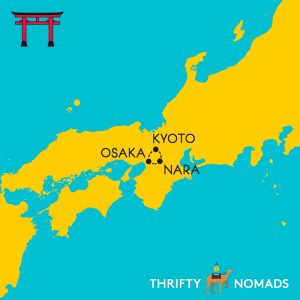
Osaka: 3 Days
- Highlights: Japan’s second biggest city is a microcosm of everything that magnetizes visitors to the country. Gaze in awe at giant plastic sea creatures and effusive street vendors in Dōtonbori , wander among the tuna merchants at the fish market, and connect with history at the 16th century Osaka Castle . Get to know Osaka like a local with a highly-rated walking tour .
- Where to stay: Try AirBNB and trust the train network if you find a good option a little outside of town. For hotels and hostels, compare across booking sites using TripAdvisor .
- What to eat : The same budget chains in Tokyo will serve you well here (I practically moved in to my nearest Sushiro!), but you really must try the street food on Dōtonbori .
Kyoto: 2 days
- Highlights: After the urban grunge of Osaka, it’s time to embrace the Japan’s spiritual side at the ancient seat of empire. It’s still possible to see Geisha in the historic Higashiyama District, which you can even explore by rickshaw , and the subtle beauty of temples like Kinkaku-ji is simply too much to put into words. Make sure you catch everything there is to see with a custom-made walking tour with a local . Go!
- Where to stay: Downtown Kyoto is the most convenient spot for sightseeing and will allow you to cover much of the historic town on foot. Try Airbnb or compare hotels and hostels across booking sites with TripAdvisor .
- What to eat : Restaurant prices can be steep so take a trick from the locals and stock up on tasty (and filling) instant meals at chain stores like the ubiquitous 7/11
Nara: 2 days
- Highlights: Stick with the theme of history but swap the Geisha for sacred deer in Nara , Japan’s capital from AD 710 to 794. In Nara park you can sip green tea in a traditional “Chaya” tea house and watch the deer frolic over 700 year old ground. Hire a local guide to make sure you catch it all!
- Where to stay. While it’s possible to day trip from Osaka, the town is well worth staying overnight – guest houses are abundant and there are even hotels in the historical park! You can compare all your options and find the best price using TripAdvisor .
- What to eat . Vegetarian food and pickled delicacies are the local specialities, due to the surrounding mountains and buddhist communities.

10 Day Itinerary: Tokyo, Mt Fuji and Kyoto
Got 10 days? Let’s do it right. Take a deep dive into the capital, cleanse yourself with nature in Mt Fuji and the surrounding 5 Lake District, and transport yourself back in time in Kyoto – a rich overview that will leave you feeling refreshed, satisfied and exhilarated.
For this itinerary, we recommend a JR pass . It will save you precious travel time on the bullet train, and save you money on train fares between, and within, Tokyo and Kyoto. Remember to order your pass BEFORE you enter Japan (we recommend Klook ). If you're still unsure, be sure to check out our in-depth guide on whether the JR pass is worth it .
- Highlights: Lose yourself among the neon lights of Shibuya and have a drink at the Monster Cafe . Watch locals transform themselves into Manga characters on an anime/gaming tour in Akihabara , drink hot sake with locals in Roppongi, and let digital art completely immerse your senses in Japan’s unforgettable capital.
- Where to stay: Public transport is comprehensive so search far afield. Roppongi neighborhood if you like nightlife, Shinjuku to be close to the beating heart.
- What to eat : Tokyo has unlimited dining options – if you’re on a budget, try Gyudon and brave the budget chains where it’s still possible to order with ancient vending machine located by the kitchen!

- Highlights: Make all your instagram followers jealous as you soak up the steamy volcanic waters under the shadow of Japan’s largest and most famous mountain.
- Where to stay: The Five Lakes Region near the mountain contains a wealth of hotels and resorts. If you’re striking out, try a bit further away from (but still in plain view of) the mountain in Hakone district.
Kyoto: 3 days
- Highlights: The twin temples Kinkaku-ji and Ginkaku-ji (gold pavilion and silver pavilion) have been carrying out an architectural and spiritual debate for centuries. It’s still possible to see Geisha in the historic Higashiyama District, which you can even explore by rickshaw . Make sure you catch everything there is to see with a custom-made walking tour with a local .
- Where to stay: Downtown Kyoto is the most convenient spot for sightseeing and will allow you to cover much of the historic town on foot.
- What to eat : Live out a warrior fantasy at the Samurai Restaurant . It’s a bit kitsch and definitely designed for the tourists, but so what – you’re on holiday!
10 Day Itinerary: Osaka, Kyoto, Nara and Hiroshima
Get the best of Japan today and yesterday in racey Osaka, tranquil Kyoto and serene Nara, before coming face to face with perhaps the darkest period of Japan’s history at Hiroshima.
For this itinerary, we recommend a JR pass . It will save you tons of travel time on the bullet train to Hiroshima, and save money on train fares within the Osaka/Kyoto/Nara area. You need to order your pass BEFORE you enter Japan (we recommend Klook ). If you're still unsure, be sure to check out our in-depth guide on whether the JR pass is worth it .
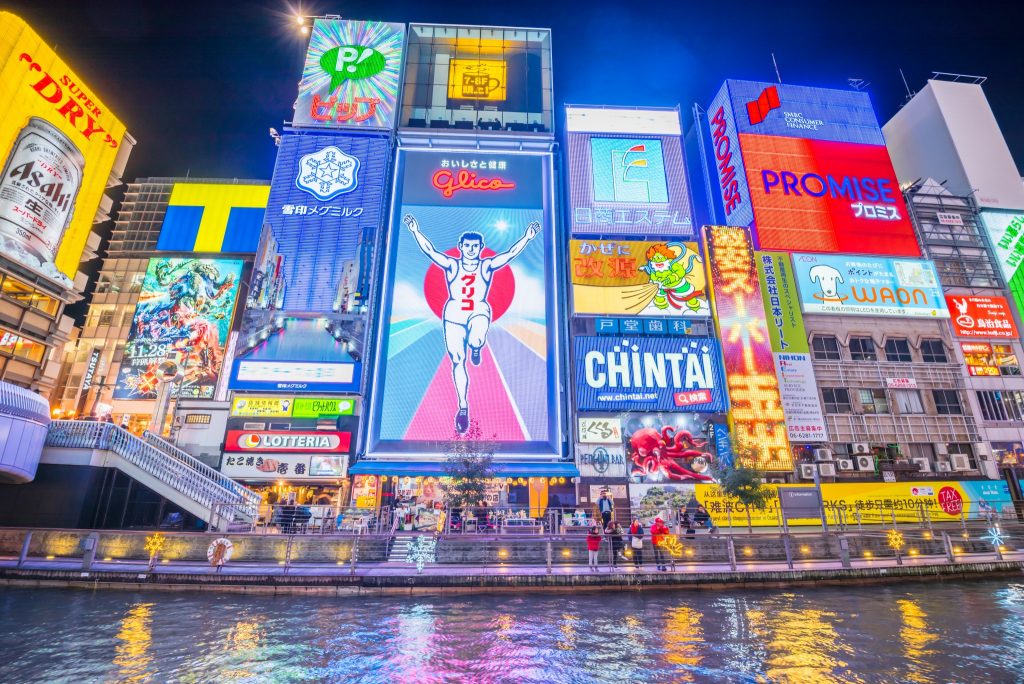
- Highlights: “Forget Tokyo,” I was told when I planned my first trip to Japan, “Go to Osaka!” While the capital is awesome, Japan’s second city more than holds its own. Here you can gaze in awe at giant plastic sea creatures and effusive street vendors in Dōtonbori, wander among the tuna merchants at the fish market, and connect with history at the 16th century Osaka Castle. Get to know Osaka like a local with a highly-rated walking tour .
- Where to stay: Try AirBNB and trust the train network if you find a good option a little outside of town.
- What to eat : Try the street food on Dōtonbori! A nightfood tour will help you find the best spots and eat where the locals eat!
- Highlights: Say goodbye to the furious pace of modern Japanese city life, and embrace the tranquil, spiritual and ancient in Kyoto. Believe it or not, but it's still possible to see Geisha in the historic Higashiyama District, even from a rickshaw . The gentle beauty of temples like Kinkaku-ji is simply too much to put into words. Make sure you catch everything there is to see with a custom-made walking tour with a local . Go!
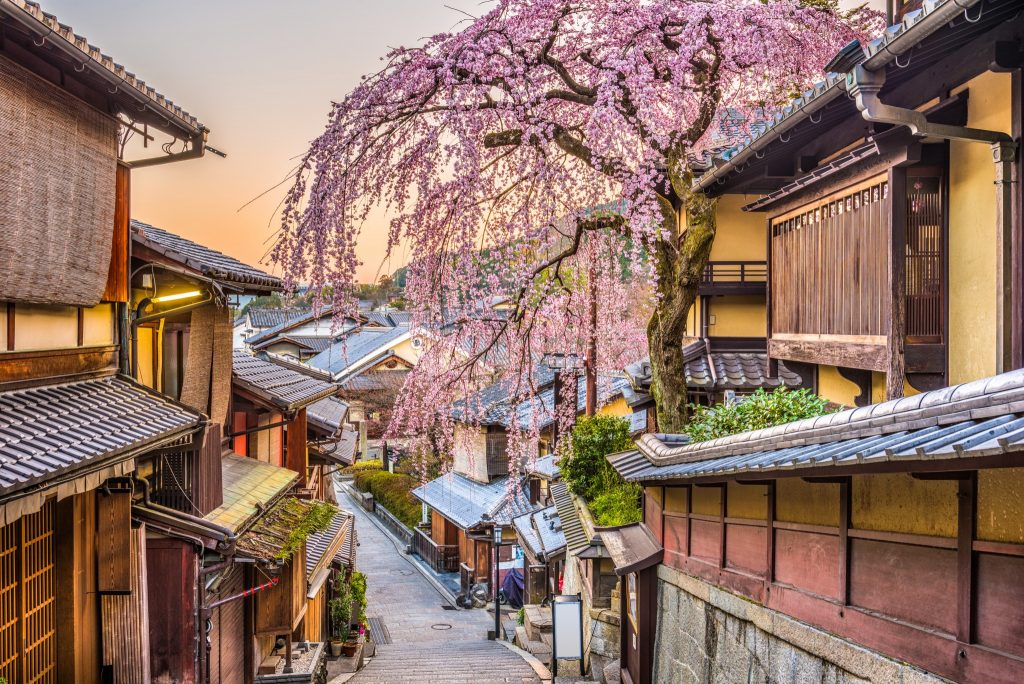
- Highlights: In Nara park you can sip green tea in a traditional “Chaya” tea house and watch the deer frolic over 700 year old ground. Hire a local guide to make sure you catch it all!
- Where to stay. While it’s possible to day trip from Osaka, the town is well worth staying overnight – guest houses are abundant and there are even hotels in the historical park!
- What to eat . Thank the Buddhist communities in the surrounding mountains for the abundance of local vegetarian food.
Hiroshima: 2 days
- Highlights : Infamous for its more recent history (which you can learn from a local on a cycling tour ), the rebirth of Hiroshima from ashes into a vibrant modern city is reason to visit in itself. In addition to haunting museums and poignant relics to the nuclear attacks, Hiroshima is the gateway to rural Chūgoku , a chance to tip your toes into Japan’s unspoiled wilderness.
- Where to stay : Hiroshima is drenched in hotels. Stay near the train station for convenient access to the city center and surrounding attractions.
- What to eat : Try the local okonomiyaki, a delicious, savory grilled pancake smothered in sauces and toppings.

14 Day Itinerary: Tokyo, Mt Fuji, Osaka, Kyoto, Nara, and Hiroshima
This is an itinerary for people who want it all! You’ve got two weeks, you’ve got your rail pass , and you’re going to jolly-well make the most out of your time. Well, if you’ve got the energy, then here’s how it could be done. It’s everything you see above, rolled into one epic itinerary for the bold and brave.
For this itinerary, we definitely recommend a JR pass . With the distance being covered from the east to the west of country, the amount of time and money this will save is a no-brainer. You must order your pass BEFORE you enter Japan (we recommend Klook ). But if you're still unsure, be sure to check out our in-depth guide on whether the JR pass is worth it .
- Highlights: Start with the blast of energy, neon, weirdness and glamour that is Japan’s capital. Opportunities for entertainment are virtually unlimited – feel the awe of the emperor at the imperial palace, indulge in a retail fantasy in Ginza, and finish the day with a well needed pint of Asahi in Roppongi.
- Where to stay: Public transport is comprehensive so search far afield. Roppongi neighborhood if you like nightlife, Shinjuku to be close to the beating heart. Use TripAdvisor to compare hotel and hostel deals across all booking sites along with thousands of reviews.
- What to eat : The real question is what NOT to eat. You could go to a different restaurant in Tokyo everyday for 20 years and still not run out of options. If you’re on a budget, look to the local fast food chains – if you’re on a tight budget, trust to the 7/11!
Mt Fuji: 2 Days
- Highlights: Hear a rumble? Fuji-san isn’t just a stunning, snow capped mountain, it’s still an active volcano! Soak up the volcanic waters and watch Fuji’s towering form from the Five Lakes District , a popular spot for locals and and travelers.
- Where to stay: The Five Lakes Region contains a wealth of hotels and resorts. If you’re striking out, try a bit further away from (but still in plain view of) the mountain in Hakone district. Compare across booking sites with TripAdvisor's hotel search.
- What to eat: Try the regional speciality: udon noodles, often served cold in a delicate, flavorful sauce.
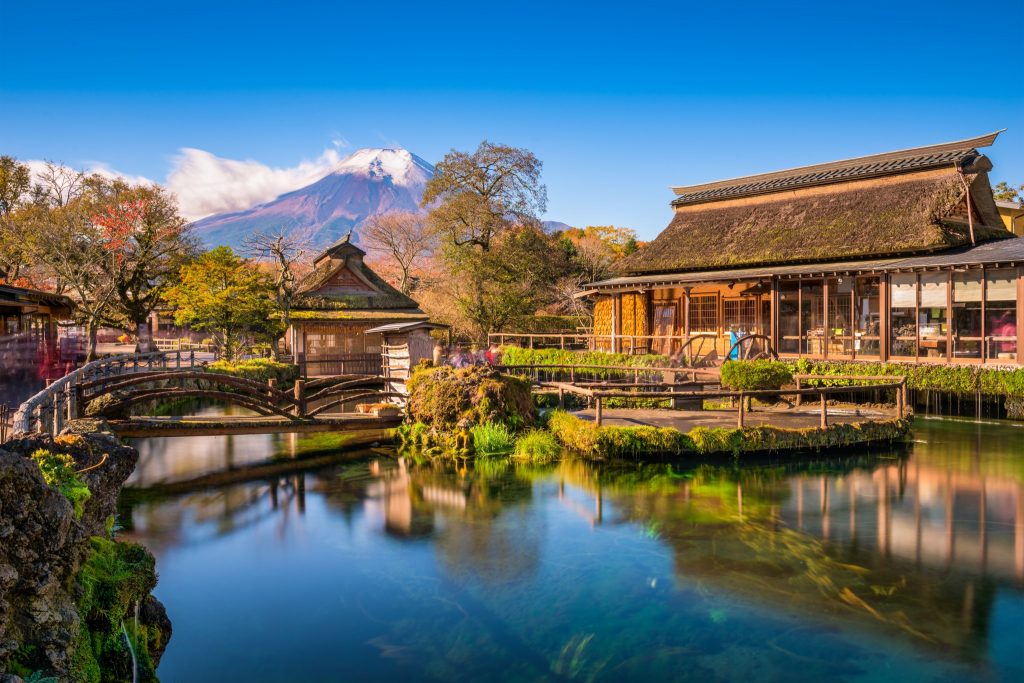
Osaka: 2 Days
- Highlights: Japan’s second biggest city is a microcosm of everything that magnetizes visitors to the country. Gaze in awe at giant plastic sea creatures and effusive street vendors in Dōtonbori , wander among the tuna merchants at the fish market, and connect with history at the 16th century Osaka Castle .Get to know Osaka like a local with a highly-rated walking tour .
- Where to stay: Try AirBNB or TripAdvisor and trust the train network if you find a good option a little outside of town.
- What to eat : The same budget chains in Tokyo will serve you well here (I practically moved in to my nearest Sushiro!) but you really must try the street food on Dōtonbori .
- Where to stay: Downtown Kyoto is the most convenient spot for sightseeing and will allow you to cover much of the historic town on foot. Try Airbnb or compare hotels and hostels across booking sites with TripAdvisor .

- Where to stay. While it’s possible to day trip from Osaka, the town is well worth staying overnight – guest houses are abundant and there are even hotels in the historical park! You can compare all your options and find the best price using TripAdvisor .
- Where to stay : Hiroshima is drenched in hotels. Stay near the train station for convenient access to the city center and surrounding attractions. Check both Airbnb and TripAdvisor for the best prices.
With the abundance of incredible places to visit in Japan, the only trouble you'll have with planning a trip here is which itinerary to follow. Tell us, what are your must-visit's on a trip to Japan?
15 things to know before going to Japan

Mar 31, 2024 • 7 min read
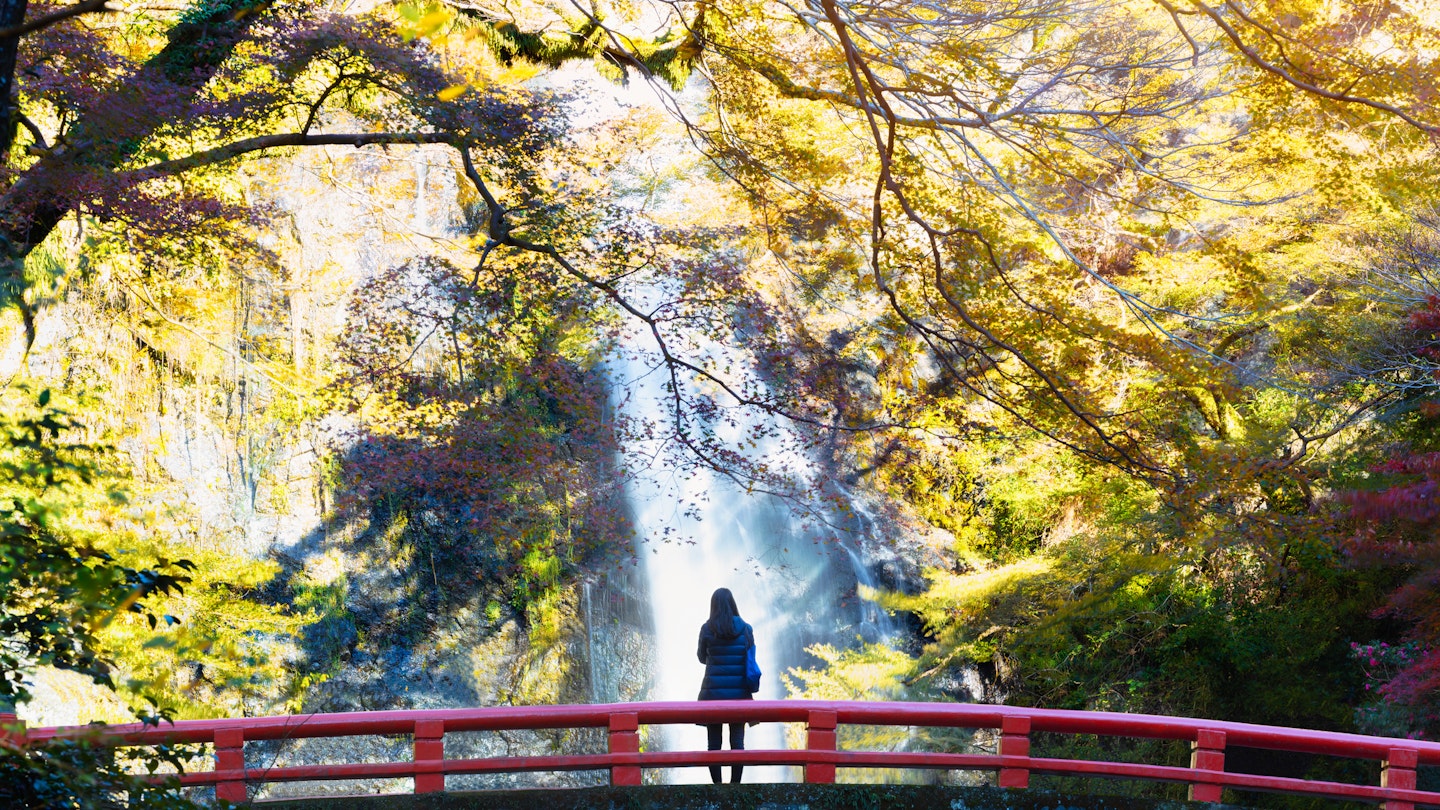
Be ready for a visit to Japan with these tips on health, safety and etiquette © pat138241 / Getty Images
Japan has a reputation as an etiquette-bound place that can be intimidating for first-time visitors.
The truth is, though, that the traditions here are no more formal or constricting than in many other destinations around the world. Moreover, most locals are more than willing to help out or give foreign travelers a pass for any perceived faux pas.
As with just about anything in life, expectation management is key. Put your mind at ease with our top tips for smooth traveling in Japan .
1. Book accommodation in advance (and arrive at the right time)
You can probably get a room at a basic business hotel without a reservation in a pinch, but why risk it? Top accommodations can book up weeks or even months in advance, so it's best to plan ahead.
Particularly busy travel periods include the first week of January, cherry blossom season (late March through April, depending on the destination), “Golden Week” (April 29 to May 5) and August.
You should also keep in mind that smaller inns or ryokan (traditional Japanese inns) often have fixed check-in times outside of which staff won’t be present, and rooms won’t be made up. Coordinate your arrival time in advance.
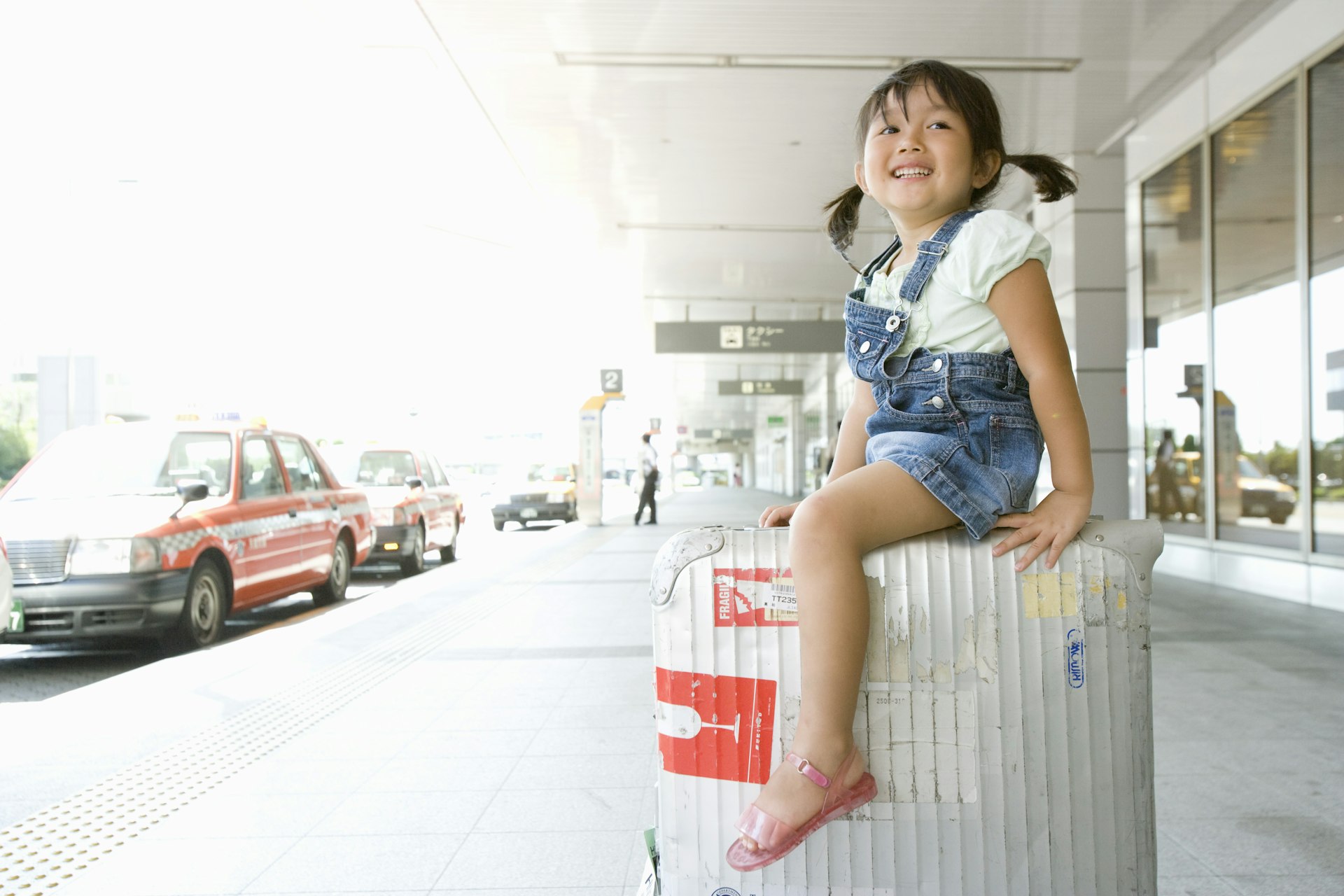
2. Pack light for a visit to Japan
Since hotel rooms in Japan tend to be small, especially in cities, there is little room for large suitcases – which can also be a pain to wrangle on public transport . Packing on the lighter side is always a good idea, but especially advisable for Japan.
Note that religious sites such as Buddhist temples and Shintō shrines don’t have dress codes. High-end restaurants, bars and clubs sometimes do, but that usually just means no sleeveless shirts or sandals on men.
Keep in mind that you might find yourself sitting on the floor when dining out, which can be uncomfortable in short (or tight) clothing.
3. Buy a data-heavy SIM card at the airport
Finding your way around in Japan can be tricky. The address system is notoriously difficult to navigate – even for locals – so smartphones with navigation apps have been a real boon for travelers.
This means you're likely to be using a substantial amount of data getting from place to place, so buy a data-heavy SIM card at the airport upon arrival.
Ready to go to Japan? Here are 24 of the best things to do when you get there

4. Bring shoes you can easily slip on and off
Comfortable walking shoes are a must. You’ll also likely have to take your shoes off frequently at religious sites, traditional inns and some restaurants – you’ll thank yourself later if you pack shoes that are easy to slip on and off.
Since you’ll be slipping into a pair of communal slippers when you take your own shoes off, many visitors prefer to wear socks.
5. Learn how to use a bidet toilet
Called “washlets,” Japan’s high-tech, electronic bidet toilets will wash and dry your delicate parts with the touch of a button. (Don’t worry about any language barrier; the pictograms on the buttons are easy to understand).
Other toilet customs in Japan might throw you for a loop. Motion-sensor-activated sound machines are intended to conceal, um, sensitive noises. Also expect dedicated toilet slippers in shoes-off establishments.
Note that there is frequently a lack of towels and hand dryers (locals carry small cloths with them for this reason).
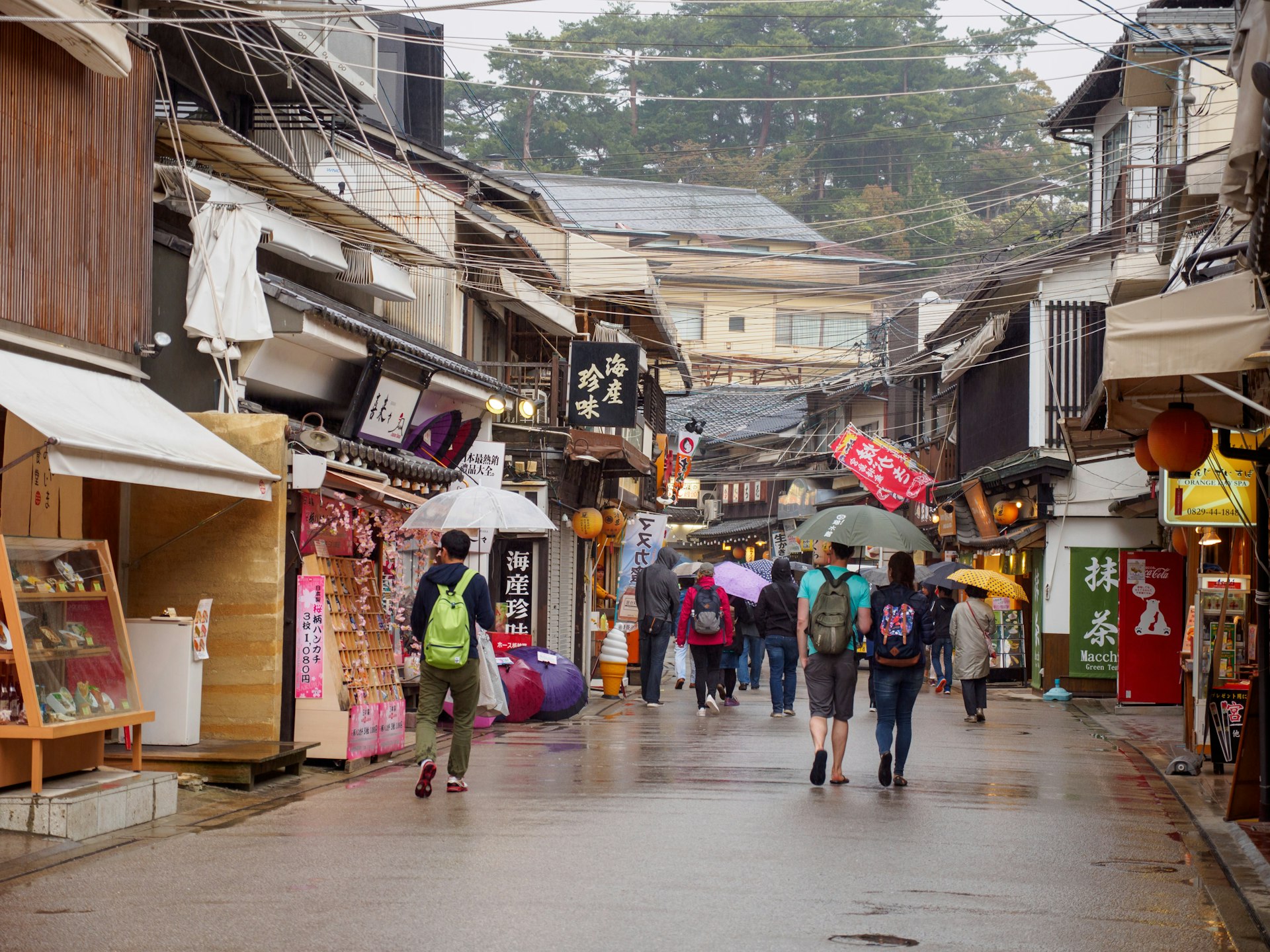
6. Come prepared for the weather
Summers in Japan are hot and humid, which can mean a real risk of heatstroke. Carry water with you, and a folding umbrella with UV blocking is useful – and does double duty in case of a sudden shower.
Late June is the start of the annual rainy season, when it can rain without end for days; this can last a few weeks or through most of July.
Rains, as well as punishing winds, are likely again during typhoon season , which runs from September through October (earlier in Okinawa ).
Typhoons can cause serious travel disruption; monitor the situation with the Japan Meteorological Agency ’s storm and other weather warnings, which are available in English. Winters can get chilly, and Tōhoku and Hokkaidō up north can get huge dumps of snow.
Japan’s ubiquitous convenience stores are handy for weather-related necessities like umbrellas, hats, cooling wipes and pocket warmers.
7. Make sure to carry cash...
In rural Japan and at older family-run businesses in cities, credit cards may not be accepted. It’s wise to assume you’ll need to pay cash at country ryokan and smaller restaurants and shops; stock up when you’re in a town with an ATM (cashpoint).
To pay as the Japanese do, place your cash or card in the small tray at the register rather than handing either to the cashier.
8. ...But don’t worry about tipping
Though tour guides who regularly take foreign tourists around might expect extra, Japan has no custom of tipping, and an attempt to add to your bill will more often than not fluster or embarrass staff.
In lieu of tipping, some bars and restaurants will charge a flat-rate service fee, usually around ¥300–500 per person; others, typically fancy ones, will automatically add a 10% service charge to the bill.
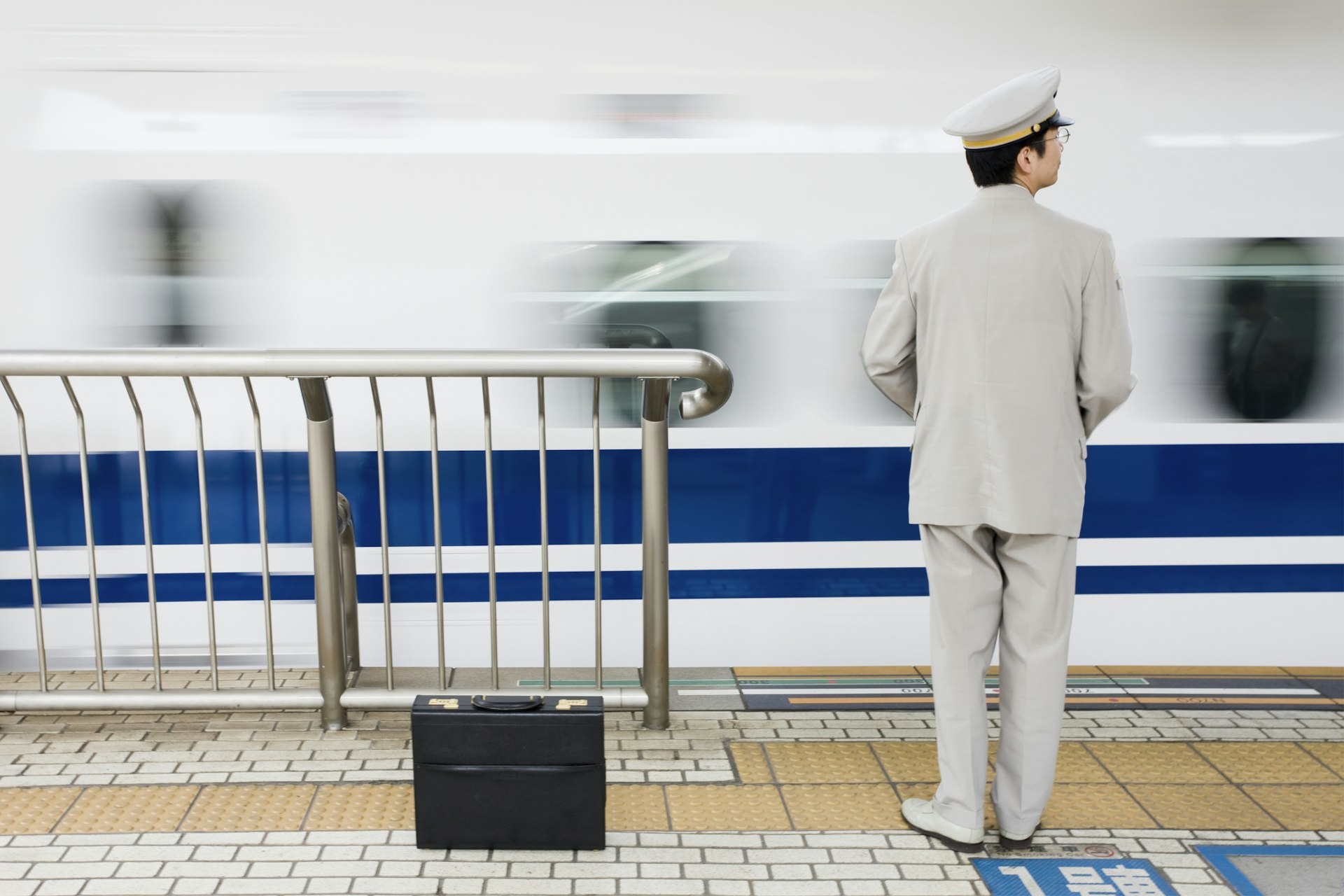
9. Learn the art of queueing in Japan
The Japanese are big on queues, forming neat lines everywhere from check-out counters to train platforms. (Regarding the latter: after the train doors open, it’s everyone for themselves when it comes to scoring a seat.)
10. Stand to the left (or to the right)
Always ride on one side of the escalator – but which side depends on where you are. In Kanto and eastwards, it’s to the left; in Kansai and westwards, it’s to the right. (The dividing point is somewhere just west of Nagoya ).
Incidentally, train operators want passengers to stand on both sides of the escalator and refrain from walking altogether, even if commuters have so far shrugged at these guidelines.
11. Note when the last train leaves
City subways run until 1am at the very latest. If you miss the last train for the night, the alternative is to catch a taxi, which can be expensive.

12. Avoid the morning commute in Tokyo
For Tokyoites , the morning commute is a contact sport. On weekdays from 7:30am to 9am, millions squeeze into trains across the city, sometimes helped along by station staff who make sure everyone’s packed in.
Shinjuku Station, the busiest in the world, sees an average of over 3.5 million commuters daily; there are more than 200 exits leading in and out of the complex.
13. Eating in public is generally a no-no in Japan
It’s considered bad form to eat in public, especially while walking. Exceptions include the shinkansen (bullet train) and other reserved-seat limited-express trains, where it is customary to eat a bentō (boxed meal) on board; plus at festivals or market streets with food vendors; on a picnic; and of course if you're eating ice cream.
It’s also okay to take sips from a resealable beverage container, like a water bottle.
14. Know what to do in an earthquake or tsunami
Japan is one of the most seismically active places on the planet. While strong earthquakes are rare, minor temblors happen all the time. If this occurs during your time here, stay calm and take your cue from those around you.
Head under a table or stand in a doorway if the shaking picks up; strict building codes generally keep harm to a minimum.
Rarer but more dangerous tsunami can follow a significant quake. Should this occur, listen for tsunami warnings and get to higher ground fast if you are near the coast.
15. Learn some Japanese lingo
English is widely spoken in cities and around major tourist attractions; in rural areas, though, it can be hit or miss. Some Japanese words that will come in handy when dining out:
• omori (large portion, often free at ramen stalls) • okawari (refill) • mochikaeri (takeaway) • tennai de (eat-in) • onegai shimasu (please). Follow up any of your orders or requests with this; for example, if you want tea, say, “O-cha onegai shimasu.” • sumimasen (excuse me) • arigato gozaimasu (thank you). Because it’s a bit of a mouthful, it’s tempting to shorten it to simply arigato . Think of it as the difference between “thank you” and “thanks” and go for the politer “arigato gozaimasu.” • toire (toilet; pronounced “to-ee-rey”)
This article was first published Apr 6, 2022 and updated Mar 31, 2024.
Explore related stories
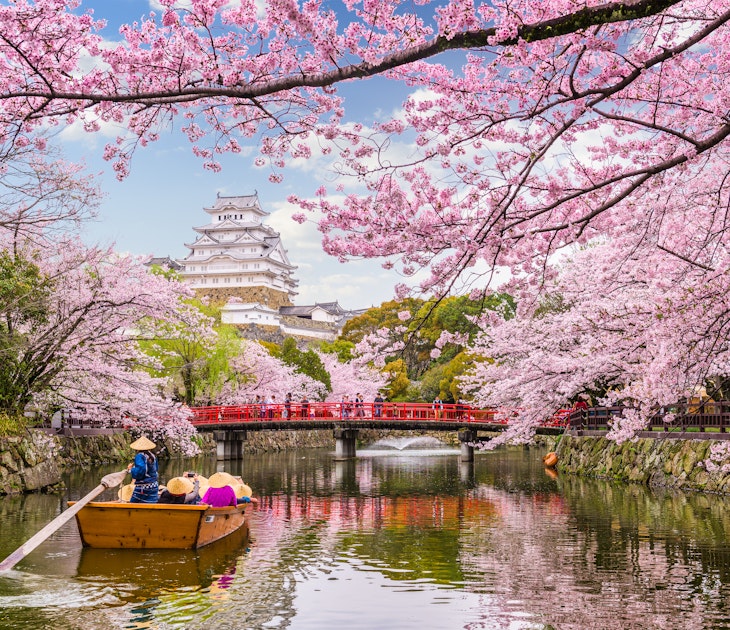
Tips & Advice
May 3, 2024 • 14 min read
Should you book your next trip with cash or points? Here's an expert's guide and everything you need to be considering.

May 1, 2024 • 9 min read

Apr 14, 2024 • 6 min read

Apr 3, 2024 • 17 min read

Mar 28, 2024 • 7 min read

Mar 28, 2024 • 6 min read

Mar 26, 2024 • 8 min read

Mar 25, 2024 • 6 min read
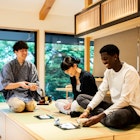

- Switzerland
- The Netherlands
- National Parks
- Affording Travel
- Photography
- Responsible Travel
- Worldschool
- Wanderlust Guides
- Travel Planning
- Work with Us
Asia , Japan , Travel
Two weeks in japan – the best japan itinerary for first-timers.
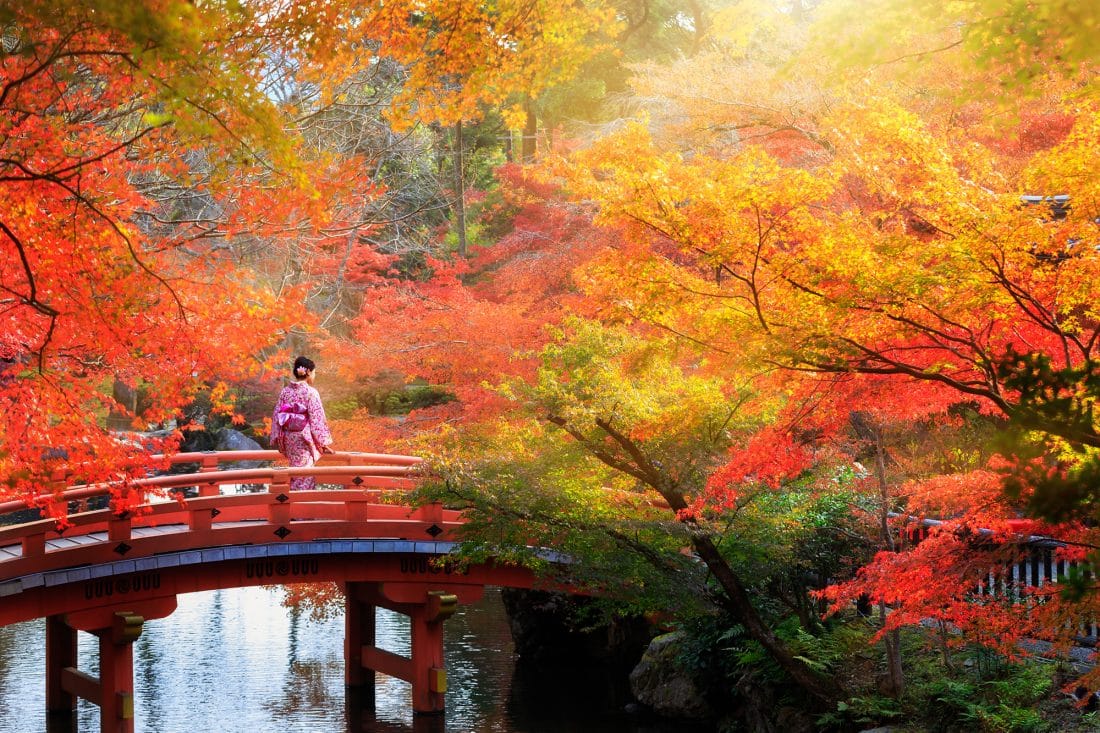
This first-timer’s Japan itinerary is perfect for your first visit to this incredible country. Discover the amazing things to do, food to eat, and places to visit in Japan in this complete guide.
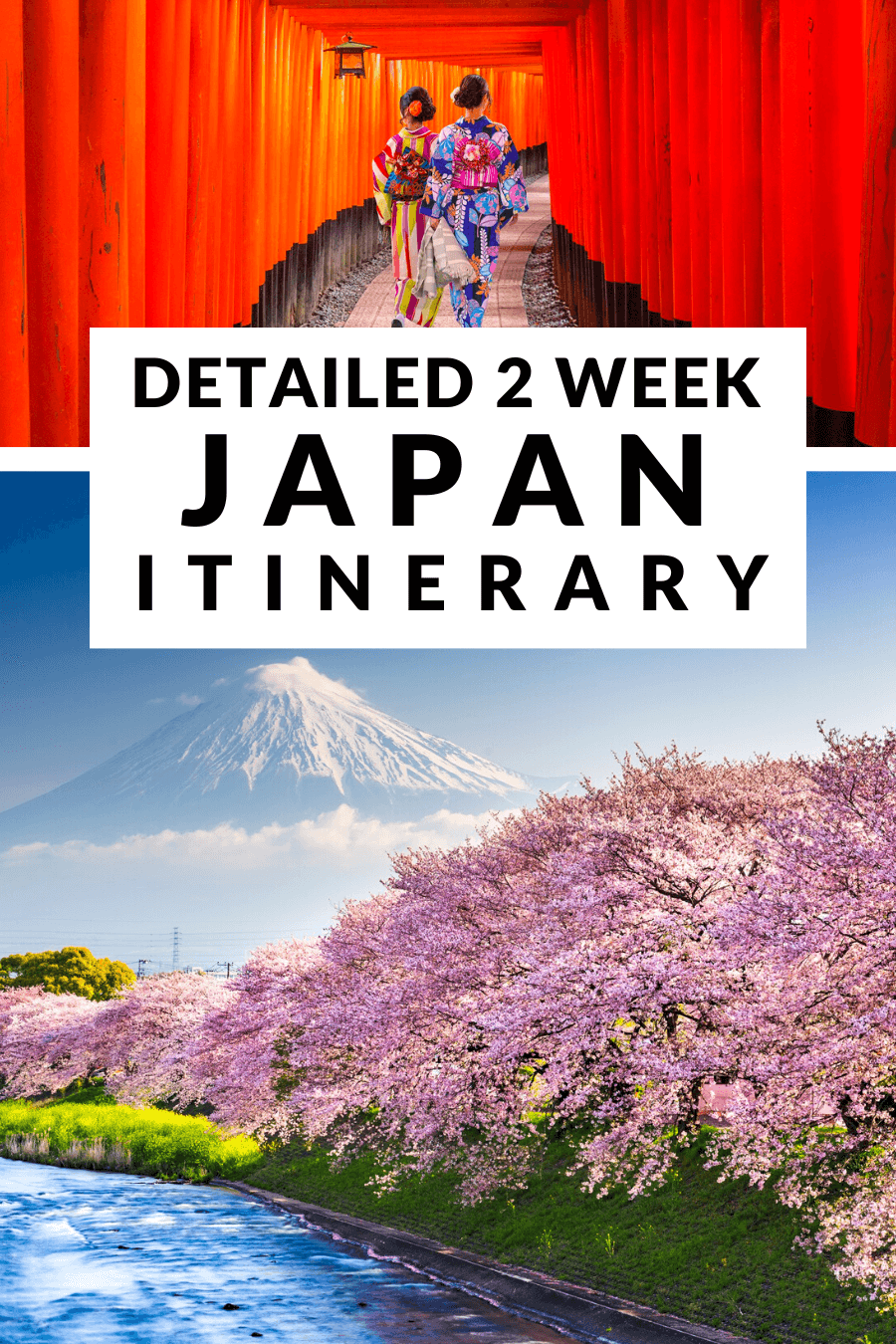
- The Perfect First Timer’s Japan Itinerary: The Best Places to Visit in Japan
This post contains affiliate links.
I’m so excited to share this Japan 2 week itinerary with you! We just booked tickets to go back to Japan again in 2024 and I’m so excited to revisit all of these places and add some new ones too! This will be our second Japan trip, and I can’t wait!
I have two good friends who live in Japan and they’ll only be there for another year, so I knew that my time to go to Japan was now! This was my first stop in Asia and I couldn’t have been more excited! While we’ve spent years in Europe, Asia has always eluded us, so I knew it was time!
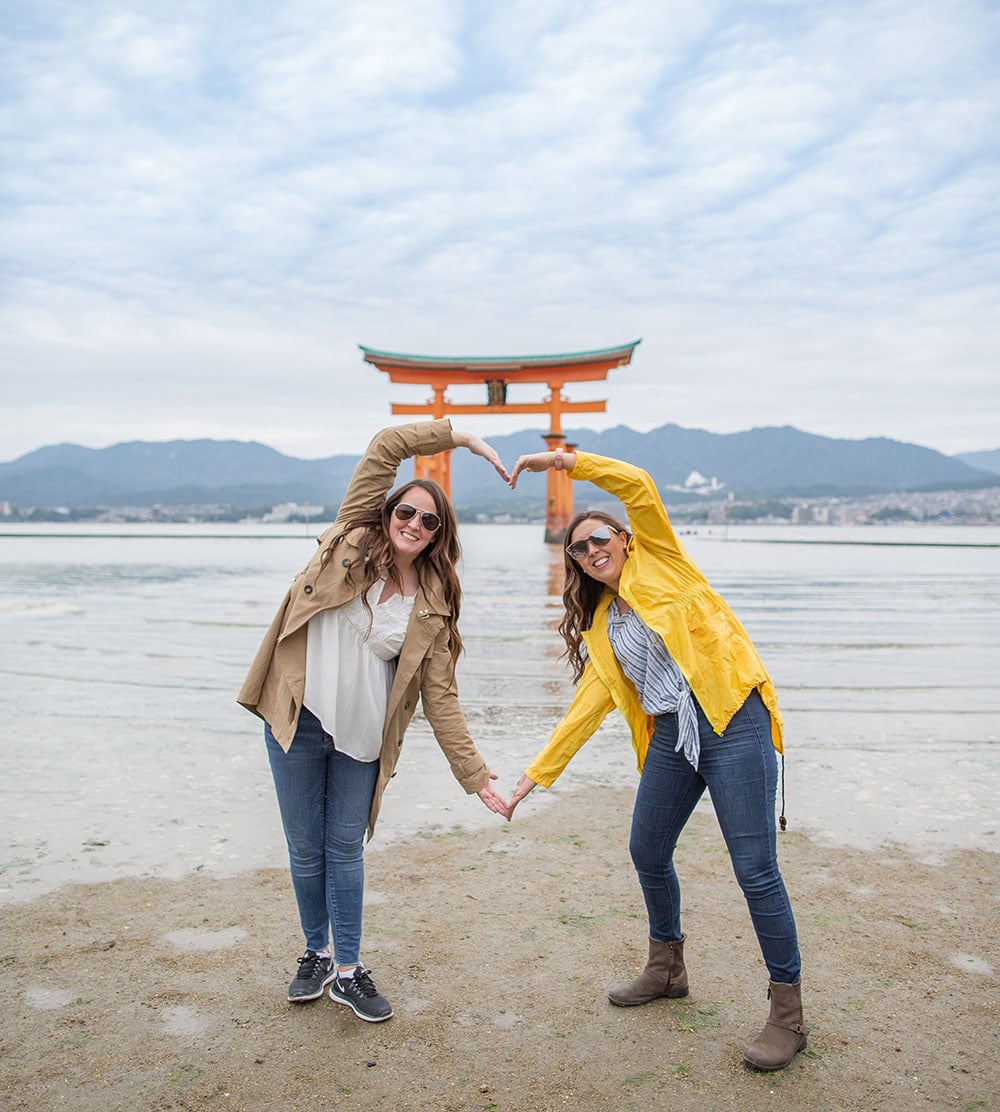
Be sure to check out our Japan Trip Planner to help you get started. It’s a great step-by-step guide to help you plan your trip.
I’ll be totally honest and tell you that I was very anxious before my trip. New continent, new language, new culture, new food. Just a fear of all the unknowns to be honest. But rest assured, once I got to Japan I was feeling great about it all. It really helped to have friends who knew the culture too and I loved these tips for visiting Japan!
Did you know that Japan is one of the safest countries in the world? If you didn’t, don’t feel bad, I didn’t either. I think the number one thing I was totally shocked by was that almost none of the bikes in Japan had locks on them! I saw maybe 3 our entire time there.
The Japanese people are so kind, respectful, and helpful. I was chatting with a British ex-pat in a Japanese garden one morning and he said: “You couldn’t get mugged in this country if you tried!” I’m pretty sure he was right. I never once felt unsafe during our time in Japan.
My friend’s 5-year-old daughter goes to “Yo Chien” or Japanese Primary School and she said that the entire first year of school is dedicated to learning how to be a good person. They serve each other, clean the school, learn manners, and generally learn how to be a respectful human being and be a productive member of society. I think that is definitely more helpful than knowing their ABC’s at 5 years old! There is just so much that we can learn from Japanese culture and its definitely a country worth visiting.
There are so many amazing and unique things to do in Japan . If you’re going for the first time and looking for the perfect Japan trip, I’ve created this Japan itinerary that will explore the basic sites that are easily accessible by train or a bullet train and offer some of the best cultural, culinary, and fun experiences the country has to offer. While there is much more to explore in Japan, this is a really good starting itinerary.
- Planning a Trip to Japan?
If you’re planning a trip to Japan, let me do the work for you. This 2 week Japan Itinerary is a detailed step-by-step guide for how to visit this amazing country.
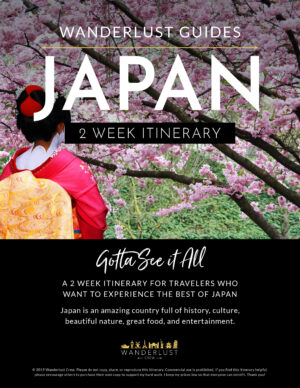
Here's a Short Cut
Getting to Japan
What to pack when you visit japan, japan home rentals, money in japan, what to know before you go to japan, getting around japan how to use your japan rail pass, japan itinerary map, day trip to mount fuji, what to eat in japan, japan itinerary faq, more resources for japan.
Getting to Japan was fairly easy. Flying to Asia from the US can be pricey, but if you know how to get cheap flights, there are always good deals to be found. I spent quite a lot of time perfecting my cheap flight finding skills, so be sure to learn about it here . I spent $600 on tickets from San Francisco to Tokyo.
What to pack for your trip to Japan depends on what time of year you’re going and where you’ll be traveling to. I went the first two weeks of October and it was HOT! It rained on and off several of the days that we were there, but was still very warm and very humid. However, if you go to Northern Japan (great to try hot springs), the weather will be cooler. My friend lives in Misawa and they get huge snowfalls each winter. There is incredible, and affordable, skiing in Northern Japan as well.
If you’re going anywhere between April and October though, this is what I recommend taking to Japan
Here’s what I packed for our own trip to Japan in October:
- 2 sundresses
- 1 pair of jeans
- 1 pair of leggings (for the plane mostly)
- 1 jean jacket (that I hardly used)
- 1 rain jacket (I brought this one and it is great because it’s light but totally waterproof)
- 1 pair of sandals (a pair that can get wet in the rain… these are my favorite travel sandals ever )
- 1 pair of boots (I wore these only one time and regretted it)
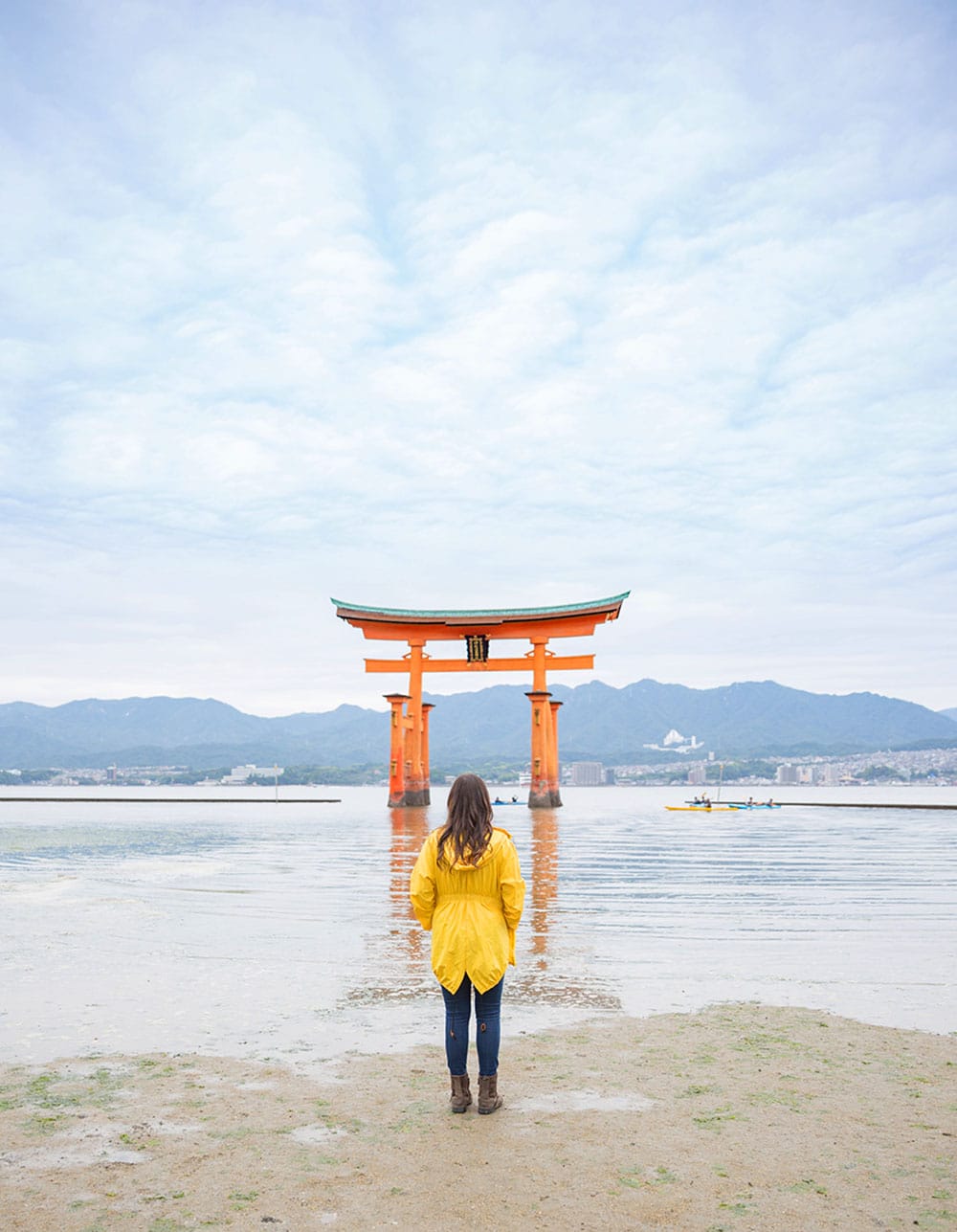
I think if you are sticking to Tokyo and south of Tokyo, this list would be appropriate from April to October. I honestly wish I would have packed more sundresses. I felt like almost everything we did could be done in a dress and it was much cooler!
Where to Stay on your Japan Trip
We were lucky and got to stay with friends at a Military Hotel for about $50/night, but we also stayed in VRBOs around the country. They were affordable, clean, and in good locations. As always, be sure to read reviews and the fine print before booking a VRBO . We love VRBO and use it around the world. I’ve also compiled this list of great and affordable VRBOs in Japan :
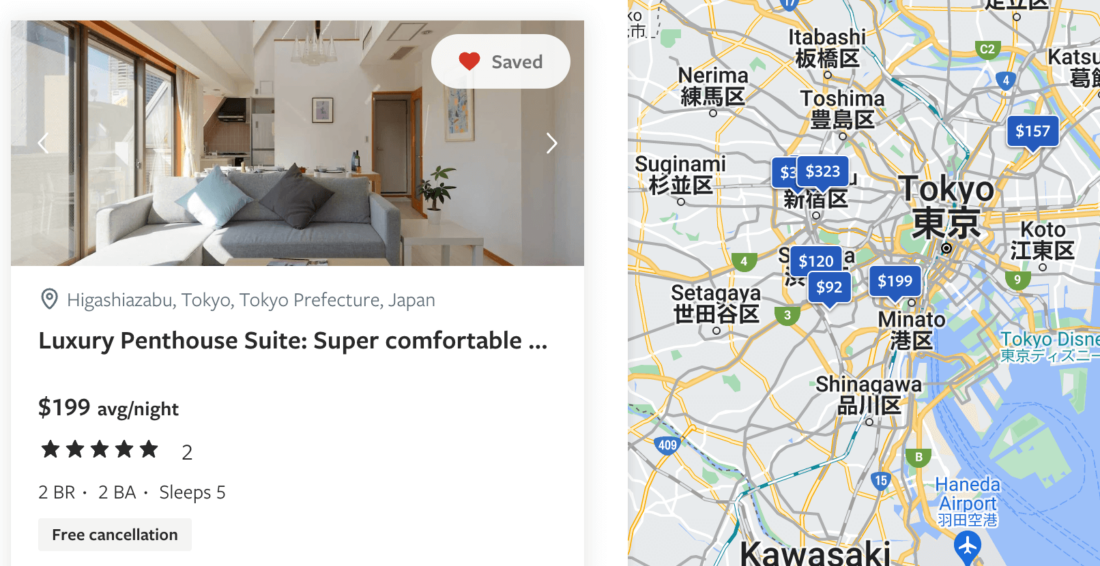
There are also some great hotels in Japan if VRBO is not your thing!
The currency in Japan is the Yen. Converting Japanese Yen to US Dollars is really simple. 100 Yen is Equal to about $0.70 USD 1000 Yen is Equal to about $7 USD Bills from the ATM or from an Airport Money Exchange come in 10000 , 5000, and 1000 increments. The coins come in 500, 100, 50, 10, 5, and 1 increments.
Most places in Japan accept cards. Just beware of any international transaction fees. We use the Chase Sapphire Card to earn double points on travel and to avoid fees while traveling. There were definitely some places that did not accept cards, so be sure to have cash on hand.
Japan is a completely different culture than what visitors may be used to. Anywhere you go in the world, it’s a good idea to learn about cultures and the best practices of your destination. You don’t want to accidentally offend anyone or make an embarrassing mistake. Be sure to read my top 20 tips for visiting Japan.
This is probably the most important information I can tell you about visiting Japan. Getting from city to city in Japan is NOT cheap! A train ticket from Tokyo to Hiroshima can cost around $180. That’s a little steep for my taste, but I knew I wanted to see more than just Tokyo.
The good news is that Japan offers an affordable “ Japan Rail Pass ” that makes traveling around the country extremely affordable for tourists. Read more about how to buy and use your JR Pass here: How to Use Your Japan Rail Pass.
Best places to visit in Japan
For your first Japan trip, it’s best to see a variety of places, but not move too quickly. For a somewhat small country, Japan packs a lot into a small geographical area. For the first time you visit Japan, I recommend seeing all the basic sites like Tokyo , Miyajima , Osaka, Hiroshima , and Kyoto. While there are many more places to visit in Japan that are just as incredible, these areas will be easily accessible using the Japan Rail Pass and are accustomed to tourists.
You can also check out some of these Japan tour packages to see what else you might be interested in. It’s a great way to see the country if you’re not up to planning your own Japan itinerary.
You can use this interactive map to navigate the best places to visit in Japan on your first visit.
No trip to Japan would be complete without visiting the Japan’s capital city, Tokyo. As polite, respectful, and mild-mannered as the Japanese are, it can also be a fun and quirky culture. Tokyo is definitely evidence of this. This huge city is full of light, color, and craziness all around mixed in with serious businessmen and women going to and fro. If you want to learn more about Tokyo, read my guide to visiting Tokyo here: Complete Guide to Tokyo
Mount Fuji is a great place to take a day trips to from Tokyo. It’s a beautiful site and you’ll want to try to plan this on a clear day if you can, however it takes a few hours to go here from Tokyo. Be sure to read this for a complete itinerary for a day trip to Mount Fuji.
This island’s name literally means “island of shrines,” and is Japan’s third most popular site. On Miyajima Island, you will be greeted by friendly deer and beautiful scenery. Read more about this UNESCO World Heritage site in my article here: What to do on Miyajima Island
Famous for being the tragic first target of the nuclear bomb during WWII, Hiroshima is a city full of history and new beginnings that is worth seeing when you visit Japan. It is heartbreaking and heartwarming at the same time. Visiting Hiroshima was hard, but I think it’s so necessary. Read about my time in Hiroshima here: Complete Guide to Hiroshima Japan
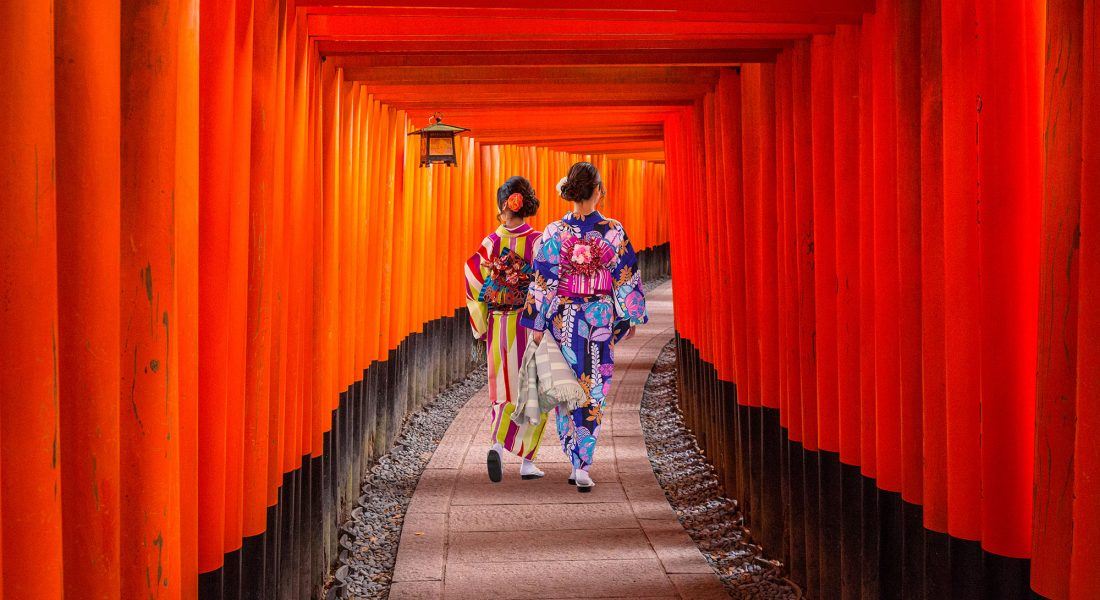
Kyoto, known as the old capital of Japan is beautiful and unique for a reason. It is one of the only places in Japan that was saved from bombing during WWII and therefore has much preserved older architecture that is not seen in other areas of the country like Hiroshima, Nagasaki, and Tokyo. Kyoto is also home to some of the last remaining Geisha in Japan. Many visitors like to come to Kyoto and rent Kimonos and walk the city. The prefecture of Kyoto is large and there is much to do. Plan at least a few days here. Learn more about what to do in Kyoto with kids here and what to do in Kyoto as a solo traveler here.
There is much to do and see in the city of Nara, including the Himuro Shrine, and Isuien Garde, but it is famous for Nara Park where wild deer roam free and are unafraid of humans. Nara is a really easy day trip from Kyoto or Osaka and a favorite with kids! You can read more about visiting Nara here .
Osaka is a great place to base yourself in Japan with Kids if you plan on visiting both Nara and Kyoto. It’s central to both and an easy train ride away. Osaka is also a great place for kids with Universal Studios, Legoland, Osaka Aquarium, Omigachi Park, Tennoji Zoo, and plenty of animal cafes around the city! You could definitely spend several days in Osaka and still not see it all. Learn more about Osaka for kids here.
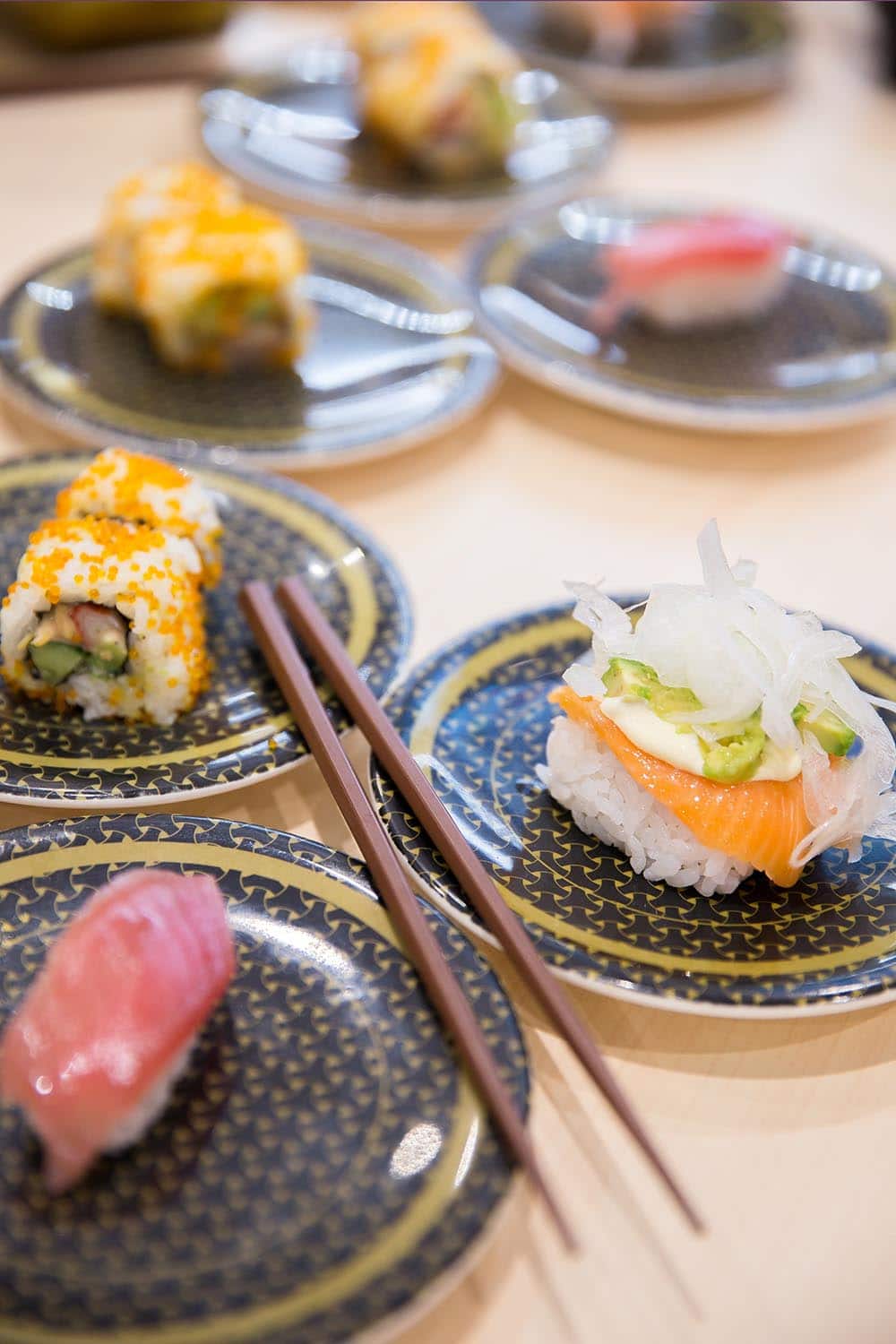
Blending many influences from the east and west along with ancient traditions, Japanese cuisine is some of the tastiest in the world. After visiting Japan for several weeks and eating my way through the country, I compiled this list of 25 foods you must try in Japan Don’t skip foods that might seem different or strange to you, especially their street food, you may just find something that you love. Be brave and have fun!
I absolutely loved my first time in Japan and grew to have a deep respect for the country and its people. I can’t wait to get back and bring the whole family next time. With so many things to do and places to visit in Japan, I think a trip back is definitely necessary, but I think this is a great first timer’s Japan itinerary to get you started.
To start, you near to specify your date of arrival, flights, and any other information required on your itinerary. Once you have that, you can then add details such as the duration of stay in each city, transportation options, and the attractions and activities planned. Make sure to include important contact information (such as your hotel address or phone number) so that it is easy to find if needed. Additionally, it’s a good idea to list any applicable fees and schedules, as well as the items you plan to bring with you. Finally, make sure to double-check all details for accuracy before submitting your itinerary so that your trip is uninterrupted.
Just like traveling to other countries, you need to make sure of your Visa requirements, have a travel insurance, and check the local customs. It is also important to research the currency exchange rates to budget properly as well as understand Japan’s language and culture. There are certain laws, such as no smoking indoors or in public spaces, which you should be aware of before travelling. Finally, it’s always best to have an itinerary ready for your trip so that you can make sure everything runs smoothly.
If you’re traveling for the first time, 7-10 days will provide you with enough time to get a feel for the country. You can take in some of the must-see attractions, visit popular cities, and explore other regions too. Of course, if you want to fully immerse yourself into Japan’s culture then it might be worth planning a longer trip with 14 days or more. That way you’ll have enough time to take in more sights and have a relaxed, enjoyable experience.
Currently, there’s no need to present a vaccination certificate upon entering Japan. However, it is important to take into account all the safety measures and regulations in place for visitors. You should also be aware of Japan’s laws regarding certain activities such as underage drinking and smoking before you arrive. Additionally, you should make sure to double-check your travel plans (including any visa requirements) before departing for your trip.
25 Foods You Must Try in Japan Guide to Miyajima Japan Guide to Hiroshima Japan Guide to Tokyo Japan Guide to Nagoya Japan Guide to Osaka Japan

Wanderlust Crew
4 thoughts on “ two weeks in japan – the best japan itinerary for first-timers ”.
This is a great overview! Thanks heaps. Japan is on my travel list but I need to convince my hubby (mainly because of the food is his reason I think). I love love love the first year of primary school! We have lots of learn from Japan (and Finland I think) for schooling. My son is going into grade 1 so I don’t think we’ll see any changes in his schooling life x
Oh man, read this for the food in Japan. It might change his mind. I was a little worried about the food as well but ended up loving it so much! https://wanderlustcrew.com/japan-food/ My friend’s kids go to a Japanese school and it’s so cool! All of kindergarten they just learn manners and how to serve each other. It’s such an amazing approach to education!
Pingback: Is Osaka Worth Visiting in Japan? What You'll Miss if You Don't Go | Sand In My Suitcase
Pingback: 10 awesome car-free vacations for families - Travel Car Seat Mom
Leave a Reply Cancel reply
Your email address will not be published. Required fields are marked *
Notify me of follow-up comments by email.
Notify me of new posts by email.
This site uses Akismet to reduce spam. Learn how your comment data is processed .
Plan your trip

Let’s Explore Japan
Welcome to The Navigatio – your travel guide to Japan 🇯🇵 Filled with temples, shrines, tall skyscrapers, and crazy neon billboards, Japan has it all. If you’re planning to visit the land of the rising sun yourself but need some help planning your trip – we’ve got you covered!
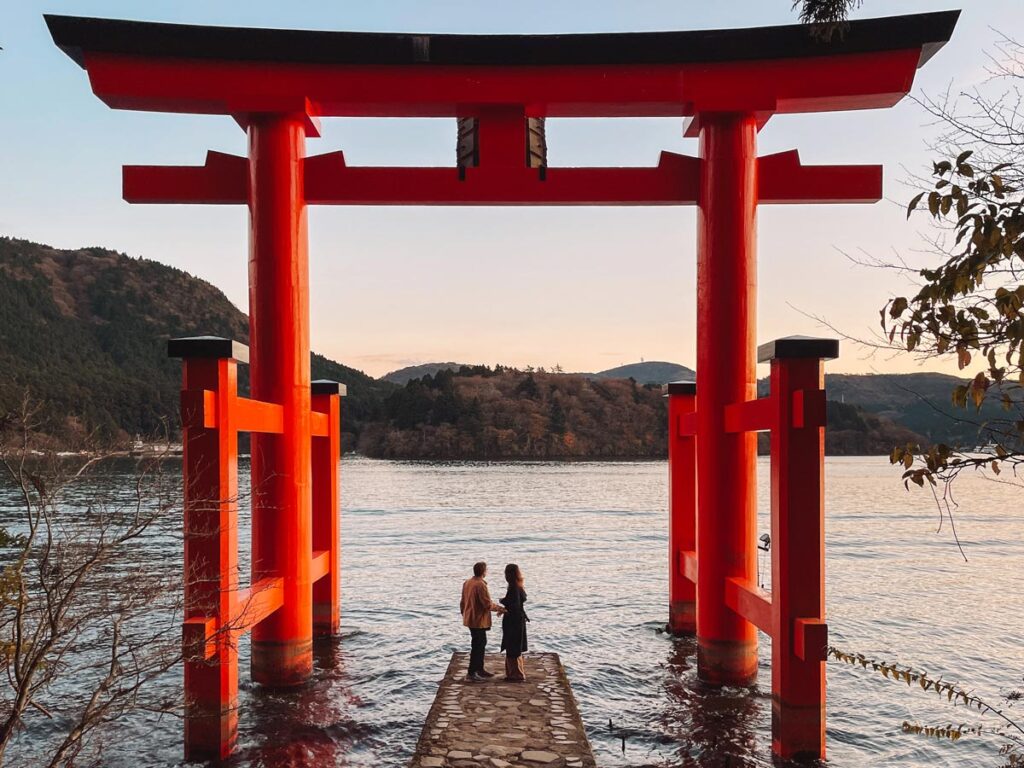
The Perfect Hakone Day Trip From Tokyo
Discover the main cities….
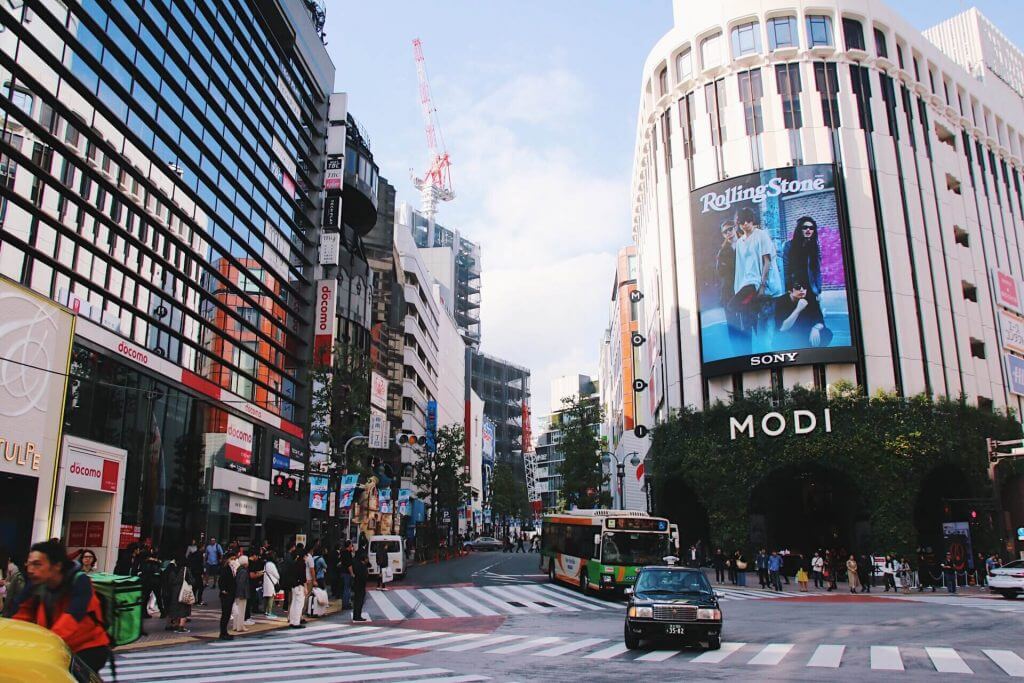
Welcome to The Navigatio! Whether you’re planning your first trip to Japan or your twentieth, you’ve come to the right place. On this website, we share free itineraries, accommodation guides and general tips for visiting Japan.
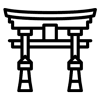
Free Japan guides and itineraries to help plan your perfect trip.

Accommodation guides for Japan’s main destinations.

Everything you need to know about the Japan Rail Pass .
The Japan Travel Newsletter
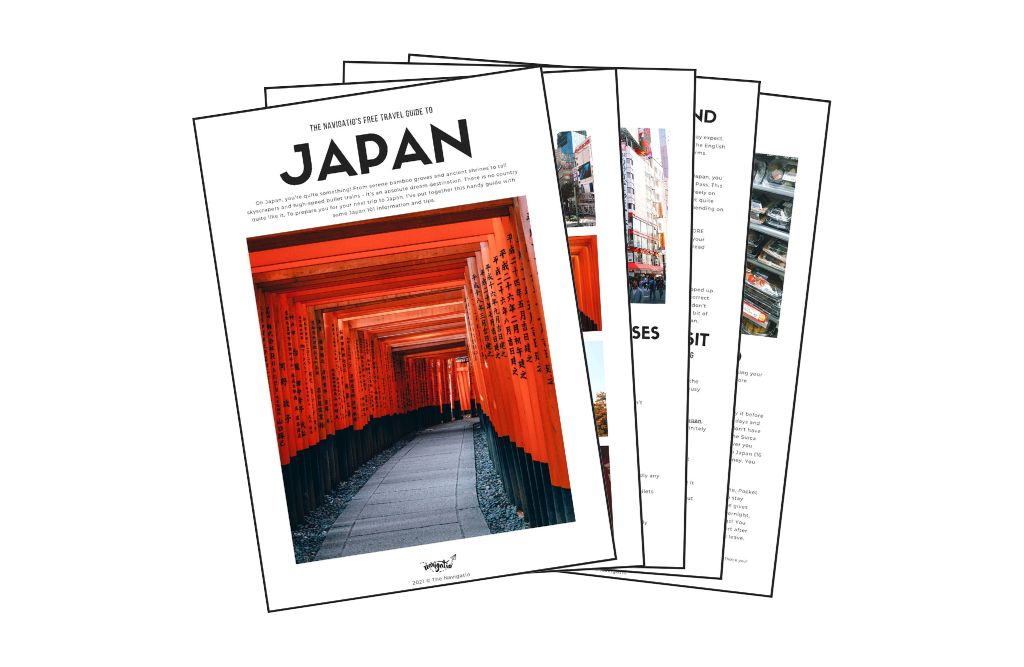
Subscribe to get inspired! Receive insider tips, special discounts and travel stories. Plus, get a FREE downloadable Japan Travel Guide for signing up – including everything you need to know before visiting Japan!
You can unsubscribe anytime. For more details, review our Privacy Policy . (We promise not to spam!)
Almost there!
Thank you! Make sure to go to your inbox to confirm your newsletter subscription for your free Japan travel guide.
About The Navigatio
Hello! And welcome to The Navigatio. My name is Nele (Nay-la) and I LOVE JAPAN. It’s my favourite destination to visit and even though I’m based in the UK, my partner and I try to visit at least once a year (we’re currently planning a 3-month Japan trip!).
Having planned my fair share of Japan trips (for both myself and for friends/family), I know it can be overwhelming. That’s why I’ve created The Navigatio – on it, you can find handy guides to everything Japan.
From free itineraries, accommodation guides and general tips for visiting Japan, we’ve got your back. We do our very best to keep all guides up to date with the help of our writers in Japan, we make sure you get the best insider up-to-date information for your next trip to Japan.
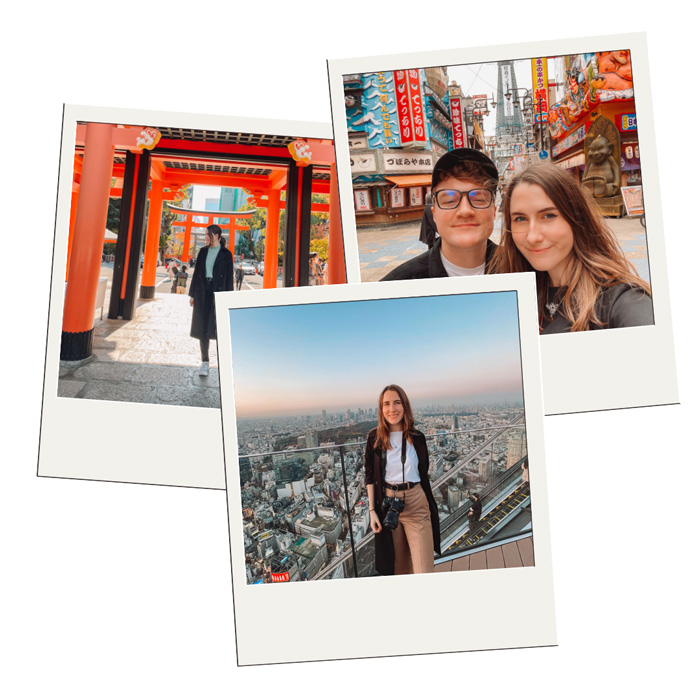
Latest Travel Guides

Surprise, We Eloped in Japan!
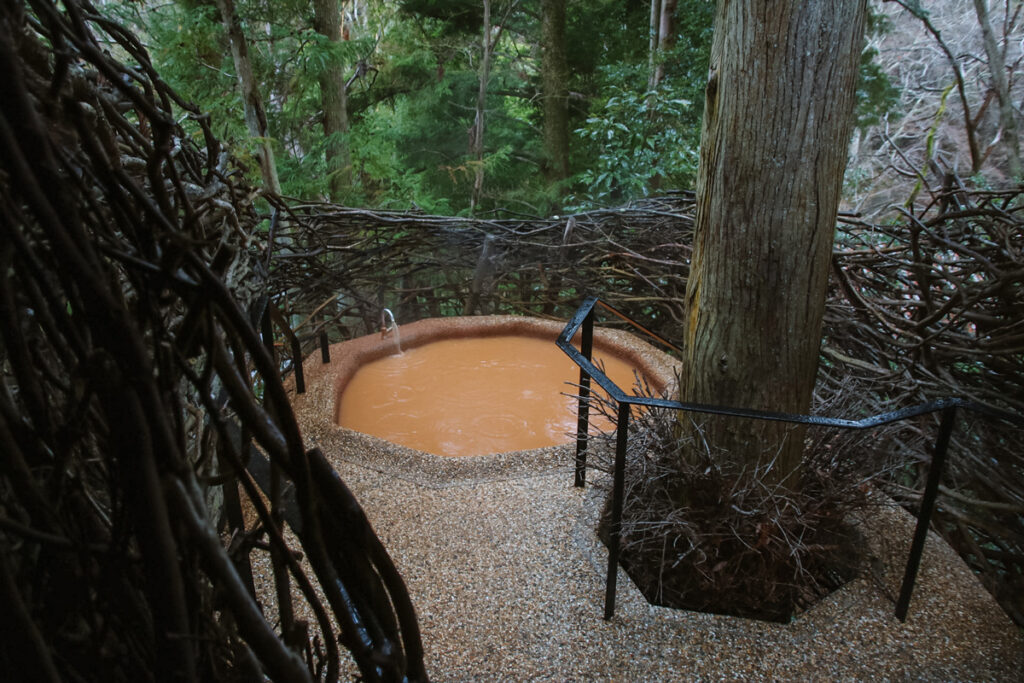
Protected: The Ultimate Ryokan Experience in Arima Onsen: Arimasansoh Goshobessho Review
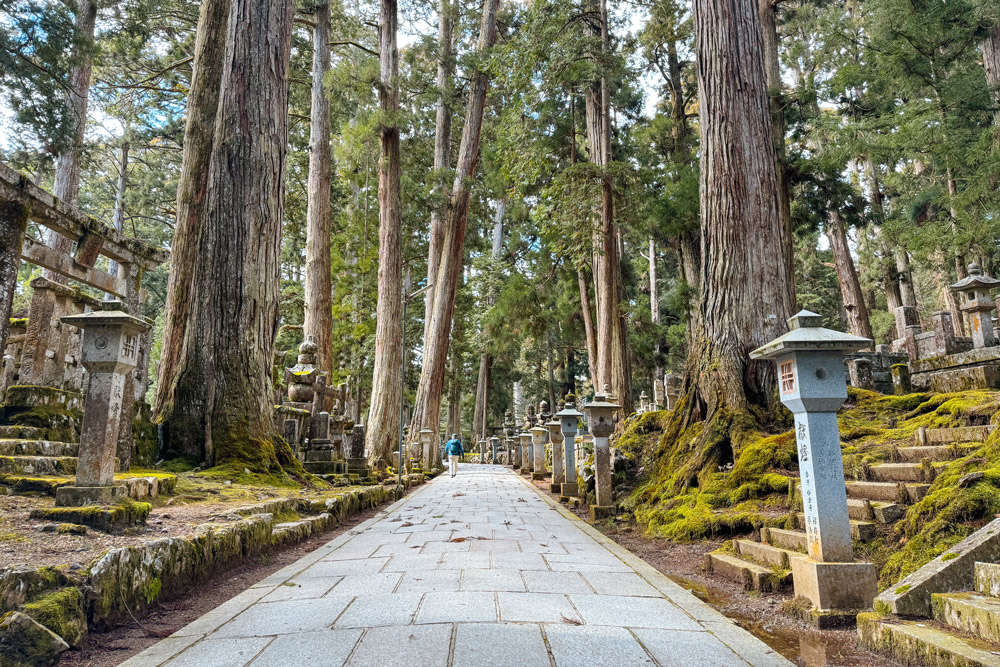
Koyasan Travel Guide: Best Things To Do In Koyasan
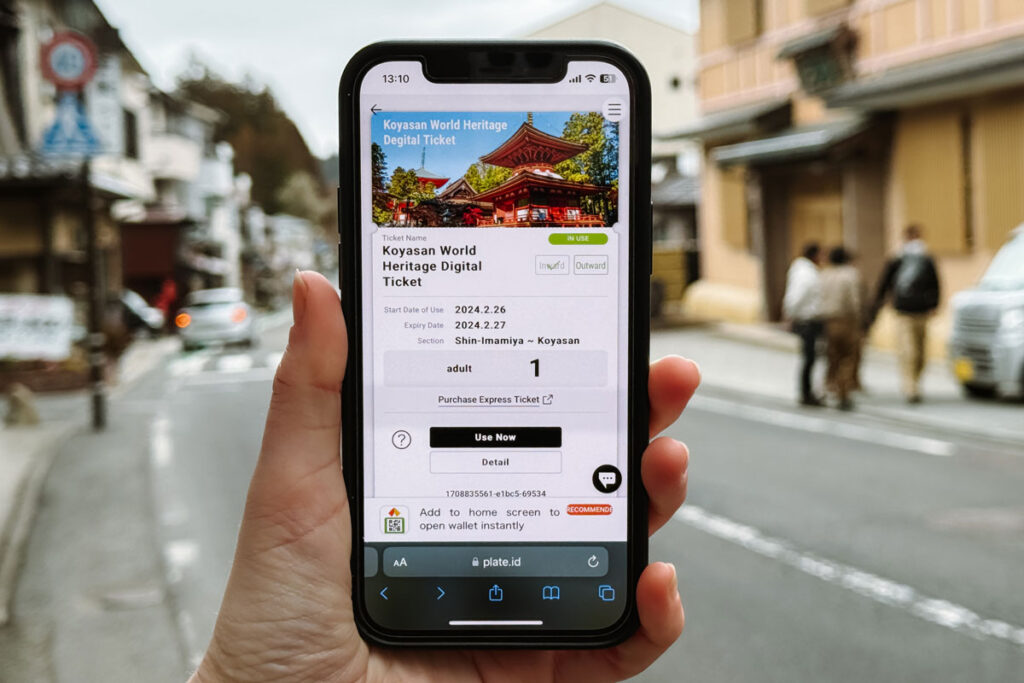
Is the Koyasan World Heritage Ticket Worth It?
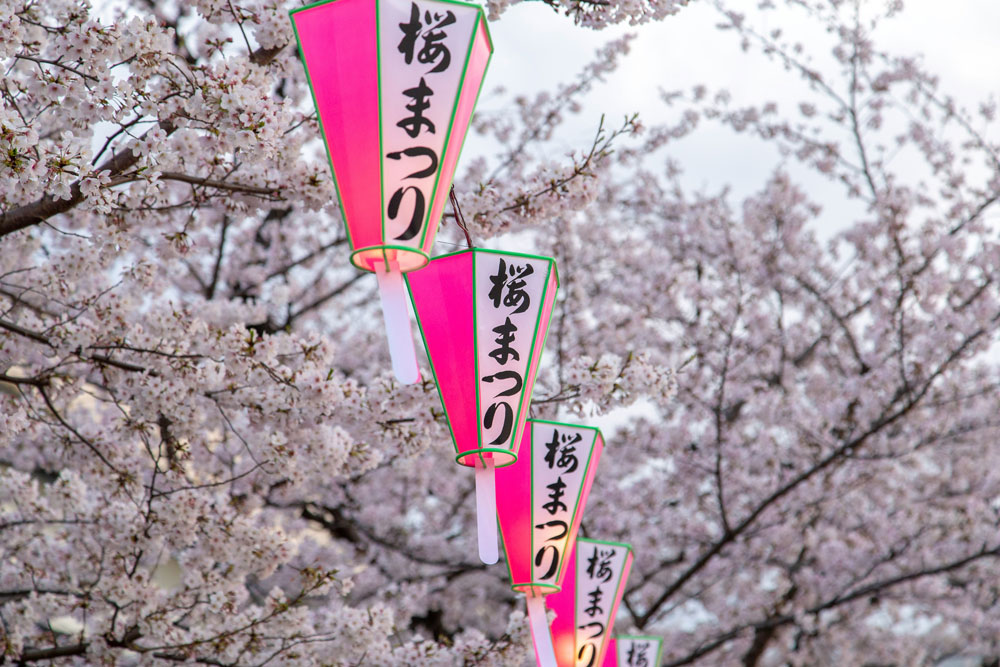
Japan in April 2024: Weather, Festivals, Travel Tips & More
Faq – japan travel tips & planning.

Best Ryokans in Tokyo (With and Without Private Onsen)
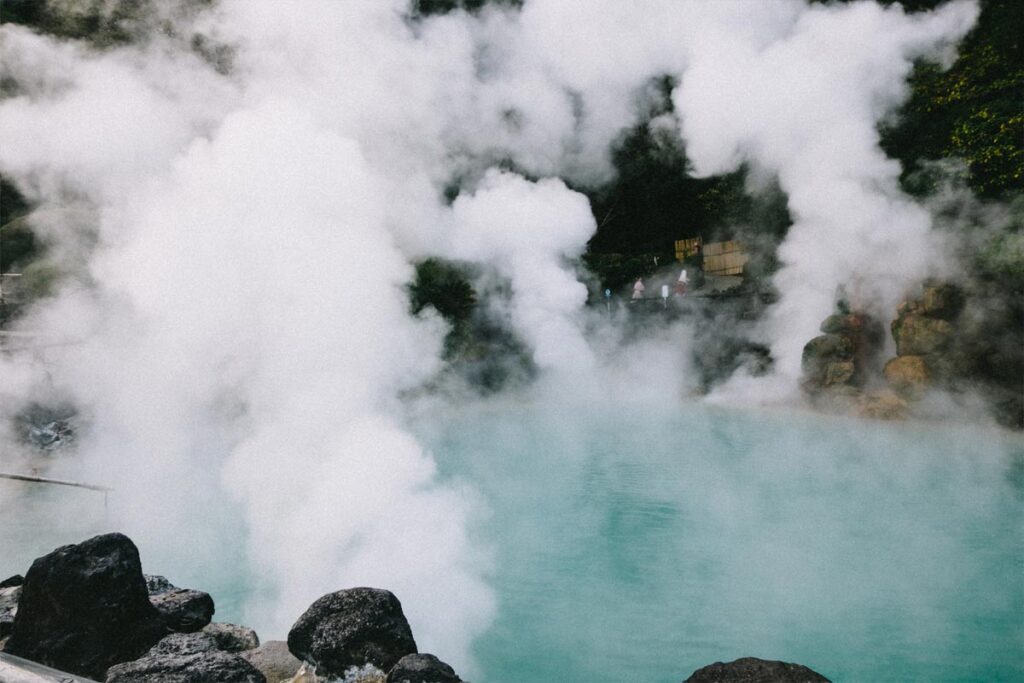
The Perfect Beppu Itinerary: How to Spend One Day In Beppu

The Perfect Hiroshima Day Trip (One Day Itinerary)
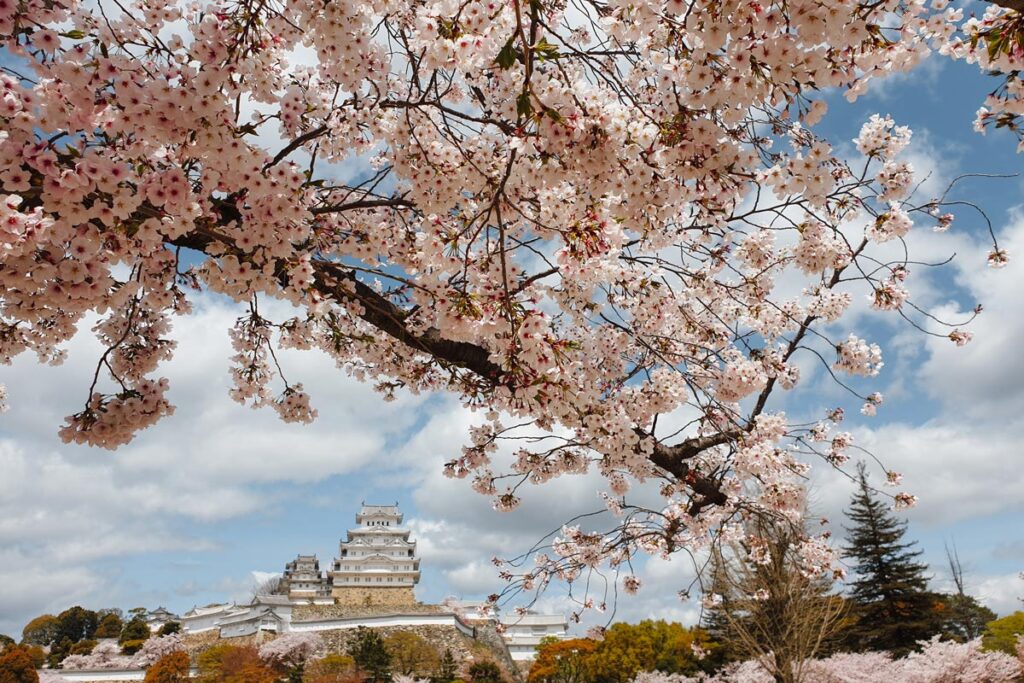
The Perfect Himeji Day Trip: One Day Itinerary
Where to stay in japan.
Picking the perfect hotel for your trip to Japan can be tricky! The cities are so big and there are a lot of different types of accommodation available too. To help you make the right choice, we’ve created guides with hand-picked hotels and ryokans for all budgets and travel styles. Click on the buttons below to read the guides for Tokyo, Kyoto and Osaka.
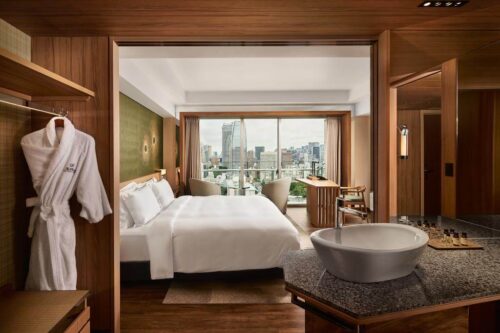
Sign up to get inspired! Receive insider tips, special discounts and more to plan your perfect Japan trip.
You have successfully joined our subscriber list.
japan travel Blog
Tokyo Kyoto Osaka Hiroshima Hakone Kobe Nikko Nara Kyushu All Japan Content
Plan Your Trip
Best Things To Do Japan Rail Pass 2 Week Itinerary 3 Week Itinerary Accommodation Japanese Phrases
About The Navigatio Work With Us
For a limited time, book your 2020, 2021 & 2022 group tour packages with no deposit required!!!

- Custom Groups Custom Groups Overview Student Groups MICE Special Interest Groups
- About Japan About Japan Destinations Attractions Must See & Do
- About Us About Us Contact us Testimonials Terms & Conditions Travel Agent Services Disclaimer Site Map
- News Press Releases Blog Media
- Your Trip Get Started How to make a reservation Travel Tip FAQs Inquiries
Last Name *
Search Japan Tour by Type
Search group tours, search private journeys, japan tours & vacations | best japanese travel plans and excursions.
All Japan Tours offers unlimited vacation possibilities to explore and experience an unforgettable trip to Japan. Whether you’re interested in Japanese cherry blossom tours , festival tours , autumn leaves tours or special interest tours , our Japan tour packages will bring your vacation dreams to reality. Choose tours based on style , interest , date , or season . Our Japan group tour packages are fully escorted, and we can also arrange special-interest private tours , custom group tours , and other Asia country tours to match your specific needs. | Why All Japan Tours
From Group Tours, to Custom Private Tours, to Japan Luxury Travel
Whether you're planning for a special occasion, family reunion, company event, luxury trip or an entire Japan holiday package, All Japan Tours can help you plan the perfect Japan experience. No matter what your interests are, you are always in excellent hands when you travel with All Japan Tours. Our Japan vacation packages cover all budgets from luxury to adventure and are available with or without international flights for full flexibility. Join an escorted group tour on a pre-designed itinerary, or let us create one for you. We have the firsthand know-how to take you well beyond ordinary travel.
The Best Japan Vacation Packages & Itineraries
When you consider the cost, hassle, and uncertainty of traveling on your own, you'll discover how an All Japan Tours vacation is like no other. Everything has been arranged in advance, from itinerary to hotel accommodations, so all you have to do is take in the breathtaking scenery. There is no need to worry about getting lost or finding transportation; leave the details to us and start having the time of your life. Our team works together to give you the very best Japan vacation. This includes our long-time tour guides in Japan that offer both current and historical enlightenment of its cities and towns, as well as expertise on where to find the most beautiful Japanese gardens and temples, local restaurants, and interesting shops. We understand how important it is to make your visit to Japan memorable and worthwhile, so our team both in the office and on the tours strive their best to accommodate your specific needs every step of the way. Book a Japan tour with us and start your unforgettable vacation today!
Japan Tour Packages 2024,2025 & 2026
What can we offer for your japan trip, japan escorted group tours.
The most cost-efficient and hassle-free way to travel Japan
AJT group tours are the best way to ensure that you do not miss seeing any of the highlights of Japan. We plan our group tours based on seasonal attractions with must see sites in every tour. All of our Japan group tour itineraries are researched and developed by our professional staff, all of whom have spent years working as a tour guide in Japan. We offer four different tour styles to pick from that are best suited to your interests, from train travel to luxury tours. We are confident that you will find something that is appealing and fascinating to you from our Group Tours. AJT group tour packages offer something suitable for everyone, no matter what your budget or tastes are.
Japan Private Journeys
Just you and your traveling partner
A private journey is the perfect solution for if you can't find a published departure date that you and your companion(s) agree on. Our private journeys allow you to customize the perfect itinerary for you and your companion(s). Our team will do our best to fulfill every detail and request to design your perfect tour.

Japan Custom Group Travel
You plan, with our help, where and when your group travels
Do you wish to travel with family, friends, school, church, club, or organization to Japan? We have the knowledge and experience to fulfill your wants. Let us arrange your sensational trip to Japan!
3 steps to your perfect Japan trip
Search tour.
Find your perfect Japan tour
Contact us for any questions or request
Reservation
Complete the Reservation Form and make your tour deposit
When is The Best Time to Visit Tokyo Japan?

Japan Cherry Blossom Tours
Our Japan cherry blossom tours are our most popular tours because we highlight the top places to see sakura, the most renowned flower in the country. Experience Japanese cherry blossom festivals, a cherry blossom dance show performed by geisha, and sakura views from Mt. Fuji, to gardens in Kyoto.

Japan Autumn Leaves Tours
Our Japan autumn leaves tours give you exclusive access to beautiful gardens, temples, shrines, and famous landmarks while enjoying the colorful autumn scenery along the way. We offer Japan tours to rural parts of Japan, historical towns, World Heritage sites, and diverse shopping districts.

Japan Festival Tours
Our Japanese festival tours cover festivals from all seasons. Matsuri (festivals) can range from celebrations to honor a shrine's deity to joyful seasonal occurrences. Participate in one of the biggest festivals in Japan, the Kyoto Aoi Festival, or check out the Gion Summer Festival on one of our Japan tours.

Special Interest Tours
We offer tours for people specifically interested in anime, the pilgrimage route of Japan, visiting the most beautiful places in Japan, focusing on Japan's breathtaking flowers, seeing snow monkeys in winter, visiting the best nature spots of Hokkaido, and spending time at the art island of Naoshima.
Top 12 Attractions in Japan

Takayama Festivals

Lavenders in Hokkaido

Tateyama Kurobe Alpine Route

Snow Monkeys

Japan Winter Festivals

Awa Odori Dance Festival

Gion Summer Festival

Kyoto Aoi Festival

Shibazakura Festivals

Baby Blue Eye Flowers at Hitachi Seaside Park

Tohoku 3 Great Summer Festivals
Experience the takayama spring & autumn festivals during your trip to japan, one of japan's most beautiful festivals..
Witness the beautiful Takayama Festivals in Japan, not once, but twice a year. We offer a list of Japan tour packages that allow you to experience the lavishly decorated floats, known as yatai, which feature karakuri (mechanical puppets) that dance and move impressively. Whichever season you prefer, we have a Japan tour package reserved for either Takayama Festivals.
View our Japan tours featuring Takayama Festivals
Get lost in the lovely furano flower fields surrounded with lavender flowers, and enjoy views of the spacious fields in biei..
Our Hokkaido lavender tours showcase the best spots to indulge in lavender beauty during its flowering season. Take a Japan trip to Farm Tomita in Furano, known as one of the best places in Japan to see spectacular backdrops of lavender. Our lavender tours will also take you to a small town called Biei, overlapping with picturesque hills, vast fields, and the popular Panorama Road.
View our Japan tours featuring Lavenders in Hokkaido
The tateyama kurobe alpine route is an amazing route that goes through the northern japan alps..
Visit the famous and long demanded Alpine Route in Japanese Alps. Requiring varying modes of transportation, this route takes you through mountains and valleys for some of the most scenic views in all of Japan. From high mountain peaks reflected in the surface of calm, crystal lakes to the lower elevations at the Kurobe Dam and the famous site of the snow corridor, this route is sure to be unforgettably beautiful.
View our Japan tours featuring Tateyama Kurobe Alpine Route
Take delight in viewing elegant wisteria flowers at ashikaga flower park and kawachi fuji garden during your tour to japan..
Wisteria are dream-like flowers that hang like pink and purple chandeliers. On our Japan Wisteria Tours, you will visit places like the Kawachi Fuji Garden and Ashikaga Flower Park. The Kawachi Fuji Garden features picture-worthy flower tunnels you can walk underneath, while the Ashikaga Flower Park is significant for their "Great Wisteria", a famous tree that's over a 150 years old.
View our Japan tours featuring Wisteria
Watch japanese snow monkeys bathe in hot springs at jigokudani snow monkey park on a japan winter tour..
Our snow monkey tours will take you to the Jigokudani Yaenkoen Park, where you can see Japanese Macaque, known as "snow monkeys". Thousands of people come to see the monkeys, whom are native to northern Japan and can be recognized by their red faces and light brown-grey fur. Watching the snow monkeys bathe up close is quite an experience, so don't forget your camera!
View our Japan tours featuring Snow Monkeys
Our japan tours will take you to the best winter festivals in the country, where you can admire giant ice sculptures and unique fairgrounds..
Believe it or not, some of the best festivals that attract millions of visitors each year are located in the coldest parts of Japan. We have arranged tours to travel to the Sapporo Snow Festival, Otaru Snow Light Path, Lake Shikotsu Ice Festival, Asahikawa Winter Festival, and the Sounkyo Ice Waterfall Festival. Experience seeing illuminated ice sculptures on one our tour packages.
View our Japan tours featuring Japan Winter Festivals
Join a tour that visits japan's largest dance festival, awa odori, and enjoy traditional music accompanied with lots of food in a lively celebration..
Attracting over 1.3 million visitors per year, Awa Odori is the largest dance festival in Japan. We have a Japan tour package showing you the best of Japan, including this famous dance festival. It is also called the "Fool's Dance", which originates from 400 years ago. Many instruments including taiko, shamisen, and flutes are accompanied with the dancers that parade through the city.
View our Japan tours featuring Awa Odori Dance Festival
Spend your japan vacation indulging in traditional japanese culture and stunning floats at the gion summer festival..
The Gion Matsuri is Kyoto’s largest annual festival and one of Japan's most famous. We have arranged Japan tour packages that include this 1100 year old celebration, which originally began as a religious ceremony dating back to 869. The main event occurs on July 17th and July 24th, where locals and visitors gather to view two extravagant procession parade floats.
View our Japan tours featuring Gion Summer Festival
Book a trip to japan that includes a taste of japanese history at the elegant and popular kyoto aoi festival..
Every May 15th, the Kyoto Aoi Festival features a large parade of over 500 people dressed in Heian Period (794-1185) styled clothing to illustrate a graceful procession. We provide several tours that highlight one of Kyoto's most celebrated festivals. The Kyoto Aoi Matsuri takes you back to the 10th century, where traditional makeup and impressive costumes can be appreciated.
View our Japan tours featuring Kyoto Aoi Festival
Admire thousands of ground cherry blossoms at the fuji shibazakura festival & takinoue koen park shibazakura festival during your japan tour..
Known as the ground cherry blossoms, our Shibazakura Festival tours will take you to attractions that are blanketed with vivid shibazakura. See the Fuji Shibazakura Festival, featuring over 800,000 spectacular moss phlox with the great Mt. Fuji in the background. Also visit Takinoue Koen Park, noteworthy for its hillside covered with 100,000 square meters of shibazakura.
View our Japan tours featuring Shibazakura Festivals
Take your japan tour to the majestic flower gardens at hitachi seaside park, widely known for its hillside of 4.5 million baby blue eye flowers..
Scientifically known as Nemophila, the largest collection of baby blue eye flowers can be seen at the Hitachi Seaside Park. There are over 4.5 million baby blue eyes blooming from mid-April to mid-May, referred as "Nemophila Harmony" during its annual bloom. The Hitachi Seaside Park features vast, gorgeous flower gardens of tulips, poppies, roses, kochia, and more.
View our Japan tours featuring Baby Blue Eye Flowers at Hitachi Seaside Park
Join the fiery celebration at tohoku's 3 great summer festivals during your japan trip..
Be keen on Tohoku's Three Great Summer Festivals all in one Japan tour package. These summer festivals known as Aomori Nebuta, Akita Kanto, and Sendai Tanabata are lively experiences you don't want to miss. Enjoy magnificent views of lantern-lit floats, high-spirited dancing, music performances, kanto skills, firework displays, thousands of colorful streamers, and more.
View our Japan tours featuring Tohoku 3 Great Summer Festivals
Top 12 places to visit in japan.

1. Hokkaido
Enjoy a tour to japan in hokkaido, renowned for its flower fields and attractions unique to every season..
Hokkaido, Japan has a distinctive change of seasons that only adds to its beauty. The island is renowned for its lavender fields in the summer and winter festivals that attract millions of visitors every year. Our Japan tours to Hokkaido will take you to the flower fields in Furano, the atmospheric Otaru Canal, Hokkaido's biggest entertainment district in Susukino, and to Shiraoi to learn about the Ainu people of Hokkaido. A Japan trip to Hokkaido means trying various fresh foods at the famous Nijo Market, strolling through the heart of Sapporo in Odori Park, and stopping by Hokkaido's most famous hot spring resort in Noboribetsu. Hokkaido is proud to have its four distinct seasonal differences that include a number of events and acitivities each unique to the season. There is no other place like Hokkaido to enjoy your Japan vacation to the fullest.
Make your way to the Tohoku region to see the great Towada Lake, visit the prominent Zeuiganji Zen temple, and see one of Japan's three most scenic views during your Japan tour.
Tohoku is known for its great summer festivals, picturesque landscapes, and its long history of samurai. Predominantly mountainous, this region offers broad areas of natural surroundings. A Japan tour to Tohoku involves visiting must-see sites among its six prefectures. Tour to one of Japan's three most scenic views at Matsushina, Tohoku's famous Zuiganji Zen temple, and the lovely Towada Lake. Numerous castles and samurai homes reside in Tohoku, making it an appropriate place to visit and appreciate history. Tohoku is also a suitable backup option when cherry blossom viewing, since the blossoming period takes place a few weeks later than in Kyoto or Tokyo. We offer several tours to see the best of Tohoku in one Japan trip.
Dive into the fascinating world of Tokyo, where you will visit ancient landmarks and electrifying towns during your tour to Japan.
Populated by over 36 million people, Tokyo is the worlds largest city. It is a metropolis that offers a mixture of both futuristic and traditional qualities. We offer tours to Tokyo that take you to destinations such as the Meiji Shrine, the Tokyo Tower, and the Imperial Palace. Indulge in Japanese history at the interesting Edo-Tokyo Musuem. We have Japan tour packages that will also take you to a popular tourist attraction called Odaiba, a man made island that serves as a shopping and entertainment district. Admire Tokyo's oldest temple built in 645, the colorful Sensoji Temple, also known as the Asakusa Kannon Temple. Find yourself in the lively and colorful Shibuya, renowned for endless dining, shopping, and clubbing. Its trademark is a large intersection featured in a number of films and photos. A Japan trip is not complete without traveling to Japans most distinguished city.
Travel to an active volcano in Hakone and ride the scenic Hakone Ropeway on one of our Japan tour packages.
Located in the Kanagawa Prefecture, the town of Hakone is mostly a mountainous region part of the Fuji Hakone Izu National Park. Hakone is a famed holiday resort renowned for its variety of popular hot springs. On our Japan tours, you can enjoy a stunning view of Mt. Fuji in Hakone and its natural beauty. Our tours will also take you to Owakudani, a volcano with active steam vents, hot river valleys, and scenic trails. Enjoy a ride on the Hakone Ropeway, where you can view the active volcano zone and excellent views of Mt. Fuji on clear days. Hakone is a popular destination in Japan for travelers looking to enjoy their tour outside of Tokyo. Since Hakone is in the Kanagawa Prefecture, our Japan tour packages will also include the must-see sites in this region.
5. Mt. Fuji
Check out astonishing views of mt. fuji and all of its natural surroundings when you book a tour to japan..
Take a tour to the highest mountain in Japan, Mt. Fuji, an active volcano standing at 12,380 feet (3,776 meters). Mt. Fuji is not only famous for its majestic cone shape and impressive aura, but also being the subject for distinguished paintings, photos, and literature. It is recognized as an international famous symbol of Japan. Impressive views can be seen from Tokyo and Yokohama on clear days. On the other hand, cloudy days often block visibility of Mt. Fuji, so those who get to experience the clear view of the mountain are considered fortunate. Our Japan tour packages will take you to the Fuji Subaru Line 5th Station, the halfway point on the climb to Mt. Fuji. It is accessible almost any time of the year and is well developed. This is a popular sightseeing spot for thoroughly admiring the grand and awe-inspiring view of Mt. Fuji and its surroundings.
6. Takayama
Add a traditional touch to your japan tour by visiting rural destinations in takayama and its authentic, historical buildings..
Celebrate at one of Japan's three most beautiful festivals here in Takayama, the Takayama Festivals, held in both spring and autumn. Since Takayama is located in the Japanese Alps, it is preferred among travelers wishing to add a rural destination to their visit to Japan. Takayama has been referred as "Little Kyoto", due to its preserved historical structures and traditional atmosphere. It is also popularly known as Hida-Takayama to refrain from confusion with other places called Takayama. We offer Japan tours to Old Town, where you can view entire streets and structures dating back to the Edo Period (1600-1868). Continue your Japan trip to the Matsumoto Castle, also called "Crow Castle" due to its black exterior. Here you can admire a prime example of original Japanese wooden architecture. Take delight in sightseeing in Takayama on your Japan vacation.
7. Kanazawa
Tour to kanazawa if you wish to see one of japan's three great gardens and a well-preserved samurai district during your trip to japan..
Capital of the Ishikawa Prefecture, the eminent city of Kanazawa is known for its preserved Edo districts and other historical attractions. Since the construction of the Kanazawa Castle during the rule of powerful feudal lord Maeda Toshiie, the city has prospered with many cultural achievements. Visit one of the Three Great Gardens of Japan, the Kenrokuen Garden, during your tour to Japan. Its name translates to "Garden of the Six Sublimities", qualities that make up the perfect garden according to Chinese landscape theory. Here you can find Japan's oldest fountain and the two meter tall Kotojitoro Lantern, an icon of Kanazawa and Kenrokuen. Some of our tour packages even travel to Kanazawa's Samurai District. Upon arrival, you will catch sight of well-preserved buildings and the former living quarters of samurai. Tour to Japan to enjoy these attractions unique to Kanazawa.
Say hello to authentic Japanese culture by visiting Japan's most popular temples and shrines, beautiful parks and gardens, and the best summer festivals during a tour to Kyoto.
Kyoto is famous for its numerous Buddhist temples, Shinto shrines, and ravishing gardens. The city served as Japan's capital and was the residence of the Imperial family during 794 to 1868. During your tour to Kyoto, you will get to participate in sake tasting at the Gekkeikan Okura Sake Musuem, visit the famous tunnel of scarlet torii gates at Fushimi Inari Shrine, see the iconic Kinkakuji Temple (Golden Pavillion), and stroll through the city of geisha in Gion. Continue your trip to the former residence of Tokugawa Ieyasu at Nijo Castle, check out the noteworthy Kiyomizu Temple and its impressive wooden stage, and see what a traditional Zen garden looks like at the Tenryuji Temple. Experience three of Kyoto's world-famous festivals, including the Aoi-matsuri Festival, the Gion-matsuri Festival, and the Jidai-matsuri Festival. Tour to Kyoto for an unforgettable Japan experience.
Experience visiting the world's largest wooden building and Japan's biggest bronze statue of Buddha when you travel to Japan.
Located less than one hour away from Kyoto and Osaka, the city of Nara is one of Japan's most rewarding destinations. Nara is Japan's first permanent capital, and is second to Kyoto as a cultural legacy with eight Unesco World Heritage Sites. Under the rule of the Imperial family and aristocrats, many temples and shrines were built here, as well as the development of temple towns. Our tours include seeing one of Japan's most significant temples, the Todaiji Temple, home to the famous Daibutsu (Big Buddha). The temple's main hall (Daibutsuden) is the world's largest wooden building, which is where you can also find the giant bronze statue of Buddha. Your trip to Japan will also give you the opportunity to visit the popular Deer Park nearby the temple, filled with over 1,000 deer you can greet and feed. Choose one of our Japan tour packages to experience Nara's historic treasures.
10. Hiroshima
Travel to the peace memorial park for an awakening experience about war and world peace, as well as the famed "floating" torri gate on the beautiful miyajima island, only in hiroshima..
Hiroshima is located in the Chugoku Region, a major city that is home to over a million residents. After the first atomic bomb dropped, there were predictions that the city would be uninhabitable. However, great endeavors were taken to rebuild Hiroshima and the speculations were proved wrong. During your Japan tour, you can visit the Hiroshima Peace Memorial Museum and the Atomic Bomb Dome (Genbaku Dome), a must-see exhibition and eye opening experience. You can visit these landmarks of world history at Peace Memorial Park, located in the center of the city. Our Japan tour packages also take you to Itsukushima-jinja, a Shinto shrine located on Miyajima Island. It is famous for its "floating" torii gate and is inscribed as a World Cultural Heritage Site and one of Japan's three most scenic places. Don't miss out on a remarkable tour to Hiroshima.
11. Shikoku
Journey to shikoku during your japan vacation for a tour full of remarkable sites and impressive coastal views, such as the incredibly scenic drive along the great seto bridge and the shimanami kaido toll road..
Shikoku is home to the Shikoku pilgrimage route, which includes 88 temples and other sacred sites. Shikoku offers many historic locations, breathtaking spots in nature, and traditional festivals. Here on your tour to Japan, you can enjoy scenic views from the Great Seto Bridge and the Shimanami Kaido, passing six small islands to get to Shikoku. Shimanami Kaido is renowned for its beautiful drive along its picturesque toll road. Take a pleasant stroll through Shikoku Mura Village and experience an awe-inspiring masterpiece of Japanese landscape at Ritsurin Park, featuring ponds, pavilions, and a Mt. Shuin backdrop. Shikoku may be the smallest main island of Japan, but offers many spectacular attractions to experience.
Explore Kyushu during your tour to Japan, where you'll wander through an abandoned island known as Gunkanjima, and visit the site of legend where the Shinto Sun Goddess hid herself in a cave.
Kyushu is the third largest main island of Japan and offers significant landmarks, natural beauty, and vibrant cities. Our Japan tour packages will take you to the best things to see and do in Kyushu. Take a trip to Gunkanjima, translating to "battleship island", a small and abandoned coal mine with the highest recorded population density in the world. You will also visit Glover Garden, an open-air exhibit featuring mansions of former Western residents in Nagasaki. Tour to Takachiho, a town pervaded with Japanese mythology. There you can visit the supposed site of legend of the Sun Goddess Amaterasu, where she hid in a cave distraught from her brother's cruel pranks, causing other gods and goddesses to attempt to lure her out. Takachiho is a "power spot" profound with spiritual energy and religious importance. Nearby, you can see a cascading waterfall at the Takachiho Gorge.

Though it is possible to do a cherry blossom trip on your own, if you want to see multiple sites and get more out of the trip, I’d suggest a tour. It is much easier to navigate in these rural areas that off the English speaking tourist path when……

Testimonials
My husband, Daniel Levine and myself (Cherilyn Brunetti) just returned from our tour which started in Osaka on July 3 and ended in Tokyo on July 8. It was our first trip to Japan and we had a wonderful experience. I credit our tour guide, Bil……

Japan Cherry Blossom Guide
Cherry blossoms in Japan have been a major attraction for tourists. The most common question people ask is “when is the cherry blossom season?” It is an easy yet difficult answer because it depends on the area we are talking about.

Japan Autumn Leaves Guide
Autumn leaves in Japan are almost as popular as the cherry blossom season. Kōyō is the Japanese word for autumn leaves. Kōyō and momiji (maple leaves) use the same kanji and has been that way since the Heian Period.
The latest article, gallery and video of Japan

NORTHERN OR SOUTHERN JAPAN? WHICH TO VISIT NEXT
Article | April 22nd, 2024 | May Hamamoto
Can’t get enough of Japan after visiting Tokyo, Kyoto, and Osaka, but are torn between the charms ......

12 OF OUR FAVORITE JAPANESE FESTIVALS
Article | April 11th, 2024 | Dayna Hannah
Attending a Japanese festival is an experience unlike any other! Here are our favorite annual events......

WHEN TO SEE CHERRY BLOSSOMS BLOOM IN JAPAN | 2024
Article | March 29th, 2024 | Dayna Hannah
From Okinawa to Hokkaido, here's where and when to see cherry blossoms in Japan.......

The Perfect 14-Day Japan Travel Itinerary for First Timers
By: Author Kris
Posted on Last updated: May 16, 2024
Are you planning a 14-day trip to Japan? You came to the right place. Japan is a fascinating destination that has much to offer.
But when you have just 2 weeks in Japan you will have to make choices.
That’s why we compiled this 14-day Japan travel itinerary based on the highlights and the things we loved the most during our Japan itinerary.
We want to inspire you with this 2 week Japan itinerary and hope you will love your Japan trip as much as we did.
There is a really good chance that this post contains affiliate links. If you click one of them, we may receive a small commission (for which we are deeply grateful) at no extra cost to you.
Table of Contents
Tip: Be sure to become a member of our brand new Japan Travel Planning and Tips Facebook group . The purpose of this group is to help you plan an amazing vacation to Japan. You can ask questions and exchange tips with fellow travelers.
Japan Essentials
We almost always find the best flights to Tokyo and Osaka on Momondo . It may be worthwhile to compare these with Skyscanner and a new but promising flight aggregator, WayAway .
Don’t lose time upon arrival at the airport and order your Japan travel SIM or portable WiFi device in advance so that it’s ready and waiting for you at the airport when you arrive.
Find out which JR Pass will save you the most for your trip to Japan.
Check out our ultimate Japan travel blog where you can find many more interesting Japan articles to prepare for your trip.
Need help with your Japan trip planning? Check out this post on how to plan your trip to Japan.
Japan Travel Planner
If this is your first Japan trip, we totally understand if you’re feeling a little overwhelmed with your travel planning. There is so much to see and to do and Japan’s train network is excellent but at the same time very different from what most of us know from our home country. That’s why we created our Japan travel planner . A document that will help you with all the details of your travel plan. Follow the link for the full details .

Our Japan Itinerary For 14 days
Day 1-2: tokyo.
Most international flights will take you to Tokyo so this is where you’re 2 weeks in Japan adventure starts.
- 5 days in Japan
- 7 days in Japan
- 3 weeks in Japan, the perfect itinerary for first-time visitors.
Getting from the Airport to Tokyo
When somebody is referring to Tokyo International Airport they refer to Haneda airport but in reality, Tokyo has 2 international airports: Haneda and Narita airport.
The general rule is that Narita is the airport for low cost carriers while premium connections are grouped at Haneda. But even if you don’t fly low-cost, you have a good chance of arriving at Narita. Narita handles 3 times as many international flights than Haneda. Domestic flights are mostly leaving from Haneda.
In reality you will notice that there isn’t really any logic in how the flights are divided between the 2 airports. Because there are not enough landing slots in Haneda, ANA sometimes has to look to Narita when it adds extra weekly flights to a certain destination. As a result the flight from Washington arrives in Narita on Wednesday, Thursday, and Sunday and on Haneda on the other days of the week.
Which of the 2 airports is best for you as a passenger? Probably Haneda because it is closer to the city. It takes less time to get from the airport to the city and it is also cheaper.
Below is additional information about both airports.
Haneda International Airport
Haneda International Airport is located 14 kilometers south of Tokyo Station. It is the oldest of the two airports.
It used to mainly handle domestic flights after Narita airport opened but with the addition of a new international terminal in 2010, it now handles most business routes while Narita focuses more on leisure routes.
The two main ways to reach central Tokyo from Haneda Airport are the Keikyu Line and the Tokyo Monorail. Both require a transfer to the JR Yamanote Line to reach major stations in central Tokyo.
Depending on the location of your hotel and the length of your flight (and the amount of sleep you could get) you might not be looking forward to train and subway rides in your first hours in Tokyo.
After a long flight, a direct transfer from the airport to your hotel will be a lot more comfortable.
You can find more information about a shared transfer here:
Shared Transfer
Private Transfer
Narita Airport
Narita is the smallest of the 2 airports but it is the gateway to Tokyo for many international tourists.
It lies 60 km east of central Tokyo. Although it is located further from central Tokyo it is also well-connected to the city. Compared to Haneda, you even have more options.
There are plenty of public transportation options to reach central Tokyo from the airport. You could take the JR Narita Express, the Keisei Skyliner, buses and taxis. Those who like to make a grand entrance can even choose for a helicopter transfer.
The JR Narita Express
The JR Narita Express , abbreviated as N’EX, is covered by the Japan Rail Pass. This makes N’EX your best option if you have a JR Pass.
To use this train with your Japan Rail Pass you need to exchange your voucher for the actual pass at the airport.
Once exchanged you will also need to reserve seats as N’EX is one of the few trains that only has reserved cars.
Japan Rail Pass is it worth it?
The Keisei Skyliner
The Keisei Skyliner is a good alternative to N’EX if you have no Japan Rail Pass.
The prices, the comfort and the train schedule of both trains are comparable.
The main difference is that N’EX will take you to Tokyo station, Shinagawa, Shibuya, Shinjuku, Ikebukuro & Yokohama. The Keisei Skyliner heads to Nippori station and Keisei Ueno (close to Ueno station).
Both trains offer easy transfer to the JR Yamanote Line, the main loop line in Tokyo.
As with Haneda, you can also book private or shared transfers from Narita to central Tokyo.
Find more information about a shared transfer here: Shared Transfer
or you can opt for a private transfer here: Private Transfer

Getting Around in Tokyo
If you have a japan rail pass.
If you have a Japan Rail Pass you can use this pass on the JR trains that run on the inner-city network in Tokyo, a very extensive network that can be compared with a metro network.
If You Don’t have a Japan Rail Pass
If you don’t have a Japan rail pass or you choose to activate your Japan rail pass after your visit to Tokyo, a Tokyo subway pass might be a good alternative. You can buy this pass at tourist information centers, BIC camera shops, and certain hotels.
There’s a list of selling points on the Tokyo Metro website . Be sure to bring cash as credit or debit cards are usually not accepted.
The pass can also be bought online which is even more convenient.
When you buy your pass online you will receive a voucher that you can use to quickly and easily collect your pass at the airport and seconds later you will be on your way to your hotel. Your pass can be used immediately, so you can use it if you would have to change to the metro en route to your hotel.
Click here to read reviews and buy your Tokyo public transportation pass here: Tokyo Metro Pass
or read our full article about Tokyo’s public transport.
Things to Do in Tokyo
If you visit Tokyo during the cherry blossom season it may be tempting to spend 2 days visiting the parks. There’re many great parks to see the cherry blossoms. We wrote a separate article about the best places to see the cherry blossoms .
The parks are great but there’s so much more to see and do in Tokyo…
Out of all the highlights in Tokyo, we visited the busiest intersection in the world at Shibuya as well as the Imperial Palace, Harajuku, Yoyogi Park, the Sensoji temple, the Asakusa district, the neighborhood around the Skytree and much more. Here you will find our detailed Tokyo 2-5 itinerary.
Organized Tours and recommended activities in Tokyo
Here are 2 top-recommended activities for when you’re in Tokyo.
We’re not a huge fan of organized tours but in this case it’s the best option. The tour will save time and, moreover, the tour guide will enlighten you about the different sights you visit.
We partnered up with GetYourGuide and Klook for these activities.
We love GetYourGuide because they’re flexible. Sometimes your plans change last minute and then you want to be able to cancel your tickets and get your money back. It’s also good to know that GetYourGuide has your back when the local tour operator doesn’t show up or cancels your trip.
Klook is a trustworthy travel company headquartered in Hong Kong that teams up with local operators to offer all kinds of travel experiences.
We selected 2 excellent tours in Tokyo just for you.
Tokyo Skytree skip the Line Tickets

The Tokyo Skytree is, with a height of 634 meters, the highest building in Japan. It’s also the highest free-standing tower in the world.
The tower houses 2 observation platforms that offer a fantastic view of Tokyo.
They are respectively at a height of 350 and 450 meters and are amongst the highest in Japan.
Here you can enjoy a breathtaking view of Tokyo. An absolute Tokyo must-visit when you want to see Tokyo from above.
The lines are often very long so we recommend you to book skip the line tickets.
Read reviews and book: Tokyo Skytree Tickets
If you are looking for a free alternative, you should head to the Metropolitan Government Building. This building has 2 towers that each offer a viewing platform at a height of 202 meters. The northern tower stays open until 11 p.m. and ‘Tokyo By Night’ is really spectacular.
Make a Day trip to Mount Fuji

This is the perfect excursion if you want to escape the hustle and bustle of Tokyo.
You will travel by coach to enjoy Mount Fuji lake Ashi, the must-do ropeway to Owakudani Valley, and a visit to Subashiri 5th station.
An amazing tour with lots of activities.
Read reviews and book: Mount Fuji Day Tour
For an overview of more amazing Mount Fuji Tours from Tokyo, check out this post. If you prefer making a private Mt Fuji tour, click here.
Where to Stay in Tokyo
When you only have 2 days in Tokyo we recommend that you stay centrally in Shinjuku. Then you are close to various highlights and thanks to the Shinjuku train station you have quick access to the other parts of the city and the whole of Japan.
Hilton Tokyo

The Tokyo Hilton is situated in lively Shinjuku. From the hotel, it’s about a 15-minutes walk to Shinjuku train station.
You can also make use of the free hotel shuttle which takes hotel guests to the station every 20 minutes. The airport limousine bus has a stop at this hotel.
There’re multiple restaurants and supermarkets in this area. Last but not least, after a busy day exploring this vibrant city you can relax in the indoor pool or sauna.
Highly recommended if you are looking for a good hotel in the vicinity of public transport.
Check prices and availability:
Booking.com
- Where to stay in Tokyo for the first time to learn how the city is structured. We explain what the busy and quieter neighborhoods are and show you which sights are located where.
- Tired of plain vanilla hotels? We are too sometimes. Check-out these Cool hotels in Tokyo !
- Have a look at the Best Airbnb’s in Tokyo if you prefer a vacation rental over a hotel.
- Hotel rooms can be small in Tokyo. If you’re traveling with a group of friends or as a large family you may want to stay in one of these larger Airbnb properties that can host your whole party.
- Looking for a ryokan with a private onsen in Tokyo, check out this post.

Day 3: Matsumoto
Best things to do in matsumoto.
The next step in our 14-day Japan itinerary is Matsumoto.
There’re many Samurai Castles scattered across Japan and you should visit at least one during your 14 days in Japan.
We opted for the castle in Matsumoto as it is one of the few remaining original castles. Most other castles you will see are reconstructions.
Guides are available at the entrance of the Matsumoto castle. They provide free tours and will share interesting stories about how life used to be in the castle as well as about the different wars that prevailed over Japan.
If you’re short on time you could consider skipping Matsumoto and visit Osaka castle or Hiroshima castle. (both are reconstructions)
All castles are more or less similar so if you only have 14 days there’s not really a reason to visit more than one.
If you have more time, or are fascinated by the rich history of Japan, it’s worthwhile to visit multiple castles. With each visit you learn a little extra about the rich history of the country and the many aspects of these monumental buildings.
Where to Stay in Matsumoto
hotel kagetsu.

This hotel more than exceeded our expectations. Hotel Kagetsu is situated 20 minutes on foot from the train station and really close to Matsumoto Castle and the small but picturesque old town.
The hotel offers free bicycles to explore the area.
The hotel also has a good restaurant and you have more dining options within walking distance.
You get a comfortable and spacious room, certainly by Japanese standards, and your Yukata and slippers will be waiting in your room if you want to use the onsen.
A great option in this charming city.
Check prices and availability on Booking.com: Booking.com

Day 4-5: Yudanaka
Best things to do in yudanaka.
Yudanaka will surely be one of the highlights of your 14 days Japan itinerary.
You can visit the snow monkeys and, just like the monkeys, you can also take some time yourself to relax in one of the many local onsens.
Yudanaka is in the countryside.
Here you see a different side of Japan, different from the crowds in the mega-cities.
Seeing the monkeys takes about half a day. At least that’s how long we, true animal lovers, spent in the park. The park is not that big, but it was very cute to see the monkey’s doing their thing.
The best time to visit the snow monkeys is, of course, the winter. During other periods it’s best to head to the park very early when it’s not yet too warm. The colder it is, the more likely you will see the monkeys warming themselves in the natural onsen.
The best place to relax in the Onsen yourself is Shibu Onsen. You should head to Shibu onsen in the evening.
After you’ve seen the monkeys it’s time to head to the onsen. The best place to do so is Shibu Onsen. This is a village a few minutes walk from Yudanaka.
In the picturesque car-free high street you will find 9 public onsens that are supplied by the hot springs. You can wander from one bathhouse to another in your Yukata and on your traditional wooden sandals.
The baths are open from 6 AM to 10 PM. You can go exploring the onsen in the afternoon but the experience becomes truly magical after sunset.
The baths are always locked so make sure to ask for the key in your Ryokan. Only Ryokans in Shibu Onsen will be able to provide you with a key. If you’re staying somewhere else you can visit the public bath called O-yu which accepts day guests between 10 AM and 4 PM.
Where to stay in Yudanaka
Shimaya ryokan .

Shimaya Ryokan is not a hotel that we typically would recommend. To start with it’s not a hotel but a Ryokan which is more like a B&B.
The rooms are very simple, typical for a Ryokan, and look a bit dated. But the hospitable owners of this Ryokan made up for all of this.
The owner picked us up at the train station, offered us a ride to the monkey park and back, and gave us tons of tips about all the places we would visit next during our trip.
Sleeping in a traditional ryokan is something you should do at least once when you’re in Japan, so why not do it here with these friendly hospitable owners.

Day 6: Kanazawa
Kanazawa charmed us enormously during our first trip to Japan. If you ask us, this is one of the hidden gems of the country that gets too little attention. This city is less touristy and that makes a visit so pleasant.
Things to do in Kanazawa
A visit to Kanazawa is not complete without a visit to the Kenrokuen Garden . The garden is regarded as one of the most beautiful in Japan and it is also one of the best places to see cherry blossoms.
The weather was a bit disappointing during our visit so we couldn’t fully appreciate the park. We certainly thought it was beautiful but not better than what we already saw in Tokyo. Still, we could not get enough of the cherry blossoms.
Right next to the Kenrokuen garden is the reconstructed Kanazawa castle. Visits are free and can easily be combined with a visit to the Kenrokuen Garden.
Another highlight of a visit to Kanazawa is a stroll through the old Geisha district Higashi Chaya , often just called: “Old Town”.
The old town of Takayama is more often mentioned in tourist guides and blogs but we found the old city of Kanazawa to be much more charming. Besides, it was also a lot less crowded.
Not enough time to visit both cities? Read here about the biggest differences between the two cities and decide which city you prefer.
In Higashi Chaya, you could take a quiet stroll, look around, and enjoy the beautiful old houses. Unfortunately, this was not possible due to the crowds in Takayama.
To complete the experience you can do this hike with a guide. A walk through the geisha district in the evening, where you learn more about the mysteries and intrigues of this old neighborhood, concluded with a traditional dinner, is an unforgettable experience.
You should also go and take a look at Nagamachi , the old Samurai district. There’re some really spectacular villas in this district, but Higashi Chaya impressed us more.
Finally, we recommend that you head to Omicho market to still your hunger. The market is open for both lunch and dinner. There are over 180 stalls selling everything from seafood to fresh fruit and vegetables and there are some restaurants where you can sit down and enjoy a full meal.
Here you can find a complete Kanazawa itinerary.
Kanazawa is also a great day trip from Tokyo. For a list of more day trips from Tokyo, click here.
Where to stay in Kanazawa
Holiday inn ana kanazawa sky.

The Holiday Inn ANA Kanazawa Sky is centrally located within walking distance of the station and just across the Omicho fish market.
The Kanazawa Castle and Kenrokuen Garden are just a few minutes walk away.
You have spectacular views of Kanazawa from the lobby and the restaurant. We couldn’t have imagined a better hotel in Kanazawa.

Day 7-9: Kyoto
Things to do in kyoto.
Kyoto was once the capital of Kyoto and today one can still see how prosperous this city once was and is up till today. There are thousands of temples and many well-preserved historical buildings. And Kyoto is of course also the place to see Geishas. That brings us to Gion.
Gion is an upscale neighborhood of Kyoto and is the oldest Geisha district of Japan.
A must-do experience in Gion is an evening walk in this charming district. You can do this on your own but we recommend doing it with a local guide.
During our walk, we learned a lot about this traditional custom and we still have fond memories of our hike.
It was interesting to learn about the difference in cultures and the icing on the cake was that we did spot some Geishas.
Here you can read the story of our evening walk in the Gion district .
Of course, Kyoto is not just about the Geishas. There are many other sights:
The Inari Shrines where you will find thousands of Torii gates are very touristy but definitely worth a visit. It’s enough to move further away from the entrance, higher up the mountain, to escape the crowds.
The philosopher’s path is known as a place to see the cherry blossoms. But a walk along the path also pays off outside this season. You come across plenty of temples along the path. Unlike Tokyo where all temples are free, there is an entrance fee for all temples in Kyoto. Most of them are however not that different from temples that you will find elsewhere in Japan.
One temple that is certainly worth visiting in Kyoto is Kinkakuji or the Golden temple. This is probably the most beautiful temple we saw in Japan. (Kinkakuji is not situated along the philosopher’s path.)
If you have the time you can also make a side trip to Arashiyama , a district on the outskirts of Kyoto that is well-known for its bamboo forests. Expect a big crowd! Fortunately, it immediately becomes a lot quieter as soon as you make your way away from the center.
We discovered some charming quiet spots in Arashiyama. You can go to the park around the Jojakkoji temple from where you have a stunning view. From there, you can walk further north to Saga-Toriimoto Street.
This is a picturesque street lined with preserved, traditional houses. Best of all, we had the street to ourselves while we were wandering through it.
When you reach the end of the street, you will reach the Adashino Nenbutsuji Temple, and adjacent you will find a bamboo forest that is just as beautiful as the one close to the center where all the tourists are.
When we just got off the train and ended up in the crowd, we were afraid it would be an unpleasant day because of the bustle.
But in the end, we did have a really enjoyable day as we discovered some pleasant quiet spots in and around Arashiyama.
The bus tours seem to limit their visit to the Togetsukyo bridge and the nearby Tenryuji temple and bamboo groves. Other places were not nearly as crowded.
Take a look here for more must-see places in Kyoto or read our detailed 2-day itinerary here. Here are some fun things to do in Kyoto at night.

Where to Stay in Kyoto
Kyoto is the most touristic city in Japan. You will undoubtedly notice this in the hotel prices.
We were confronted with prices upwards of € 800/night during the cherry blossom season.
Because of these high prices, we started looking at alternatives and we decided to book a stay at the Marriott Lake Biwa.
This is a nice hotel that is located 20 minutes outside Kyoto by train, but it meant a serious difference to our wallets.
Below we show two options. 1 good hotel in Kyoto and the Marriott as an alternative.
Marriott Lake Biwa

This Marriott hotel is located alongside the coast of beautiful Lake Biwa, an ideal setting if you want to escape busy Kyoto at night.
The hotel offers a free shuttle service to the train station where you can catch the train to Kyoto station.
The only drawback of this hotel is that you have to take into account the schedule of the shuttle which only runs once every hour.
But considering what you get in return and the price difference in the peak season, this hotel can be a good deal.
Royal Park Hotel Kyoto

If you have only 3 days in Kyoto it might be better to stay in the center of Kyoto.
In that case, the Royal Park Hotel Kyoto is an excellent choice.
It is within walking distance of the Gion district, two metro stations, and various temples.
The rooms are neat and the bathroom is fully equipped. You can enjoy a nice breakfast at the bakery next to the hotel.
Check prices and availability on Booking.com : Booking.com
- Here’s an overview of Kyoto’s various districts including some excellent hotels
- We’ve also handpicked some highly-rated Airbnb’s in Kyoto
- Kyoto might be the best place to stay in a Ryokan so we also have a great selection of Kyoto Ryokans and Ryokans in Kyoto with a private onsen.

Day 10-11: Hiroshima and Miyajima
Best things to do in hiroshima and miyajima.
When you are here, don’t miss the peace park in Hiroshima .
There is a special atmosphere in the peace park. You will find an interesting museum about the atomic bomb and touching stories about how the survivors had to rebuild their city and their lives.
It is also worth making a small detour to have a look at the castle.
If you have a Japan Rail Pass, you can make free use of the hop-on-hop-off bus operated by JR. When you arrive at the station, just drop in with the tourist office. They have route maps of the buses and can explain which bus to take and which stop to get off to get to your hotel.
You can get from Hiroshima to Miyajima in about half an hour both by tram or by JR train. The train is covered by the Japan Rail Pass , the tram is not. Once you arrive at the train station in Miyajima, it is nothing more but a short 5-minute walk to the harbor where you then take the ferry to Miyajima island.
2 ferries go to the island, one of which is operated by JR and also covered by the JR pass.
On Miyajima island or rather just in front you will find the photogenic Torii gate which seems to float on the water during high tide.
The times of high and low tide are signposted at the entrance of the ferry terminal. The Torii gate is the tourist attraction of the island, but also the colorful Daisyoin Temple is worth a visit.
We took the time to wander around this temple and it seemed like we found a hidden gem on this island.
Here you can find our detailed Hiroshima itinerary.
Where to Stay in Hiroshima
Ana crowne plaza hiroshima.

The Ana Crowne Plaza is within walking distance of the peace park and near shops and restaurants. The rooms are not too big but clean and fully equipped. The staff also speak good English.

Day 12-13: Osaka
As soon as you arrive in Osaka you will notice that you are back in a metropolis. We loved the atmosphere in this city, it’s alive 24/7 and is night and day compared to neighboring Kyoto.
Best Things to do in Osaka
The Namba district is alive day and night but is probably at its best at night. The least you can say about this district is that it is simply spectacular. You can find our complete article on the best things to do in Osaka at night here.
Osaka is also known as the kitchen of Japan. For an overview of the best Osaka food tours, click here.
Or why not attend a cooking class and learn how to prepare this delicious food yourself.
Osaka Castle is a restored castle but that doesn’t mean it’s not impressive. It’s a popular tourist attraction and a good spot to enjoy the Sakura.
If you’re visiting Osaka during the Sakura season you can walk along the river from the castle to the Kema Sakuranomiya Park, another beautiful park with lots of cherry trees.
Shinsekai is another district that is worth a visit.
You can also make a day trip to Nara . In times long gone this city was the capital of Japan. It still houses a large number of historical temples, impressive landmarks, and national monuments from that day.
In the Todaiji Temple, you will find the largest wooden building in the world, the Daibutsuden (“big Buddha hall”).
As its name says inside the building you will find a gigantic Buddha. Don’t limit yourself to this temple only. Venture up the mountain to “Nigatsu-do” for a breathtaking view.
Children will also love a visit to Nara because of the deer that roam freely in the park and no doubt will come begging for cookies.
Here you can find all our Osaka posts:
- Free Things to Do in Osaka
- Best Things To Do in Osaka
- 1-Day Osaka Itinerary
- 2-Day Osaka Itinerary
- Hidden Gems in Osaka
- Best Osaka Food Tours
- Best Things To Do In Osaka At Night

Where to Stay in Osaka
Holiday Inn Osaka Namba

This Holiday Inn is close to Namba station and just a few minutes on foot from the famous Glico bridge, probably the most famous sight in Dotonbori.
This neighborhood is alive day and night and as a result, the rooms can be somewhat noisy at night.
The rooms offer all comfort but are rather small. The biggest asset of this hotel is its superb location.
Holiday Inn
- Read our detailed “ Best Place to Stay in Osaka ” article to discover the best locations
- See a selection of recommended Airbnb’s is Osaka
- Or go for a traditional stay in a Ryokan in Osaka . If you prefer a ryokan in Osaka with a private onsen, click here.
- For a cheap stay in Osaka, check out our list of cheap capsule hotels in Osaka.

Day 14: Tokyo
We end our Japan itinerary back in Tokyo.
If you would end your trip on a Sunday you could head to Akihabara . The main street that runs through the Akihabara district is closed for cars on Sundays.
This makes a visit to Akihabara much more fun. Foresee enough time. Browsing through the shops like Mandarake is what makes a visit to Akihabara worthwhile but you will quickly spend several hours snooping around these stores, looking at all the curiosities.
If you’re looking for something completely different then we recommend a relaxing day in Tokyo DisneySea . Next to Tokyo DisneySea is Tokyo Disneyland but we recommend the first because Disneyland is a sort of replica of all the other Disneyland Parks in the world. And above all, DisneySea won an award for its design.
The park can be busy at times but it is possible to visit the majority of the attractions in one day by using the Fastpass system.
We visited the park during the “Golden week” and we could do all the major attractions.
If we can do that during the Golden Week, so can you at any other time of the year. 🙂
We loved the design of the park and there were some great attractions. It was also fun to see how some Japanese completely dress up in the Disney magic.
Click here to get more information about the Disney tickets:

Japan Travel Tips
Here we share our best Japan travel tips that will help you plan your Japan itinerary and have an unforgettable tip.
Best Time to Visit Japan
It is difficult to specify one particular season as the best to visit all of Japan.
The best season will depend on the region you’re going, the activities you want to experience, and the things you want to see.
But in general spring and autumn come to mind for a trip through Japan .
There is little rainfall, overall pleasant temperatures, and clear skies.
The stunning cherry blossoms are a real tourist attraction in spring and the vivid hues of the autumn leaves ensure a colorful experience in autumn.
Here is some more information about the different seasons and some specific regions.
Our ultimate Japan travel guide where you can find all our Japan articles.
Spring is an excellent season to visit Japan as early in spring the cherry blossoms (Sakura) will start appearing in Southern Japan.
They start blossoming in the South and gradually make their way Northwards.
It is a natural event so the exact blossoming period is different each year but the Japanese tourist board keeps predictions on its website .
Spring is also the most touristy season.
The Sakura not only draws tourists from all over the world but also Japanese go crazy over this yearly event.
Late April and early May also mark the “Golden Week”, a week with 4 Japanese holidays in which many Japanese take a local trip.
We found it was still OK in terms of crowds but we definitely advise to book your accommodation well upfront because the prices go through the roof.
Over summer the temperatures can rise up to 35 degrees Celsius but it may feel even hotter due to the humidity.
Big cities like Tokyo, Kyoto, and Osaka become uncomfortably hot.
June and July is also the rainy season.
The rainy season ends by the end of July but the days continue to be hot and humid and generally unpleasant if you’re not used to this kind of weather.
“To Travel is to Live”
During August and September, you also have the biggest risk of seeing (part of) your travel plans ruined by a typhoon.
Hokkaido is the only region in Japan that escapes the stifling heat. Here you have mild temperatures all summer long.
During summer Japanese organize a number of popular festivals (called ‘Matsuri’). Each festival is different but they’re all very brisk and impressive.

Autumn is another lovely option to discover Japan. Colorful autumn leaves, known as Koyo in Japanese, draw just as many visitors in autumn as the cherry blossoms do during spring.
The best time to view the colorful foliage is subject to weather conditions and, as Japan is surprisingly vast, it also differs greatly between the various regions.
The Japanese tourist board has an overview of the best times to visit the popular Koyo spots .
It starts to get cooler by the end of September.
October offers pleasant temperatures slightly above 20 degrees Celsius.
November tends to be somewhat cooler but thanks to the clear blue and sunny skies it is still a lovely month to travel.
Winter in Japan is a time for snow sports in Hokkaido but it is low season in most other regions in Japan.
Temperatures range from cool to cold, there may be some snowfall in and around Tokyo in January and February but the snow usually melts as soon as it falls.

Japan Top Sites
Mt. Fuji, one of the most beautiful natural places in Japan and Japan’s highest mountain, can be best viewed on a clear day from Hakone.
The cooler months offer the best chance of seeing the volcanic mountain.
The biggest chance to see the mountain in all its glory is from November to February. March, April, and October also offer reasonably good chances of a complete view but during the other months, your chances are slim.
The season to climb Mt. Fuji is July to mid-September when the mountain is generally snow-free.
The easiest way to see Mount Fuji is with a day tour. Here is a complete overview of the Mount Fuji day trips from Tokyo.
Looking for a place to stay in Hakone? Check out the following posts:
- Best Airbnbs and vacation rentals in Hakone.
- Best ryokan with private onsen in Hakone.

Yudanaka Snow Monkeys
The Yudanaka Snow Monkeys are so cute if you can see them bathe in their hot springs.
They take these baths to warm up which means you have to plan your visit during the colder months.
Winter is without any doubt the best season but early spring is still OK as long as you make sure you go early in the day.
We went late March, first thing in the morning, and could still catch a few monkeys in the hot springs.

Okinawa has a subtropical and humid climate.
Summers are hot and wet with temperatures up to 30 degrees Celsius, in the winter months, the day temperature on these islands still reaches a comfortable 20 degrees Celsius.
Often called the Hawaii of Japan this place is popular for snorkeling.
The water temperatures range from about 18 degrees Celsius in winter to 29 degrees during summer.

Cheap Flights to Japan
If you want to score cheap flights to Japan we recommend using Momondo and Skyscanner .
Both are flight aggregators that compare several hundreds of booking sites and give you an overview of the best flights and the cheapest sites to book them.
Momondo and Skyscanner are both very good at finding good deals, of the two, Momondo is probably the one with the most intuitive user interface.
Read our full review about 10 booking sites here.
Going Independent or Joining an Organized Tour
We found it easy and straightforward to create our own travel itinerary.
It was also fairly easy to travel through Japan independently. Despite the fact that the Japanese don’t always speak English very well, they are enormously helpful.
But if you want the company of a group, don’t have the time to create your own itinerary, or just don’t want to go independent, you could also join an organized tour.
Tourradar is a trustworthy company where you can book an organized tour to Japan to make it easy on yourself.
Here you can find all organized tours to Japan: Organized Tours Japan
Here’s an overview of Japan package tours . We also made a selection of 5-day tours of Japan and 7 days Japan tours.
If you prefer a self-guided Japan tour, click here.

Do I need Travel Insurance for Japan
Travel Insurance is something that can be overlooked when you prepare for your vacation. Certainly when you’re traveling to a safe and civilized country.
We didn’t get travel insurance for our first holidays.
A few years later we both took out new credit cards that came with travel insurance and relied on those. We know better now…
Overall, chances are slim that you will encounter any problems while traveling through a civilized country such as Japan. But when things go wrong in civilized countries, the medical costs can be high.
We learned it the hard way when we once had to visit a hospital in the United States.
The medical care was excellent but we had high out-of-pocket expenses as it turned out the insurance that came without credit cards didn’t cover these costs. It turned out we were underinsured.
Drawing up a travel insurance policy may seem expensive at first but it can potentially save you a significant sum, significantly more than the small insurance fee.
Good travel insurance covers things like medical expenses, trip cancellation, overseas medical costs, evacuation, baggage damage or loss, and theft.
Get a free quote:
or read our in-depth post with everything you need to know about Japan travel insurance.
What’s the Best Way to Pay in Japan
We took a little bit of cash with us but most things we paid with our credit card.
Expenses abroad can be seriously inflated by fees from your bank or credit card. That’s why I’m a huge fan of my N26 account.
The account is available to most EU residents.
The checking account is free as well as the associated Mastercard and there’s no exchange rate provision when you use to card for payments abroad.
There’s a 1,7% exchange rate provision when you withdraw money abroad but even that is free with the premium Black Mastercard.
The app is another great feature of the card, you can follow your expenses in real-time and instantly block your card if you see any signs of fraud.

Local SIM card or a Pocket WiFi Device
A local SIM card or pocket WiFI device comes in handy. We have often used Google Maps to find our way around major cities.
When looking for a Japanese SIM card, there are so many options that you cannot see the forest for the trees, therefore we created this useful article so you can choose the best Japanese SIM card for you . If you prefer a pocket WiFi device, you can read our detailed post about the best WiFI pocket device here .

Luggage Forwarding Service
When you’re traveling by train it’s also a good idea to forward your baggage. You can read these tips and much more in our separate article about traveling to Japan for the first time .
From May 2020 you need a reserved seat if you travel with large suitcases on the Tokaido-Sanyo-Kyushu Shinkansen.

Traveling Around Japan
We traveled around Japan by train and could save a few bucks by buying a Japan Rail Pass in advance.
Get more information on the Japan Railpass here: Japan Railpass
Or read this article in which we describe how you can find out whether you would also benefit from a Japan Rail Pass .
General Japan Travel Tips
Wondering what to wear in Japan? Take a look at our complete Japan packing list.
If you are looking to buy some souvenirs? These are the best Japanese souvenirs.
If you have less than 2 weeks to spend in Japan, take a look at this 5 day Japan itinerary or at this ultimate Japan bucket list to get inspiration for your trip.
We hope we have inspired you with this 14-day Japan travel itinerary. Japan has a lot to offer and unfortunately, there’re a number of things we had to omit in this Japan 14 days itinerary but this trip takes you along the highlights and the things we loved most.
Are you ready to discover the best of Japan in 14 days?
If you like this article, pin it

Saturday 10th of August 2019
This is highly detailed post about Japan. I hardly found such a detailed post on Google.
Monday 12th of August 2019
Thanks, we do our best to provide in-depth information.
Japan On Sale: Why It’s Summer’s Big Travel Bargain
Americans are flocking to Japan in droves, thanks to the strong greenback that makes everything seem 15% cheaper than last year.
- Share to Facebook
- Share to Twitter
- Share to Linkedin
Thanks to the strong U.S. dollar, Japan feels 35% cheaper than five years ago.
T he U.S. dollar is going strong relative to many foreign currencies right now, which translates to international travel bargains for savvy shoppers. One of the easiest way for American travelers to grab a “deal” on an overseas trip is to choose a destination where the comparatively strong dollar delivers a built-in automatic discount for on-the-ground costs like hotels, dining and attractions.
Right now, a trip to many countries in Asia is easier on the wallet than in recent years. Is Bangkok or Phuket on your bucket list? The dollar buys 8.5% more Thai baht than a year ago. The greenback also buys 8.5% more Vietnamese dong and Indonesian rupiah, 6.2% more Malaysian ringgit and 5% more Taiwan dollars.
But far and away the Asian currency most impacted by the strong U.S. economy is the Japanese yen. Today one U.S. dollar buys 156.36 yen, 15% more than one year ago, and an eye-popping 43% more than five years ago.
The weak yen has helped propel Japan to be the most popular destination in Asia. In March 2024, the number of visitors to Japan exceeded three million foreign tourists in a single month for the first time ever, according to the Japan National Tourism Organization (JNTO). That was 69.5% more than the same month the previous year and 11.6% more compared to March 2019.
While the lion’s share of those visitors came from neighboring Asian countries, American travelers are also getting the memo. In March, a record 290,100 Americans visited Japan in a single month—a 42% jump year over year and a 64% increase compared to the same month in 2019.
Unsurprisingly, the weaker yen has goosed spending by vacationers whose money goes further than in decades. Foreign visitors to Japan spent 1.75 trillion yen ($11.2 billion) in the January to March period, according to data from the JNTO. That’s an increase of 52% compared to pre-pandemic 2019.
Airfare to Japan
Japan is now so popular that it grabs 29% of all U.S.-based searches for trips to Asia and 8% of all international searches for the summer this year, according to the airfare-tracking site Hopper.
That huge demand has kept airfares ticking upward. For May departures, tickets from the U.S. to Japan are averaging $1,281 per ticket, up 4% from this time last year. Flights this summer are averaging $1,379 per ticket, up 2% from last year and up 26% from this time in 2019, according to Hopper data.
Meanwhile, additional supply is keeping airfare inflation in check as U.S. and Japanese airlines ramp up service between the two countries. Today about 60 flights leave the U.S. for Japan every day, 6% less than before the pandemic. Still, that’s a big improvement over this time last year, when only 49 daily flights were departing to Japanese destinations.
From June to August, carriers will be flying 9% more seats than last summer. And by midsummer, the market between the US and Japan will be nearly restored to pre-pandemic capacity.
Four U.S. airlines currently fly to Japan: United Airlines, with 19% share of the seats; Delta Air Lines, with 10%; and Hawaiian Airlines and American Airlines, each with 7% share of capacity. (Three Japanese airlines—Japan Airlines, All Nippon Airways and Zipair—make up over half of all scheduled seats.)
Hopper data shows that 92% of U.S. travelers planning trips to Japan want to fly into Tokyo, but a finite number of flights are allowed in and out of Haneda airport. The Japanese government determines how many slots to make available to U.S. carriers, which need to apply to the U.S. Department of Transportation (DOT) for the right to a route.
Last year, United Airlines and American Airlines applied to DOT to launch nonstop U.S.-to-Tokyo flights. United had wanted a new nonstop from Houston’s George Bush Intercontinental Airport (IAH) to Haneda. Instead, it was awarded a new Guam-to-Tokyo route, which it launched on May 1, joining United’s other Tokyo-bound flights from Newark, Los Angeles, San Francisco, Honolulu, Washington D.C. and other cities.
American Airlines’ newest route to Japan will launch on June 28. Flights from New York’s John F. Kennedy International Airport to Tokyo will be the carrier’s fourth daily nonstop to Haneda, joining existing service from Dallas, New York, Chicago, Los Angeles, San Francisco and other cities.

- Editorial Standards
- Reprints & Permissions
Join The Conversation
One Community. Many Voices. Create a free account to share your thoughts.
Forbes Community Guidelines
Our community is about connecting people through open and thoughtful conversations. We want our readers to share their views and exchange ideas and facts in a safe space.
In order to do so, please follow the posting rules in our site's Terms of Service. We've summarized some of those key rules below. Simply put, keep it civil.
Your post will be rejected if we notice that it seems to contain:
- False or intentionally out-of-context or misleading information
- Insults, profanity, incoherent, obscene or inflammatory language or threats of any kind
- Attacks on the identity of other commenters or the article's author
- Content that otherwise violates our site's terms.
User accounts will be blocked if we notice or believe that users are engaged in:
- Continuous attempts to re-post comments that have been previously moderated/rejected
- Racist, sexist, homophobic or other discriminatory comments
- Attempts or tactics that put the site security at risk
- Actions that otherwise violate our site's terms.
So, how can you be a power user?
- Stay on topic and share your insights
- Feel free to be clear and thoughtful to get your point across
- ‘Like’ or ‘Dislike’ to show your point of view.
- Protect your community.
- Use the report tool to alert us when someone breaks the rules.
Thanks for reading our community guidelines. Please read the full list of posting rules found in our site's Terms of Service.
Saudi crown prince postpones Japan trip citing king's health, Tokyo says
- Medium Text

Sign up here.
Reporting by Kaori Kaneko; Writing by John Geddie Editing by Chang-Ran Kim
Our Standards: The Thomson Reuters Trust Principles. New Tab , opens new tab

World Chevron

US says it was 'unable' to provide Iran assistance after helicopter crash
The United States on Monday said it had been unable, due largely to logistical reasons, to accept an Iranian request for assistance following a helicopter crash over the weekend that killed President Ebrahim Raisi, as Washington offered its condolences.

The Straits Times
- International
- Print Edition
- news with benefits
- SPH Rewards
- STClassifieds
- Berita Harian
- Hardwarezone
- Shin Min Daily News
- Tamil Murasu
- The Business Times
- The New Paper
- Lianhe Zaobao
- Advertise with us
Saudi Crown Prince postpones Japan trip over King’s health

TOKYO – Saudi Arabia’s Crown Prince Mohammed bin Salman postponed a planned four-day trip to Japan due to concerns over the King’s health, said Japan’s top government spokesman Yoshimasa Hayashi.
The trip set to start on May 20 was to have been the Crown Prince’s first visit to Japan since 2019. Mr Hayashi said at a regular news briefing in Tokyo that the two nations would reschedule the visit, without indicating when.
The kingdom’s de facto ruler was due to meet Prime Minister Fumio Kishida during the trip, according to Japan’s government.
MBS, as the Crown Prince is known, was also expected to meet Japanese companies and sign an agreement to strengthen supply chains for liquid hydrogen, Japanese media reported.
News of the cancellation came after the state-run Saudi Press Agency reported that Prince Mohammed’s father, King Salman bin Abdulaziz, is suffering from inflammation of the lung and will be receiving antibiotics at Al Salam Palace in Jeddah.
The Crown Prince had also planned to visit Japan in late 2022, but the trip was cancelled shortly before he was scheduled to arrive.
Japan and Saudi Arabia have been forging deeper ties in recent years. Mr Kishida travelled to the kingdom in July 2023 and announced the launch of an initiative on green energy projects, including hydrogen and ammonia. He also urged the Crown Prince to increase investment in semiconductors and batteries.
Technology has recently been an emerging area of cooperation, with Saudi Arabia’s wealth fund among the largest shareholders in gaming giant Nintendo. The kingdom’s new investment firm, Alat, is partnering with SoftBank Group to build a fully automated manufacturing and engineering hub to build industrial robots in Riyadh.
Last December, the countries held high-level official meetings, including one between Japan’s Trade Minister Ken Saito and his counterparts, to make progress on a “Saudi-Japan Vision 2030” agreement that is meant to boost investment between the nations.
The cooperation is part of the wider Vision 2030 agenda, Prince Mohammed’s plan to transform the Saudi economy by investing trillions of dollars in everything from tourism to electric vehicles and semiconductors. BLOOMBERG
Join ST's Telegram channel and get the latest breaking news delivered to you.
- Saudi Arabia
- Royal families
Read 3 articles and stand to win rewards
Spin the wheel now
Japan, famously polite, struggles to cope with influx of tourists
Huge numbers of visitors are causing chaos at such popular spots as Mount Fuji and Kyoto, leading to some extreme measures to tamp down the crowds.
TOKYO — Japan is proud of its “omotenashi” spirit, its practice of wholeheartedly caring and catering for guests. But a post-covid surge in tourist numbers, coupled with a weak yen that makes Japan cheaper for many visitors, is pushing Japan’s world-famous hospitality to the brink.
One town is installing a huge screen to stop tourists causing traffic jams while they take selfies in front of Mount Fuji. At least one overrun restaurant is reserving Friday nights for locals only. Even the deer of Nara, usually very proactive about coming forth for snacks, have had their fill.
This is because international tourists, unable to enter Japan for 2½ years during the covid pandemic, now appear to be making up for lost time.
The Japanese yen has been steadily weakening, losing more than 40 percent of its value against the U.S. dollar in the past five years and making Japan a much cheaper place to visit.
A staggering 25.1 million tourists visited the country last year, marking a sixfold increase from 2022. In March, at the start of the cherry blossom season, 3.08 million visitors arrived in the country, according to data from the Japan National Tourism Organization ( JNTO ), with the monthly number surpassing 3 million for the first time since records began in 1964.
Just over a quarter of tourists this year have come from South Korea, while about 17 percent are from Taiwan and 15 percent from China. Americans have made up less than 7 percent of tourists since January.
The influx has been good for the Japanese economy: Spending by visitors to Japan in the first quarter of this year totaled $11.4 billion (1.75 trillion yen), the highest quarterly figure ever recorded, according to the Japan Tourism Agency . The average spending per person was about $1,300 (208,760 yen), up 41.6 percent from the same period in 2019.
But, in many popular places, it has not been good for the locals. There have been widespread complaints about overcrowding, litter, strain on infrastructure and a particularly Japanese worry: not being able to devote the requisite amount of care to each visit.
The concept of “omotenashi” is at the heart of the Japanese service sector. This wholehearted hospitality and level of attentive service can be felt in hotels, restaurants and shops from the moment one arrives in Japan — in fact, from the moment the air marshallers on the airport tarmac bow as planes taxi up to the boarding bridge. It’s in the white gloves of taxi drivers and the individually wrapped wet wipe that accompanies even the cheapest cup of coffee.
“Overtourism is a serious issue in Japan with tourism concentrated in the major centers, lacking the infrastructure to deal with the volume of visitors,” said Max Mackee, founder of adventure travel company Kammui.
“This can ruin the tourists’ experience, particularly as the beauty of Japan is often found in its peace and meditative moments, even in cities like Tokyo. It’s also a serious issue for the local population, which is not equipped to handle visitors, which can lead to local resentment, environmental impact or even closure of restaurants and bars and other establishments on the tourist trail.”
Screening off Mount Fuji
Fed up with badly behaved tourists, the town of Fujikawaguchiko is building a screen to block views of Mount Fuji at a popular photo spot.
The Lawson convenience store in the town has become a hit on social media because the renowned volcanic cone sits perfectly above the store’s neon sign. Tourists have flocked to the store’s parking lot to take photos of themselves in front of the Instagrammable scene.
Residents complained about the traffic problems, unauthorized parking, trespassing and littering this was causing. The Ibishi Dental Clinic, across the street, even installed a barrier to keep tourists away and ensure customers could get in.
“When we asked people to move their cars, some yelled back, and some even threw lit cigarettes. There are days where it’s difficult to provide proper medical services,” the clinic wrote in a statement on its website .
“Obviously it’s regretful for us too, to lose that view from our clinic, but we believe that it’s now an inevitable measure that needs to be taken in response to the unthinkable violations that exceed all measures we have taken until now.”
Lawson even issued a statement apologizing to residents and customers for the inconvenience.
The town has decided on more extreme measures: It is constructing a mesh net that is 8 feet tall and 65 feet wide to block the view, expected to be finished next week. “To ensure the safety of both tourists and drivers, and to ensure the peaceful life of residents, we have regrettably come to the difficult decision to proceed with this construction,” the town of Fujikawaguchiko posted on its website .
Then there are the crowds on the mountain itself.
Mount Fuji — Japan’s highest peak and a popular tourist destination — has been dealing with overcrowding in recent years, and the influx of overseas tourists has led the prefecture to take measures.
Starting this week, authorities have instituted an online booking system to stop Mount Fuji’s most popular trail from becoming excessively crowded during the summer hiking season. A maximum of 4,000 people will be allowed on the Yoshida Trail each day during the July-to-September hiking season, with 3,000 of the spots requiring advance bookings at $13 a pop.
Kyoto crackdown
In February, Koji Matsui was elected as Kyoto’s new mayor after campaigning against overtourism. Kyoto, just over two hours from Tokyo by bullet train, is famous for its temples and shrines and its traditional wooden buildings.
The city, once Japan’s capital, has a resident population of about 1.5 million but saw more than 20 times that number — about 32 million — of tourists arriving last year.
One major attraction is the Gion district, where geisha and their apprentices can be seen walking around in traditional kimonos and makeup. Kyoto last month banned tourists from entering private alleys in Gion after locals complained that the neighborhood was “not a theme park” and urged the government to act against unruly tourists.
Matsui’s other campaign pledges included charging tourists more than residents to take public transport fares and creating special tourist bus routes. The new mayor also plans to introduce “smart” garbage cans that send signals to the management bureau when full to try to curtail littering.
“ While we are very grateful for the large number of tourists attracted by the charms of Kyoto, we are now facing serious challenges in achieving a healthy balance between tourists and local citizens, ” Matsui said during his inauguration news conference.
The picturesque temples and gardens of Nara, just south of Kyoto, make it a popular side trip. And almost every visitor goes to Nara Park, where deer wander freely and vendors sell rice crackers, which the deer love. Usually.
Nara deer usually approach people and famously “bow” to — or sometimes butt — them to ask for the crackers. Not anymore.
This month during Golden Week, a popular Japanese holiday period, visitors to Nara found that deer were done with the rice snacks.
“Deer crackers have now become absolutely worthless due to the sudden surge in deer crackers during Golden Week,” one visitor wrote on X, posting a photo of an unimpressed deer lying beside four uneaten crackers.
これはGWの急激なシカ高せんべい安によって紙くず同然の価値となった鹿せんべい。 pic.twitter.com/hJNus8d0MA — 魅惑のなめろうフィットネス (@cqFv4ntcLoT6Sk6) May 5, 2024
Hiroshima, another regular stop on the tourist trail due to the Peace Memorial Museum commemorating the site of the 1945 U.S. nuclear bombing, is also feeling the strain.
Hiroshima is famous for okonomiyaki, a savory vegetable and meat pancake cooked on a griddle in front of the customer. But okonomiyaki restaurants are becoming so overcrowded that one popular place, Momiji-tei , has reserved Friday evenings exclusively for locals.
“It feels wrong for us to become a restaurant that is inaccessible to our regulars who supported us throughout the pandemic,” owner Ryota Fujiwara told local media. “We want to make sure to preserve their place even if it’s just once a week.”

- Media & Industry
- Meetings & Events
- Select Language 简体中文 繁體中文(香港) 繁體中文(臺灣) India (English) Bahasa Indonesia 한국어 ภาษาไทย Tiếng Việt Singapore (English) Philippines (English) Malaysia (English) Australia/New Zealand (English) Français Deutsch Italiano Español United Kingdom (English) Nordic countries(English) Canada (English) Canada (Français) United States (English) Mexico (español) Português العربية Japan(日本語) Global (English)
- India (English)
- Bahasa Indonesia
- Singapore (English)
- Philippines (English)
- Malaysia (English)
- Australia/New Zealand (English)
- United Kingdom (English)
- Nordic countries(English)
- Canada (English)
- Canada (Français)
- United States (English)
- Mexico (español)
- Global (English)
- Fujiyoshida
- Shimonoseki
- Ishigaki Island
- Miyako Island
- Kerama Island
- Tokyo Island
- Koka & Shigaraki
- Hida Takayama
- Ginza, Nihonbashi
- Beppu & Yufuin (Onsen)
- Ginzan Onsen
- Nagasaki Islands

- Kumano Kodo
- Shikoku Karst
- Amami Oshima
- Hachimantai
- Omihachiman
- Aizuwakamatsu

- Diving in Japan
- Skiing in Japan
- Seasonal Flowers in Japan
- Sustainable Outdoors
- Off the Beaten Track in Japan
- Scenic Spots
- World Heritage
- Home Stays & Farm Stays

- Japanese Gardens
- Japanese Crafts
- Temple Stays
- Heritage Stays
- Festivals and Events
- Theater in Japan
- Japanese Tea Ceremony
- Cultural Experiences in Japan
- Culture in Japan

- Local Cuisine Eastern Japan
- Local Cuisine Western Japan
- Local Street Food
- Japan's Local Ekiben
- Japanese Whisky
- Vegetarian and Vegan Guide
- Sushi in Japan Guide
- Japanese Sake Breweries

- Art Museums
- Architecture
- Performing Arts
- Art Festivals
- Japanese Anime and Comics
- Japanese Ceramics
- Local Crafts

- Scenic Night Views
- Natural Wonders
- Theme Parks
- Samurai & Ninja
- Iconic Architecture

- Wellness Travel in Japan
- Japanese Ryokan Guide
- A Guide to Stargazing in Japan
- Relaxation in Japan
- Forest Bathing (Shinrin-yoku)

- Experiences in Japan
- Enjoy my Japan
- National Parks
- Japan's Local Treasures
- Japan Heritage
- Snow Like No Other
- Wonder Around Japan

- Visa Information
- Getting to Japan
- Airport Access
- COVID-19: Practical Information for Traveling to Japan
- Anime Tourism
- Countryside Stays
- Accessible Tourism
- Hokkaido Great Outdoors
- Scenic World Heritage in Tohoku
- Shikoku’s Nature and Traditions
- Southern Kyushu by Rail

- Traveling by Rail
- How to Travel by Train and Bus
- JR Rail Passes
- Scenic Railways
- Renting a Car
- Sustainable Travel in Japan
- Travel Brochures
- Useful Apps
- Online Reservation Sites
- Eco-friendly Accommodation
- Luxury Accommodations
- Traveling With a Disability
- Hands-free Travel
- How to Book a Certified Tour Guide
- Volunteer Guides
- Tourist Information Center

- Japanese Manners
- Spring in Japan
- Summer in Japan
- Autumn in Japan
- Winter in Japan
- Cherry Blossom Forecast
- Autumn Leaves Forecast

- Japan Visitor Hotline
- Travel Insurance in Japan
- Japan Safe Travel Information
- Accessibility in Japan
- Vegetarian Guide
- Muslim Travelers
- Safety Tips

- JAPAN Monthly Web Magazine
- Arts & Cultures
- Nature & Outdoor
- Festivals & Events
- Insider Blog
- Things to do
- Local Guides
- Food & drink
- Traditional
- Hokuriku Shinetsu

My Favorites
${v.desc | trunc(25)}
Planning a Trip to Japan?
Share your travel photos with us by hashtagging your images with #visitjapanjp
Things to Do Discover the full range of amazing things to see and do across Japan
- Things To Do
Find inspiration for your Japan vacation, from sightseeing in the city and cultural immersion in the countryside to top picks and suggested itineraries
Explore by interest.
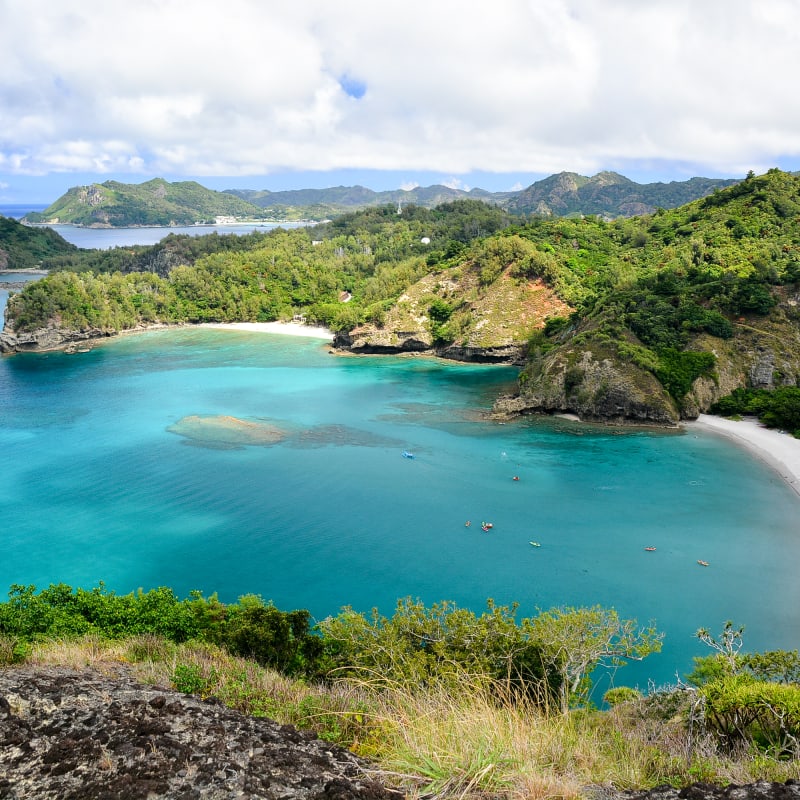
Ogasawara Islands (UNESCO)
Take a trip to the Galapagos Islands of Asia
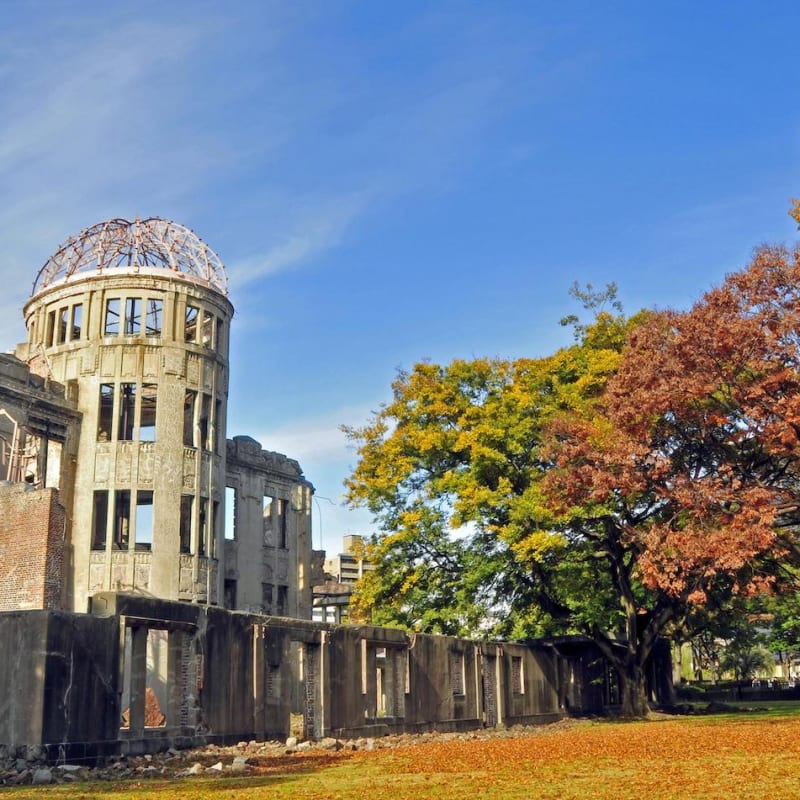
Hiroshima Peace Memorial (UNESCO)
A structural reminder of a painful past
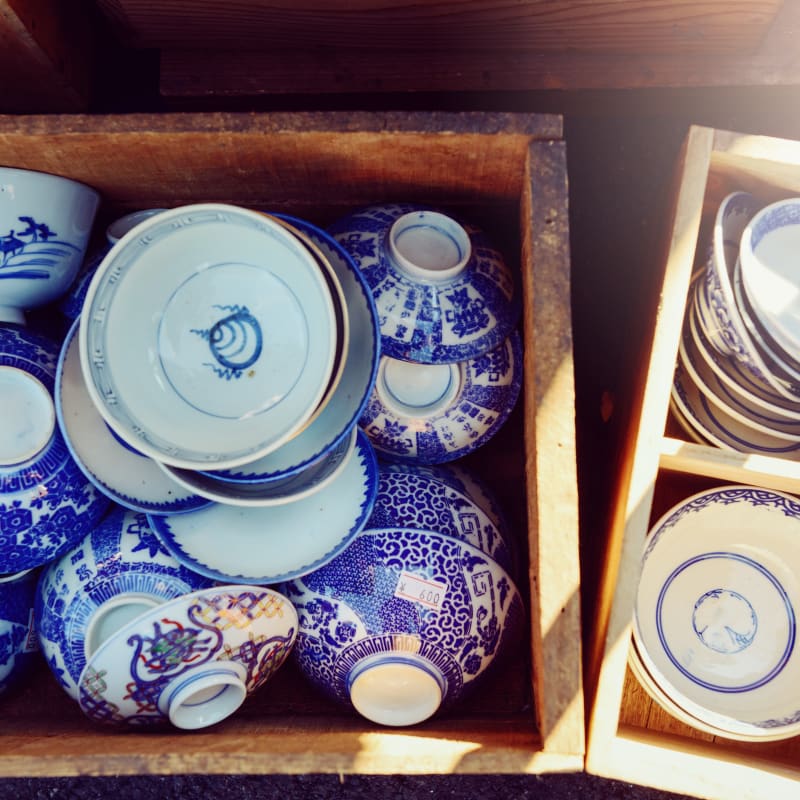
Antiques & Flea Markets in Japan
Setagaya Boroichi Market—Tokyo
Top Recommendations
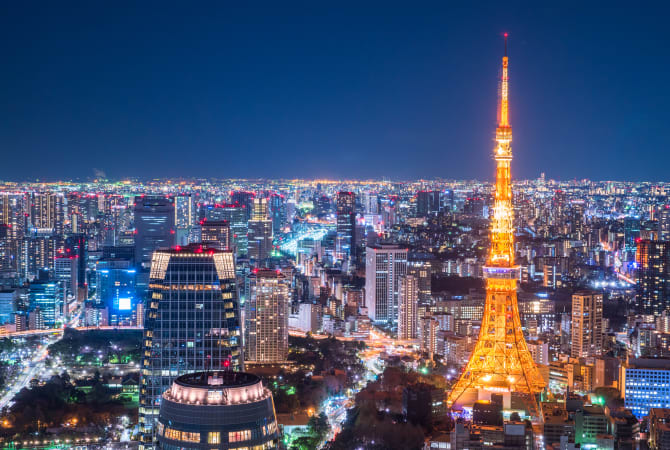
Itineraries

Onsen in Tohoku
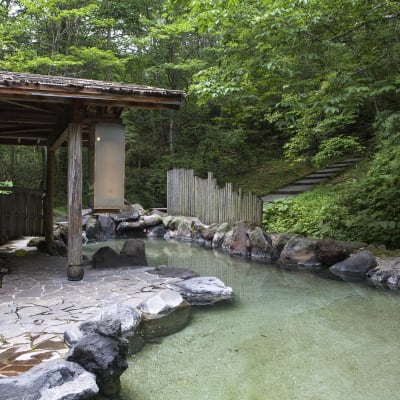
Castles in Kanto
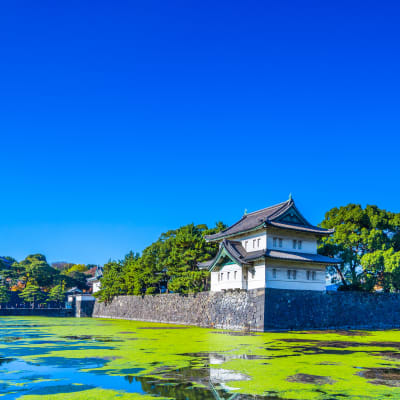
Please Choose Your Language
Browse the JNTO site in one of multiple languages
- Saudi Arabia
Saudi Crown Prince MBS Postpones Japan Trip Amid Concerns About Saudi King’s Health

S audi Arabia’s Crown Prince Mohammed bin Salman postponed a planned four-day trip to Japan due to concerns over the king’s health, Japan’s top government spokesman Yoshimasa Hayashi said.
The trip set to start Monday was to have been the crown prince’s first visit to Japan since 2019. Hayashi said at a regular news briefing in Tokyo the two nations would reschedule the visit, without indicating when.
The kingdom’s de facto ruler was due to meet Prime Minister Fumio Kishida during the trip, according to Japan’s government. MBS, as the Saudi crown prince is known, was also expected to meet Japanese companies and sign an agreement to strengthen supply chains for liquid hydrogen, Japanese media reported.
News of the cancellation came after the state-run Saudi Press Agency reported that Prince Mohammed’s father, King Salman Bin Abdulaziz, is suffering from inflammation of the lung and will be receiving antibiotics at Al Salam Palace in Jeddah.

MBS, who handles most day-to-day affairs in the kingdom, is next in line to the throne.
The crown prince had also planned to visit Japan in late 2022, but the trip was canceled shortly before he was scheduled to arrive.
Japan and Saudi Arabia have been forging deeper ties in recent years. Kishida traveled to the kingdom in July and announced the launch of an initiative on green energy projects, including hydrogen and ammonia. He also urged the crown prince to increase investment in semiconductors and batteries.
Technology has recently been an emerging area of cooperation, with Saudi Arabia’s wealth fund among the largest shareholders in gaming giant Nintendo Co. The kingdom’s new investment firm, Alat, is partnering with SoftBank Group Corp. to construct a fully automated manufacturing and engineering hub to build industrial robots in Riyadh.
The countries in December held high-level official meetings, including one between Japan’s trade minister Ken Saito and his counterparts, to make progress on a “Saudi-Japan Vision 2030” agreement that’s meant to boost investment between the nations.
The cooperation is part of the wider Vision 2030 agenda, Prince Mohammed’s plan to transform the Saudi economy by investing trillions of dollars in everything from tourism to electric vehicles and semiconductors.

Prior to news of the king’s deteriorating health condition, MBS met with U.S. National Security Advisor Jake Sullivan on Sunday to discuss the war in Gaza and the “nearly final version” of draft strategic agreements between Saudi Arabia and the U.S., SPA said.
The two countries are nearing a historic pact that would offer the kingdom security guarantees and lay out a possible pathway to diplomatic ties with Israel, Bloomberg has reported.
The crown prince also recently met with regional leaders including Jordan’s King Abdullah II on the sidelines of the 33rd Arab Summit in Bahrain.
More Must-Reads from TIME
- The New Face of Doctor Who
- Putin’s Enemies Are Struggling to Unite
- Women Say They Were Pressured Into Long-Term Birth Control
- Scientists Are Finding Out Just How Toxic Your Stuff Is
- Boredom Makes Us Human
- John Mulaney Has What Late Night Needs
- The 100 Most Influential People of 2024
- Want Weekly Recs on What to Watch, Read, and More? Sign Up for Worth Your Time
Contact us at [email protected]
Choose your own adventure: Where to go and how to save on summer vacations

Revenge travel is so last year.
“It's not necessarily about just getting out of the house anymore,” said Sydney Stanback, Global Insights and Trends lead at Pinterest, which has seen more than 1 billion travel searches and more than 10 billion travel saves over the past year.
Sure, many of the usual suspects are once again among the most popular destinations across multiple search engines this year, but she said this summer, “It's more so about traveling with intention.”
According to NerdWallet’s Summer 2024 Travel Report , 45% of Americans plan to take a trip requiring a hotel stay or flight this summer with expenses averaging just under $3,600. A fifth of those travelers expect to go into debt to pay for vacations.
Here’s what to consider when booking a summer trip, including where to go, when to travel and how to save:
Learn more: Best travel insurance
What is the best place to travel in summer?
The answer is subjective, especially this summer.
“Everyone's kind of choosing their own adventure based off of what their needs are for travel,” Stanback said.
Pinterest’s Summer 2024 Travel Report found summer travelers are most interested in adventure, exploring mysterious or uncharted destinations, and rest. Searches for “quiet life” jumped 530%, but that doesn’t mean the same thing to everyone.
“My mother actually just took a yoga retreat to Panama,” Stanback said. “That's what she needed to do in order to get the rest that she needed and the well-being that she needed. But for me, when I think of rest and restoration, I simply think about going to a beach spa and just sitting and being by myself.”
Solo travel remains popular. Solo travel searches reached an all-time high in Google in January, but again, not for everyone.
“For Gen Z specifically, that need is to gather and reconnect with their community because they were in isolation for so long and during very meaningful moments in their lives,” Stanback said. She noted group travel and road trips are of keen interest to Gen Z.
“It's not necessarily about traveling and going out and going to restaurants and going to bars and clubs,” she added. “We actually see that a lot with younger generations. They’re kind of stepping away from that and really considering their well-being when they're taking time off.”
Where do most tourists go in summer?
Expedia’s Summer Outlook and Google Flights identified the same cities among their most searched summer 2024 destinations based on flights, though rankings varied by platform.
Top 5 domestic destinations
◾ Orlando, Florida
◾ Los Angeles
◾ Las Vegas
Top 5 international destinations
◾ Cancun, Mexico
◾ Paris, host of the Summer Olympics
Allianz Partners found slightly different results in their analysis of “more than six million flight itineraries for trips between five and eight days in length for travel booked between Memorial Day weekend and Labor Day.”
Instead of LA and Vegas, Allianz named Boston and Honolulu among this summer’s top five domestic destinations. Internationally, San Jose del Cabo, Mexico; Oranjestad, Aruba; and Punta Cana, Dominican Republic, made Allianz’s top five, instead of Rome, Paris and Tokyo.
“I am expecting crowds to rival last summer's in popular overseas cities,” Expedia’s travel expert Melanie Fish said, noting how places like Barcelona and Venice are trying to curb overtourism. “They're trying fees and if that's not enough, they're going to have to go even further.”
How can I save on a trip?
Summer trips are already costly for many travelers. “Americans with household income under $100,000 accounted for nearly half (46%) of intended leisure travel spend in summer 2023,” according to Deloitte’s Facing travel’s future report from April.
Expedia’s Fish shared five tips for booking summer 2024 vacations:
◾ Bundle your trip. Booking airfare and a hotel at the same time can earn you deep discounts.
◾ Travel midweek or later in the summer if it's an option. You'll save money and save yourself from fighting crowds.
◾ Fly early in the day … The early bird who takes the first flight of the day will typically get a better price and a lower chance of delays and cancellations.
◾ Book once, earn twice. You can stack rewards from your travel credit card (and) your airline.
◾ Just go. Don't pressure yourself to create the trip of a lifetime … Do it in a bite-sized chunk if possible.
'Expensive in every way': What travelers should expect this summer
How far ahead should I book travel?
“The sweet spot is now,” Fish said. “We're within that 21- to 60-day pre-travel window to save around 15% on airfare, so now is the time to plan. That means ready, set, but maybe wait until August to actually go.”
She said travelers can save an average of $250 on international flights if they wait until the peak summer travel season passes.
“It's 15% cheaper on average to fly domestically in August versus June, 30% cheaper to fly to Europe in late summer, and 55% cheaper to fly to Mexico and the Caribbean in August,” she said. “Of course, August is peak hurricane season , so that has something to do with that price dip.”

IMAGES
VIDEO
COMMENTS
The official site of Japan National Tourism Organization is your ultimate Japan guide with tourist information for Tokyo, Kyoto, Osaka, Hiroshima, Hokkaido and other top Japan holiday destinations. We offer travel information to make your Japan travel more comfortable and enjoyable.
Planning a Trip to Japan? Share your travel photos with us by hashtagging your images with #visitjapanjp. Travel Japan - The Official Japan Guide. None U.S.-JAPAN TOURISM YEAR 2024. None Go Beyond Japan's Major Cities: Hokuriku Shinkansen Extension in 2024. None
Two times of year I would avoid for a vacation to Japan are: Golden Week in early May - In 2024, Golden Week is from 27 April - 6 May. This is a series of national holidays so many Japanese travel domestically, trains and hotels book up, and popular spots will be extra crowded. New Year - Late December to early January.
Japan Itinerary: One Week. Day 1 & 2: Tokyo. Chances are you'll be starting your trip in Tokyo, since it's home to the country's biggest international airport. If your trip is seven days long, activate your JR Pass right away, so that you can take advantage of the free JR trains that run through the city.
This information-packed Japan trip planner has the answers to all your questions. Find out the best places to visit, which Japanese foods to try, and how to ride the bullet trains. All the research is done for you to assist in planning a trip to Japan. If you have been dreaming of traveling to Japan and want to get serious about planning your ...
Japan Travel is your official guide for local info and things to do in Japan. Find hotel, restaurant, and tour information with our Japan map or plan your next Japan trip with our tourism guides.
A Japan Rail (JR) pass is exclusively available to tourists, and grants you unlimited travel on JR trains within Japan, including the world-famous bullet trains. Depending on your itinerary, this will save you time and money vs buying individual train tickets within Japan. But importantly, you must purchase the pass before you arrive in Japan.
It is easy to feel a little overwhelmed and disoriented when you visit Japan for the first time, so find out the basics before you fly and get acquainted with the country through our helping you plan guide. Learn a little more about Japan's customs, culture and Wi-Fi connectivity, as well as its seasonal weather, geography and luggage delivery ...
This four-day Osaka and Kyoto itinerary is a perfect add-on to any trip to Japan. Tips & Advice. Traveling to Japan using points and miles 2024. Apr 26, 2024 • 12 min read. History. Japan's best food and drink experiences. Apr 2, 2024 • 10 min read. Destination Practicalities.
Best of Japan in 14 days. Day 1 and 2 - Tokyo. Spend three nights in Tokyo. Consider our suggested Tokyo itineraries. Day 3 - Side trip to Nikko. In a side trip from Tokyo, visit Nikko, home to Toshogu, Japan's most lavishly decorated shrine and the mausoleum of Tokugawa Ieyasu, the founder of the Tokugawa shogunate. Day 4 - Tokyo to Hakone.
This 2 weeks in Japan itinerary will cover: How to explore Japan on your own with confidence; Quick links to useful resources; Complete 2 Weeks in Japan itinerary, day-by day guide including costs, things to do, where to stay, where to eat & getting around for:. DAYS 1-5: Tokyo (including day trip to Mt Fuji) DAYS 6-10: Kyoto DAYS 10-12: Hiroshima (including day trip to Miyajima)
Japan travel news. Sponsored Story. An off-the-beaten-path nature retreat out of Tokyo. 3 days in Nishiizu, a scenic town in western Izu Peninsula. Travel News. A new 'corner store' opened in Harajuku this April. Sponsored Story. Exploring Nihonbashi - the historic business district in the heart of Tokyo.
Here's our pick of the 10 best places to visit in Japan. 1. Tokyo. Best for contemporary culture. Tokyo is a city forever reaching into the future, pushing the boundaries of what's possible on densely populated, earthquake-prone land, and building ever taller, sleeker structures. It's Japan's top spot for contemporary art and architecture ...
What To Expect. Language: The national language of Japan is Japanese. English is widely spoken, especially in the tourism industry. Currency: The official currency is the Japanese Yen (JPY). Credit Cards & ATMs: In big cities like Tokyo and Osaka, you can pay for pretty much everything with your card.However, you'll need cash for entrance fees, local markets and if you're planning to ...
Whether you're planning to visit Japan's Golden Route (Tokyo - Kyoto - Osaka - Hiroshima) or wander off the beaten path, my Japan travel guides cover all the bases. Create your own Japan travel story by exploring lesser-known cities, enjoying cultural experiences and discovering hidden gems to enrich your trip. Golden Route. Off the ...
5. Learn how to use a bidet toilet. Called "washlets," Japan's high-tech, electronic bidet toilets will wash and dry your delicate parts with the touch of a button. (Don't worry about any language barrier; the pictograms on the buttons are easy to understand). Other toilet customs in Japan might throw you for a loop.
No trip to Japan would be complete without visiting the Japan's capital city, Tokyo. As polite, respectful, and mild-mannered as the Japanese are, it can also be a fun and quirky culture. Tokyo is definitely evidence of this. This huge city is full of light, color, and craziness all around mixed in with serious businessmen and women going to ...
Taxes. Living Costs. Garbage Disposal. Banking. Postal Services. See All. Essential and practical information for traveling in Japan - plan your trip to Japan.
Welcome to The Navigatio! Whether you're planning your first trip to Japan or your twentieth, you've come to the right place. On this website, we share free itineraries, accommodation guides and general tips for visiting Japan. Free Japan guides and itineraries to help plan your perfect trip. Accommodation guides for Japan's main ...
Book a trip to Japan that includes a taste of Japanese history at the elegant and popular Kyoto Aoi Festival. Every May 15th, the Kyoto Aoi Festival features a large parade of over 500 people dressed in Heian Period (794-1185) styled clothing to illustrate a graceful procession. We provide several tours that highlight one of Kyoto's most ...
The next step in our 14-day Japan itinerary is Matsumoto. There're many Samurai Castles scattered across Japan and you should visit at least one during your 14 days in Japan. We opted for the castle in Matsumoto as it is one of the few remaining original castles. Most other castles you will see are reconstructions.
Japan is now so popular that it grabs 29% of all U.S.-based searches for trips to Asia and 8% of all international searches for the summer this year, according to the airfare-tracking site Hopper.
Saudi Arabian Crown Prince Mohammed bin Salman has postponed his visit to Japan scheduled to begin on Monday due to King Salman's health issue, Japan's Chief Cabinet Secretary Yoshimasa Hayashi said.
The trip set to start on May 20 was to have been the Crown Prince's first visit to Japan since 2019. Mr Hayashi said at a regular news briefing in Tokyo that the two nations would reschedule the ...
Japan, famously polite, struggles to cope with influx of tourists. Huge numbers of visitors are causing chaos at such popular spots as Mount Fuji and Kyoto, leading to some extreme measures to ...
Discover the many events and festivals, temples and castles, theme parks and hot springs, beaches and outdoor activities that Japan has to offer. Whether you're passionate about sports, an art lover, a nature enthusiast, a history buff, a foodie, or just looking to relax on a beach, the possibilities for your Japan journey are endless.
The trip set to start Monday was to have been the crown prince's first visit to Japan since 2019. Hayashi said at a regular news briefing in Tokyo the two nations would reschedule the visit ...
Expedia's Fish shared five tips for booking summer 2024 vacations: Bundle your trip. Booking airfare and a hotel at the same time can earn you deep discounts. Travel midweek or later in the ...
CNN —. Saudi Arabia's King Salman bin Abdulaziz Al-Saud has a lung inflammation and is receiving treatment, Saudi news agency SPA said, prompting the country's Crown Prince to postpone a ...